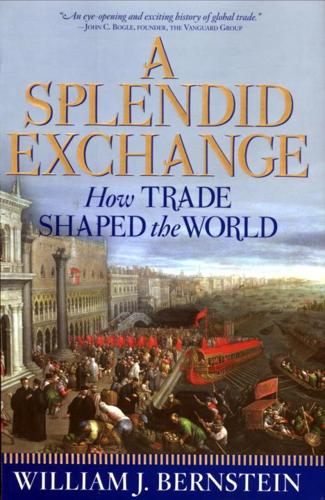
A Splendid Exchange: How Trade Shaped the World
by
William J. Bernstein
Published 5 May 2009
The Egyptians mounted a vigorous response and forced Reginald back north. In 1249, events at Damietta, on the Nile delta, demonstrated the crucial importance of the spice trade in the Muslim world. In that year, Christian forces captured the town, and so anxious were the Ayyubid Egyptians to regain this strategic trade outpost that they offered to return Jerusalem to the Christians in exchange; the offer was refused.4 When it came to the spice trade, Christian and Muslim alike usually favored Mammon over God. During the fifteenth and sixteenth centuries, another quest drove Europeans toward the East: the search for an Asian Christian ally in the fight against the Saracen.
…
Venetian merchants had reacted with horror at the news of da Gama's return to Portugal, and at first saw their worst fears confirmed: Venice's spice trade did plummet, by perhaps as much as three-fourths, in the decades following 1498. The falloff was not, however, the result of a Portuguese blockade. Rather, large amounts of spices were now flowing around the Cape to Lisbon, then onward to Antwerp, the main Habsburg trading hub in an increasingly prosperous northern Europe. When da Gama left Lisbon on his first voyage in 1497, Europeans consumed less than two million pounds of pepper per year. By 1560, this amount had grown to between six and seven million pounds.63 Perhaps even more detrimental to the Venetian spice trade than competition from the Cape route was the deterioration in relations between Venice and the ever-expanding Ottomans.
…
All came to naught; the Portuguese simply did not have the manpower, the ships, or the money to retain control of the spice trade. One Portuguese observer noted that Javanese ships freely carried cloves, nutmeg, and mace through the Strait of Malacca to Aceh, where "we cannot stop them doing, as we have no fleet in those parts to prevent them.""' Worse, an alternative route south of Sumatra, then north through the Sunda Strait (between Sumatra and Java) lay entirely beyond the reach of the Portuguese. As Portugal's dominance of the spice trade gradually deteriorated during the sixteenth century, things were looking up for it, at least temporarily, farther east.

Wonderland: How Play Made the Modern World
by
Steven Johnson
Published 15 Nov 2016
The profits Venice made from the sale of its legendary Murano glass were an afterthought compared to the tariffs it charged as a middleman in the spice trade. By the 1600s, the direct sea routes to India had already started to lower the price of pepper on the open market, though it was still precious enough to inspire a new age of empires and global corporations. The Dutch East India Company—the very first corporation to issue publicly traded stock—was founded to exploit the immense profitability of the spice trade. Modern economists estimate that the Dutch markup on nutmeg and clove was as much as 2,000 percent. The taste for pepper and other spices also provoked some of the darkest chapters in the history of globalization.
…
It seems preposterous to say it, but one of the key events that brought an end to the Dutch financial empire of the seventeenth and eighteenth centuries was a one-armed Frenchman stealing a handful of seeds halfway around the globe. Poivre’s triumph, in a way, marked the beginning of the end for the spice trade, or at least the spice trade in its grandiose phase. Before long, descendants of Poivre’s initial batch of clove seedlings would be employed to launch a thriving clove business in Madagascar and Zanzibar. “Nearly two hundred years later,” Turner observes, “the flow of spices across the Indian Ocean has been reversed, with Indonesia now a net importer of cloves.”
…
(In a sense, it is a history that follows Brian Eno’s definition of culture as “all the things we don’t have to do.”) Looking at history through this lens demands a different emphasis on the past: exploring the history of shopping as a recreational pursuit instead of the history of commerce writ large; following the global path of the spice trade instead of the broader history of agriculture and food production. There are a thousand books written about the history of innovations that came out of our survival instincts. This is a book about a different kind of innovation: the new ideas and technologies and social spaces that emerged once some of us escaped from the compulsory labor of subsistence.
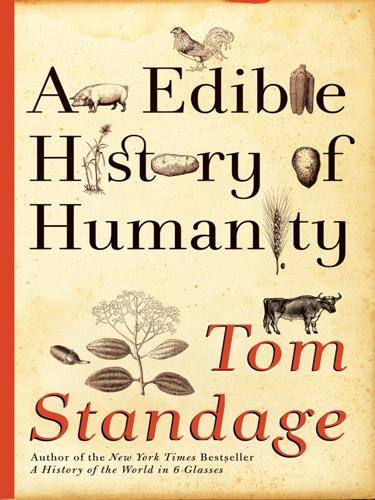
An Edible History of Humanity
by
Tom Standage
Published 30 Jun 2009
The pursuit of spices is the third way in which food remade the world, both by helping to illuminate its full extent and geography, and by motivating European explorers to seek direct access to the Indies, in the course of which they established rival trading empires. Examining the spice trade from a European perspective might seem strange, given that Eu rope occupied only a peripheral position and a minor role in the trade in ancient times. But this served to heighten the mystery and the appeal of spices to Europeans in particular, ultimately prompting them to uncover the true origins of these strangely appealing dried roots, shriveled berries, desiccated twigs, slivers of bark, and sticky bits of gum—with momentous consequences for the course of human history. THE SPICE TRADE’S WORLD-WIDE WEB When a ship was found stranded on the shores of the Red Sea, around 120 B.C., there appeared at first to be no survivors.
…
“The sole pleasing quality is its pungency—and for the sake of this we go to India!” Similarly, Pliny’s contemporary Tacitus worried about Roman dependence on “spendthrift table luxuries.” When he wrote these words around the end of the first century A.D., however, the Roman spice trade was already past its peak. As the Roman Empire declined and its wealth and sphere of influence shrank in the centuries that followed, the direct spice trade with India withered in turn, and Arab, Indian, and Persian traders reasserted themselves as the main suppliers to the Mediterranean. But the spices continued to flow. A Roman cookbook from the fifth century A.D., “The Excerpts of Vinidarius,” lists more than fifty herbs, spices, and plant extracts under the heading “Summary of spices which should be in the house in order that nothing is lacking in seasoning,” including pepper, ginger, costus, spikenard, cinnamon leaf, and cloves.
…
Equating local food with virtuous food, today as in Roman times, is far too simplistic. The rich history of the spice trade reminds us that for centuries, people have appreciated exotic flavors from the other side of the world, and that meeting their needs brought into being a thriving network of commercial and cultural exchange. Hunter-gatherers were limited to local food by definition; but if subsequent generations had limited themselves in the same way, the world would be a very different place today. Admittedly, the legacy of the spice trade is mixed. The great spice-seeking voyages revealed the true geography of the planet and began a new epoch in human history.
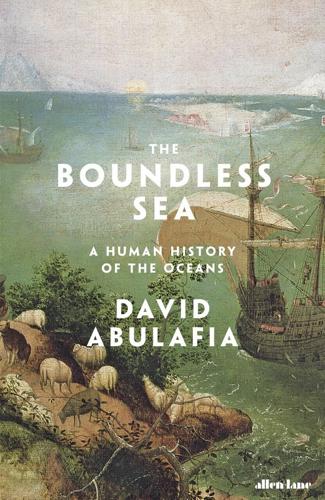
The Boundless Sea: A Human History of the Oceans
by
David Abulafia
Published 2 Oct 2019
They were well aware that their spice trade would never flourish if they had to compete with rivals. Although they were successfully bringing large cargoes of pepper and other spices to Europe, for sale in Lisbon and Antwerp, the quality did not compare well with spices carried through the Red Sea – the long journey in ships filling up with bilge water did not improve the quality of their goods. Therefore they sought as total a monopoly as possible, an enormously ambitious aim in view of the logistical difficulties they faced in maintaining contact across the Atlantic and the Indian Ocean. As far as the spice trade was concerned, the struggle against first the Mamluks and then the Ottomans in the Indian Ocean was a life-and-death struggle.
…
One Mamluk victory, over the fleets of Almeida, the first Portuguese governor of India, in 1508, was followed by humiliation of the Mamluk navy at Diu in northern India, even though several Indian princes had sent aid to the Mamluks.13 In 1511 the Venetians even urged the Mamluks to make common cause with the Ottomans against the Portuguese, for they could see that the lack of wood for shipbuilding was, as ever in Egyptian history, causing problems; so they invited the Mamluks to obtain wood from the Turks, while offering supplies from Venice as well.14 There were two issues here: the exclusion of the Portuguese from the spice trade, but also the defence of the Red Sea, for it was becoming increasingly obvious that the Portuguese hoped to force their way into the Red Sea and gain mastery over the spice trade through Alexandria via the back door. The route around Africa was only an expedient. Once they had conquered the Indian Ocean – as if that were at all possible – the Portuguese dreamed of restoring the Red Sea route, abandoning the costly and dangerous Cape route, and becoming lords of not just Alexandria but Jerusalem.
…
A basic 10 per cent tax was to be levied instead. The aim was to make Egypt an attractive place to trade in spices, now that Europe was receiving eastern spices via the Cape route as well as through the Red Sea. As a result income from the spice trade held up well, and even in 1527 the Ottoman administration in Egypt seems to have been making more money out of this trade than the Portuguese Crown. The idea that from da Gama’s time onwards the spice trade through the Red Sea dried up, and that Portugal seized a commanding lead at the very start of the sixteenth century, is a myth.27 Lower taxes were a wise means of attracting business; but first of all one had to make sure the goods reached Alexandria.
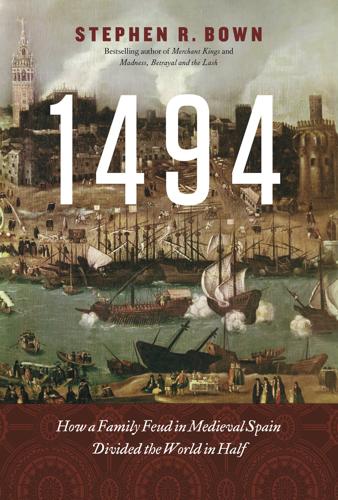
1494: How a Family Feud in Medieval Spain Divided the World in Half
by
Stephen R. Bown
Published 15 Feb 2011
But during the sixteenth century, Ferdinand Magellan circumnavigated the world for the first time to settle the dispute over where the line of demarcation ran on the far side of the world; English privateers, inspired by the legendary mariner Francis Drake, preyed on Spanish shipping in the Caribbean and the Pacific; and the Dutch Republic fought Spain and Portugal both for independence and for control over the global spice trade. Just as technology and knowledge were about to open the waterways of the world after Columbus’s heroic voyage, the Treaty of Tordesillas sought to restrict access to two favoured nations. It began the epic struggle for the freedom of the seas: would global travel and commerce be controlled by autocratic decree, or would seas be open to the ships of any nation?
…
But by the fifteenth century the period of peace was ending. In 1453 Constantinople fell to the invading armies of Mehmet the Conqueror using giant siege cannons (ironically, crafted by dissatisfied European church-bell makers), essentially ending the Christian Byzantine Empire and shutting off the spice trade to Europe. Soon popes and senior church officers were attempting to raise interest throughout Europe in another crusade in retaliation. Mehmet’s invasion escalated the simmering quarrel between Islam and Christianity, and as before Spain’s Jews suffered from both directions. During the time of the Black Death in the fourteenth century, Jews were massacred by Christian mobs in Toledo, Seville, Valencia and Barcelona.
…
He read many other geographical works as well, and in the margins scrawled myriad thoughts that preoccupied him at the time: “All seas are peopled by lands”; “Every country has its east and west”; and “The Ocean Sea is no emptier than any other.” He later claimed, “I have made it my business to read all that has been written on geography, history, philosophy and other sciences.” Columbus also wrote letters to Paolo dal Pozzo Toscanelli, a respected Florentine physician, mathematician and astronomer who was the head of a large family spice-trading operation with contacts in the east. In 1474 Toscanelli had laid out his theory of a narrow Atlantic Ocean separating Spain from the Indies and had forwarded his views in a letter to the Portuguese king, Afonso V. “The end of the habitable earth towards the Orient and the end of the habitable earth towards the Occident are near enough, and between them is a small sea.”
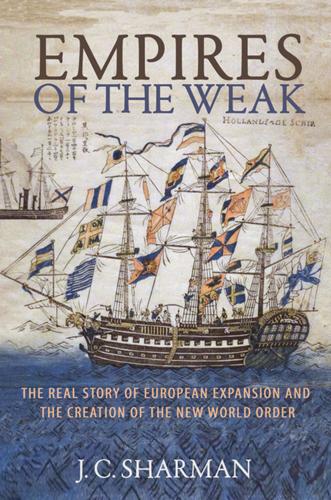
Empires of the Weak: The Real Story of European Expansion and the Creation of the New World Order
by
Jason Sharman
Published 5 Feb 2019
Together with an ability to sail more closely into the wind, heavier guns and sturdier ship construction were a recurring theme in Western naval victories over more numerous Asian opponents at sea.100 It is important to note, however, that at this time the Portuguese ships were not the broadside-firing warships that became the European standard for centuries after, and their cannons were mounted on the decks and fired stone rather than iron balls.101 Perhaps the area of greatest Portuguese naval effort was that of their least success, as they sought to fight their way through the Red Sea to destroy the Muslim holy sites.102 Here the Mamluks, and from 1517 the Ottomans who had defeated the Mamluks and incorporated their territory, were consistently able to use their galley fleets in defensive victories in 1513, 1517, and 1541, facing the largest Portuguese forces assembled in the Indian Ocean.103 Despite being synonymous with backwardness in the eyes of some scholars,104 in shallow waters galleys proved superior to oceangoing sailing ships.105 Furthermore, together with increasingly capable naval forces from the sultanate of Aceh in North Sumatra, in the mid-1500s Muslims were able to re-open the maritime spice trade to the Red Sea via the Maldives, in defiance of Portuguese efforts to enforce a monopoly.106 The resulting decline in Crown revenue directly fed through to a military weakening of the Estado da India in the late 1500s.107 The seriousness of this problem can be appreciated by the fact that in 1518 the Portuguese king gained more revenue from the spice trade than from all sources in metropolitan Portugal itself.108 From the mid-1600s the Portuguese suffered a grave threat to their Western flank from the sultan of Oman, whose success in capturing Portuguese strongholds on the Swahili Coast has already been described.
…
The Portuguese at Sea The Portuguese drive to the East around the Cape of Good Hope was motivated in part by the continuing quest to find Christian allies with whom to effect a giant pincer movement against the Muslims in the Holy Land.93 The Portuguese kings entertained millenarian ambitions of destroying the holy sites of Islam, capturing Jerusalem, and precipitating the second coming of Christ. The second, more mundane goal was to take over the spice trade, useful not just in monetary terms to fund various crusading ventures, but also to deny this wealth to Muslims (and their Venetian collaborators). The initial Portuguese approach towards the smaller polities of the west coast of India was very similar to that employed in East Africa: finding local divisions and rivalries, and offering an alliance to whichever faction looked more pliable.
…
An early concerted Muslim effort to expel the Portuguese from the region was defeated in a crucial naval battle off the city of Diu in Gujarat in 1509.98 A Portuguese fleet of 18 ships with 1500 troops and 400 Cochinese Indian allies faced an unlikely coalition of the Egyptian Mamluks, unused to war at sea, who had enlisted the aid of the Ottomans, the Venetians (who were worried that their hold on the spice trade was threatened by the Portuguese), together with the Indian rulers of Gujarat and Calicut (where Vasco da Gama had first made landfall in India). The battle closely fits the script of the military revolution. The Portuguese were out-numbered in both men and ships. The Egyptian-Ottoman galleys had fewer and smaller guns compared with the Portuguese, and the Indian dhows none.
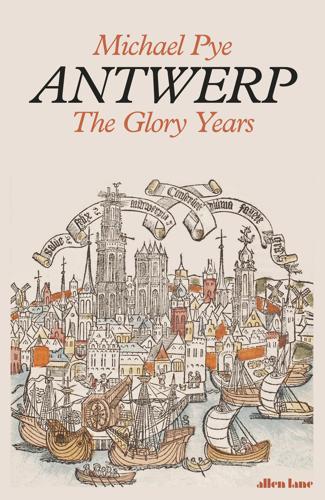
Antwerp: The Glory Years
by
Michael Pye
Published 4 Aug 2021
De Negro went into hiding, his books and his goods were confiscated, and the merchant Erasmus Schetz, whose dealings went from Brazil to Russia, was set to work out his net worth. Like a true friend, Schetz reported that de Negro had nothing except liabilities. The authorities lost interest. That left Diogo Mendes, the most powerful of the Portuguese merchants in Antwerp and the main man in the spice trade in the North, along with his Italian partners. He was charged with monopolizing the spice trade and keeping out local merchants, which was true although not quite what it seemed. Thirty years earlier, Schetz himself along with other Netherlandish merchants had managed a monopoly to buy spices directly from the Portuguese for gold, silver and quicksilver.
…
It is a snapshot of the city’s reputation over at least half a century. In town you get paid for lying, for sneering at respectable people, a bonus for a really good fart. Money grows on trees. Luilekkerland describes an information city where ‘true tidings’ of the world are printed and sold on the street, where the spice trade is so well settled that the edible palaces have nutmegs for nails, where it snows sugar; and where debt and credit are everything although your debts will vanish if you just go away for a year and quietly eat roast chicken. Money and reality are living apart. All the success of the town is mocked.
…
Schools did not teach boys much of what they would need in the outside world, either, so the girls’ disadvantage is subtler than it might seem. In the real world, women were stallholders or shopkeepers, one in ten of the city’s merchants. Anna Janssen was a printer, Jozina van Dale loaned money to entrepreneurs. There were women, not many, in the spice trade and in marine insurance. One woman sold armour. There were at least two female surgeons: Lynken van Gelder and the widow of Jan de Menuwey. The city could hardly work without them. Women didn’t paint, but Catharina van Hemessen, daughter of an Antwerp mannerist painter, did. She had to do unwomanly things, looking at naked men and dissecting corpses to learn anatomy.
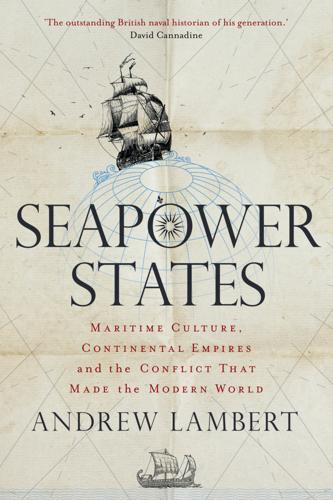
Seapower States: Maritime Culture, Continental Empires and the Conflict That Made the Modern World
by
Andrew Lambert
Published 1 Oct 2018
His critical methodology served the needs of practical men.61 The text was an official document, disseminating ideas and authorities to support the revival of Venetian maritime enterprise. Fortunately for Venice the spice trade did not collapse after the Portuguese rounded Africa’s Cape of Good Hope; Lisbon monopolists preferred to keep prices high, allowing Venice to remain competitive for another century. The Venetian spice trade ended when the Dutch seized the Spice Islands early in the seventeenth century, monopolising supply from plantation to market. Soon Venetians bought their spices in Amsterdam, and shifted to other trades, including exporting wine and dried fruit from their remaining Greek islands to northern Europe.
…
Venice worked hard to maintain a diffuse market with multiple sources of supply, and to prevent monopolistic suppliers pushing up prices and squeezing margins. It did not allow religious difference to interfere with business, trading with Byzantium and Mamluk Egypt. The recovery of St Mark from Alexandria in ad 828 reflected close economic ties with the Abbasid governor.14 Both Venice and Egypt, which also controlled Syria, profited from the spice trade, opposing Turkish warlords and Mongol emperors. Little wonder that Cairo, the largest city where they traded, influenced Venetian architecture.15 The development of navigational science, using charts and compasses, opened up the Mediterranean for winter and night navigation in the years after 1300, doubling the number of annual Greek convoys.
…
By the 1290s a century of almost unbroken success had introduced a note of unreality into Venetian thinking. The arrogance and ambition of a city at the peak of its relative power was reflected in the suggestion that long-term economic success would be secured by placing a Christian Fleet in the Indian Ocean, breaking Muslim control of the spice trade.16 After 1300 Venetian economic imperialism survived rebellions in subject territories and defeats on the Italian mainland. Trade privileges and control of the Adriatic ensured the money kept flowing. Genoa, a dynamic maritime republic on the Ligurian coast, emerged as a serious economic rival after 1250, exploiting a more flexible, less statist political structure.
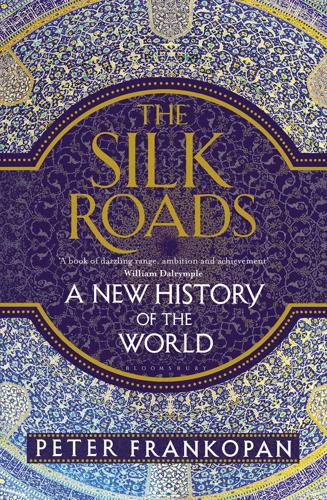
The Silk Roads: A New History of the World
by
Peter Frankopan
Published 26 Aug 2015
Subrahmanyam, ‘Commerce and Conflict: Two Views of Portuguese Melaka in the 1620s’, Journal of Southeast Asian Studies 19.1 (1988), 62–79. 31Atwell, ‘Time, Money and the Weather’, 100. 32P. de Vos, ‘The Science of Spices: Empiricism and Economic Botany in the Early Spanish Empire’, Journal of World History 17.4 (2006), 410. 33Umar ibn Muammad, Raw al-āir fī nuzʹhat al-khāir, tr. R. Burton, The Perfumed Garden of the Shaykh Nefzawi (New York, 1964), p. 117. 34F. Lane, ‘The Mediterranean Spice Trade: Further Evidence of its Revival in the Sixteenth Century’, American Historical Review 45.3 (1940), 584–5; M. Pearson, Spices in the Indian Ocean World (Aldershot, 1998), p. 117. 35Lane, ‘Mediterranean Spice Trade’, 582–3. 36S. Halikowski Smith, ‘“Profits Sprout Like Tropical Plants”: A Fresh Look at What Went Wrong with the Eurasian Spice Trade, c. 1550–1800’, Journal of Global History 3 (2008), 390–1. 37Letter of Alberto da Carpi, in K. Setton, The Papacy and the Levant, 1204–1571, 4 vols (Philadelphia, 1976–84), 3, p. 172, n. 3. 38P.
…
Casale, ‘The Ottoman Administration of the Spice Trade in the Sixteenth Century Red Sea and Persian Gulf’, Journal of the Economic and Social History of the Orient 49.2 (2006), 170–98. 41L. Riberio, ‘O Primeiro Cerco de Diu’, Studia 1 (1958), 201–95; G. Casale, The Ottoman Age of Exploration (Oxford, 2010), pp. 56–75. 42G. Casale, ‘Ottoman Guerre de Course and the Indian Ocean Spice Trade: The Career of Sefer Reis’, Itinerario 32.1 (2008), 66–7. 43Corpo diplomatico portuguez, ed. J. da Silva Mendes Leal and J. de Freitas Moniz, 14 vols (Lisbon, 1862–1910), 9, pp. 110–11. 44Halikowski Smith, ‘Eurasian Spice Trade’, 411; J. Boyajian, Portuguese Trade in Asia under the Habsburgs, 1580–1640 (Baltimore, 1993), pp. 43–4, and Table 3. 45Casale, ‘Ottoman Administration of the Spice Trade’, 170–98; also see here N.
…
42 The Ottomans were proving to be formidable rivals: another Portuguese observer wrote in 1560 that every year millions of pounds of spices were reaching Alexandria (the most important of the emporia in the eastern Mediterranean for goods from the east); ‘it is no wonder’, he moaned, ‘that so little comes to Lisbon’.43 By this time, profits from the spice trade were already beginning to slow noticeably, prompting some Portuguese to turn away from spices and invest in other Asian goods and products, most notably cotton and silk. This shift became marked around the end of the sixteenth century by which time textiles were being shipped in ever increasing volumes back to Europe.44 Some contemporary commentators suggested (and some modern scholars agree) that this was the result of high levels of corruption among Portuguese officials involved in the spice trade and the effect of poor decisions on the part of the crown, both when it came to claiming an excessively high tax on imports and when it came to setting up an inefficient distribution network in Europe.
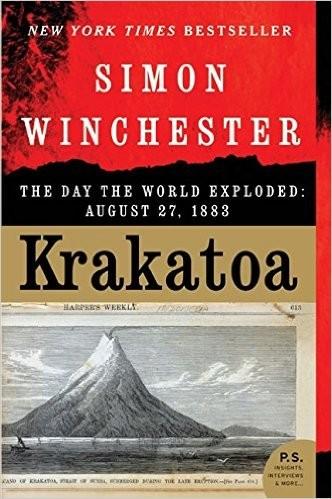
Krakatoa: The Day the World Exploded
by
Simon Winchester
Published 1 Jan 2003
) – from ‘Admiralty Sailing Directions’, NP 36, Indonesia Pilot, Volume 1, London, 1999,1 Though we think first of Java as an eponym for coffee (or, to some today, a computer language), it is in fact the trading of aromatic tropical spices on which the fortunes of the great island's colonizers and Western discoverers were first founded. And initially supreme among those spices was the one rather ordinary variety that remains the most widely used today: pepper. Piper nigrum, Syzygium aromaticum* and Myristica fragrans – pepper, clove and nutmeg – were the original holy trinity of the Asian spice trade. Each was familiar to, and used by, the Ancients. Two hundred years before the birth of Christ, for instance, the Chinese of the Han Dynasty demanded that their courtiers address their emperors only when their breath had been sweetened with a mouthful of Javanese cloves, the ‘odoriferous pistils’, as they were later more widely known.
…
The change began somewhat inauspiciously in late June of 1596, when a ragged flotilla of four Dutch vessels dropped anchor in the roads off the north-western Javanese pepper port of Banten and invited the Portuguese spice merchants, whose godowns had long lined the shore, to come aboard. The voyage had been sponsored by the nine merchant-adventurers of the Compagnie van Verre of Amsterdam – in translation simply ‘The Long Distance Company’ – who had been inspired by the idea of blazing a spice trade-route to the Indies. It had not gone at all well. Cornelis de Houtman, who commanded the venture, turned out to be both an inept navigator and a cantankerous martinet. Not that he had been wanting of preparation: along with his brother Frederik he had already spent two years in Lisbon gathering intelligence on the Portuguese operations in the East.* His expedition was grandly titled Eerste Scheepvart, ‘The First Ship Sailing’.
…
But for all the blundering tragedy of that first Dutch expedition, the achievement could hardly be gainsaid: for it did bring back those few pots of precious black Java pepper. And that, it seemed to the nine sponsoring merchants of Amsterdam, was all that really counted. The Portuguese stranglehold on Oriental spice trading could in theory at long last be broken. Other, better-furnished expeditions could now venture out and obtain more pepper, clove and nutmeg (and its attendant aril, called mace, as well as the cinnamon that grew close by) and thus help make the mercantile barons of Holland richer than could be imagined.
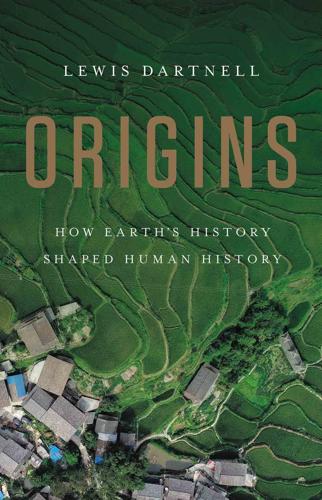
Origins: How Earth's History Shaped Human History
by
Lewis Dartnell
Published 13 May 2019
The Strait of Malacca was one of the most important waterways in the Eastern Hemisphere as it served as the crucial marine thoroughfare between the Indian Ocean and South China Sea.40 The port’s heaving markets burst with a huge diversity of trade goods: wool and glass from Venice, opium and incense from Arabia, porcelain and silks from China, and of course the spices from the Bandas and the Moluccas.41 Malacca was one of the most cosmopolitan places on Earth, its port a forest of masts where the dhows from the Indian Ocean berthed alongside the junks from China and the Spice Islands, and with a population larger than Lisbon speaking scores of different languages that could be heard over the din of the markets.42 It was the riches of this spice trade that provided the major draw for European navigators trying to find new sea routes to the east at the end of the fifteenth century.§ And when they arrived, they strove to dominate this expansive South East Asian trade network by capturing key features of the geography of the seas: naval chokepoints.
…
Most crucially, they attempted to capture the naval chokepoints of Bab-el-Mandeb, Hormuz and Malacca to seal off the maritime routes to all but their own shipping, controlling trade across the whole reach of the Indian Ocean by commanding just a few critical locations in the geography of the seas.§ And naval chokepoints are just as strategically crucial today. It is no longer the spice trade that gives them acute geopolitical importance but the transport of another resource of global significance. Oil today occupies almost half of the total shipping tonnage around the world,49 and its continued unrestricted flow is critical to the current global economy. BLACK ARTERIES Oil not only fuels our modern world, but lubricates machinery, coats our roads, provides plastic and pharmaceuticals, and is used in the production of artificial fertilisers, pesticides and herbicides that help produce the food we need.
…
It was here that the Portugese first tasted the wealth that might be acquired if they could outflank the Muslim world and carry this gold and slave trade on their own ships.1 They began to explore the West African coastline to find the sources of the gold, and before long some mariners contemplated the possibility of sailing all the way round the southern tip of Africa to reach India and the riches of the spice trade.2 Then, by the late fifteenth century, the kingdoms of Castile and Aragon united into what would become modern Spain. In 1492 they completed the Reconquista of the peninsula when they captured the last Moorish stronghold of Granada, and joined Portugal in seeking new overseas trade routes and territories through the Atlantic.† VOLTA DO MAR In the Atlantic, at some distance from the European and African coasts, lie four small archipelagoes: the Canary Islands, the Azores, Madeira, and the Cape Verde Islands.
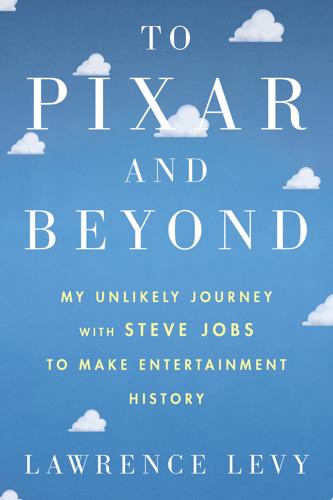
To Pixar and Beyond
by
Lawrence Levy
These exotic substances were immensely popular in Europe, used to flavor and preserve foods, make medicines and aphrodisiacs, gifts for royalty, and even currency for trading. A huge spice trade existed to source these rare substances from exotic, faraway places like the Banda Islands, ten tiny volcanic islands in the Banda Sea, at that time the only place in the world where nutmeg trees grew. It could take two years for a shipping expedition to journey there and back. To assure the success of these expeditions, governments granted legal monopolies to trading companies that would permit those companies to become the sole source of spice trading. One of these companies, founded in 1602, was the Dutch East India Company.
…
Worse, what if someone in the Dutch East India Company did know that the fleet’s cargo had been stolen by pirates and kept that information quiet in order to sell stock in the company at a high price to buyers who did not have that information? This problem, today infamously known as insider trading, is as old as the spice trade. In the few hundred years after the Dutch East India Company went public, the many scandals and frauds in trading stock had a minimal impact on the economy as a whole. Investment was limited to the tiny sliver of the population with money to invest. But all that changed in the 1920s. In the prosperity that followed World War I, the growing American middle class invested in the stock markets on a scale never before seen.
…
See also Frozen Aladdin, 44, 64–65, 96, 141, 158 Beauty and the Beast, 44, 64–65, 141, 166 creative decisions in, 170 Lion King, The, 44, 56, 65, 96, 141, 158, 166 Little Mermaid, The, 141, 168 Mary Poppins, 68 Pocahontas, 141 Return of Jafar, The, 173 Snow White and the Seven Dwarfs, 67 Disney Company production agreement Beauty and the Beast, compensation comparison, 44 exclusivity and compensation, 41–44 terms and prospects, 46–47, 173 terms for sequels, 46 Toy Story and, 40 Disneyland television show and theme park, 67 Docter, Pete, 171, 197 as member of Pixar’s brain trust, 164 DreamWorks, 168, 179 E Ecstatic Spontaneity (Guenther), 234 Eisner, Michael, 179 consideration for board, 110 relationship with Jobs, 177, 217–18 renegotiation, 181, 183–87, 193–94 steps down from Disney, 218 Electronics for Imaging, 3, 21–22 IPO, lessons of, 101 Robertson Stephens, lead investment bank, 126 Elegant Universe, The (Greene), 234 Ellis, Lisa, 203 Ellison, Larry, 157 Emeryville, 246–47 Engel, Tim, 56–57 entertainment business, understanding, 66, 73 Entertainment Industry Economics (Vogel), 73–74, 133, 159–60 Eshoff, Marty, 203 F film distribution, business of, 174 film lab, 16–17 Finding Nemo, awards, 214–15 Fischer, Sam, 40–46, 75–76, 110, 184–85 Fitzimmons, Ken, 156 Fortune, 200 Frozen, 222 G Garfield, Jay, 235 Geffen, David, 179 Golden Globe, Toy Story 2, 215 Goldman Sachs, 115–17 Grammy Award, A Bug’s Life, 215 Graziano, Joe, 112 Greene, Brian, 234 Guenther, Herbert, 234 Guggenheim, Ralph, 19 H Hambrecht and Quist, second bank on Pixar IPO, 137 Hanks, Tom, 18 Hollywood opening, 150 Hannah, Rachel, 166, 203 home video, business of, 64–65, 70 Toy Story 2 direct to, 173 Huxley, Aldous, 235 I If You Want to Write (Ueland), 235 Iger, Bob, 218–21 Incredibles, The, awards, 214–15 initial public offering (IPO) explanation of, 99, 100–101 insider trading and, 103 history in spice trade in seventeenth century, 101–3 preparation for, prospectus, 138 Sonsini for advice, 106–8 two or three banks, 136–37 investment banks and bankers. See also Cowen and Company; Hambrecht and Quist; Robertson Stephens, investment bank company value, assessment of, 114–15, 118, 138 definition, 114 role in IPO, 114 trading price decision, 144–46 J Jennings, DJ, 203 Jobs, Steve, 3, 49, 137 Apple, relationship with, 3–4, 88, 108, 208–11 CEO, Pixar, 24, 210–11 commercial failures, 4, 11, 210 contact with, phone and face to face, 31–32, 50 Disney renegotiation and, 186 Disney’s largest stockholder, 221 Fortune story of Pixar, 200–202 interview and plan for Pixar, 5–6 office at Pixar, 57–58, 62 personal checks for Pixar shortfall, 10–11, 36 Pixar, retention of controlling stock, 88 Pixar IPO and, 5, 79, 100–101, 104, 127, 137 Pixar road show and, 147 “reality distortion field,” 6 relationship with Pixar, 27, 57–58, 210 Toy Story opening box excitement, 155 Jobs’s vision for Pixar aspirations for Pixar, 5, 31, 47, 65–66 difficulty in succeeding, 74 hurdles for Pixar to succeed, 79 process of, 66 return to Apple and, 209 risk and raising capital for filmmaking, 77 “John Lasseter School of Animation Direction,” 165 Juskiewicz, Christina, 239 K Kabloona (Poncins), 235 Katzenberg, Jeffrey, 49, 167, 168, 179 Kerwin, Pam, 19, 26–27, 62–63 RenderMan manager, 30–31 video games, possibility of revenue from, 79 Knick Knack, 38 Krantz, Matt, 214 Kübler-Ross, Elisabeth, 235 L LA Times, 157 box office numbers, 158 Lasseter, John, 13, 17–18, 94, 164, 168–72 chief creative officer, 221 film credit question, 205 Hollywood opening, 150 Pixar’s brain trust, 164–65 leverage and negotiation, definitions of, 175 Levy, Hillary, 20, 39, 47, 50, 58, 59, 60, 63, 89, 105, 138, 151, 154, 208, 230, 237, 238, 240, 243, 247 education and career, 7 faith in Steve Jobs, 25 family ties and, 7 Juniper founding, 239–40 Levy, Jason, 7, 55, 59, 64, 149–52, 247 Levy, Jenna, 63, 151, 247 Levy, Lawrence accident (automobile) and insight on Pixar, 242–43 accident (rollerblading) and change in attitude, 58–62 background, 5, 7 CFO of Pixar, 159 comparison to Marlin in Nemo, 223–24 at Electronics for Imaging, 22–23 executive vice president and CFO, Pixar, 24 family history, 228–29 interviews with Jobs and Pixar, 5, 20 joining Pixar’s board of directors, 232 Juniper founding, 239–40 personal relationship with Jobs, 63, 208, 211–13, 247–48 religion and philosophy, 229 sabbatical to study Eastern ideas, 231–32 Levy, Sarah, 7, 56, 64, 148, 149–52, 247 live-action film business, 68–70 Pixar, consideration of, 71–72 Lucas, George, 4, 9, 93 Lucasfilm history of, 9 imaging computer, 4 Pixar, computer graphics division, 140 Luxo Jr., 13, 37–38 Best Animated Short Film nomination, 38 M Magic Mountain, The (Mann), 229 Martin, Eff, 117, 118, 122 McArthur, Sarah, 166 McCaffrey, Mike, 131–32, 148, 156 Mickey Mouse, 67 Microsoft, 34–36 Middle Way, 235–36, 245 relationship to Pixar, 243–44, 246 Monsters, Inc., awards, 214–15 Moore, Gary, 184 Moore, Rob, 187–88, 191, 195, 197, 198 Morgan Stanley, 115–17 Moriarty, Pam, 239 Morrissette, Adele, 135–36 Murti, T.R.V., 235 N Nagarjuna, 229 Nelson, Randy, 166 Netscape IPO, 104 Morgan Stanley and, 115, 117 trading price, 143–45 New York Times, 198–99, 217–18, 221 Newman, Randy, 18–19 NeXT Computer, 3–4 Apple purchase, 207 commercial failure, 11, 210 O Ohlone Tribe, 82, 244 On Death and Dying (Kübler-Ross), 235 P Parikh, Milan, 203 Perennial Philosophy, The (Huxley), 235 Phillips, Diane, 203 photoscience, computer images to film, 54–55 Pixar company culture, 27–28, 83, 85 e-mail to the company, 232–33 employee feelings toward Jobs, 28, 202 location and physical facility, 6, 9, 246–47 “Production Babies,” 63, 151 story team, 164–65 Pixar, business plan brand recognition, 98, 174 expansion and talent recruitment, 165–66 film release schedule, 97–98, 164, 165 increased share of profits, 96, 174 production costs to be paid by Pixar, 96–97 Pixar, business side, 19–20.
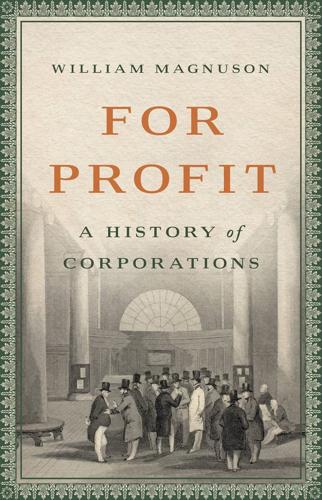
For Profit: A History of Corporations
by
William Magnuson
Published 8 Nov 2022
The final blow to the East India Company’s spice trade came in 1623, when a Japanese ronin (or masterless samurai) employed by the Dutch East India Company in Ambon, in modern-day Indonesia, informed the Dutch that British traders were conspiring to seize the Dutch company’s fortress there. The Dutch proceeded to arrest, torture, and execute ten British East India Company employees. The Ambon massacre sounded a wake-up call to the East India Company’s board, which reluctantly concluded that the company had little recourse against the attack and no hope at all of ever wresting control of the spice trade from the Dutch.14 Undaunted, the East India Company pivoted to a new region that appeared potentially even more profitable than the Spice Islands: India.
…
The journey marked the beginning of a new era in European history, when explorers navigated the globe in search of the riches they presumed to be found across the seas. For the next century, the Portuguese would dominate trade with the East, bringing such exotic commodities as pepper, nutmeg, and clove to European markets.6 English merchants knew that the spice trade was lucrative, but just how lucrative remained obscure until a lucky break in 1587 shed new light on the Portuguese monopoly. In that year, Sir Francis Drake, England’s government-backed pirate, was out raiding the Spanish coastline in an effort to slow down the construction of the Spanish Armada of King Philip II.
…
In England, they could be sold for £1.60 and £16, respectively, a return of 32,000 percent. Early investors consistently earned high returns. Between 1601 and 1612, returns on capital were 155 percent. Cloves from the third voyage made profits of over 200 percent. Between 1613 and 1616, company returns were 87 percent.13 But the company’s spice trade was always hamstrung by the presence of an even larger and more vicious competitor: the Dutch East India Company. The Dutch had arrived in the East Indies before the British—an early Dutch voyage arrived in 1596—and they fiercely protected their turf, excluding the British East India Company from the islands and hindering its trade at every turn.
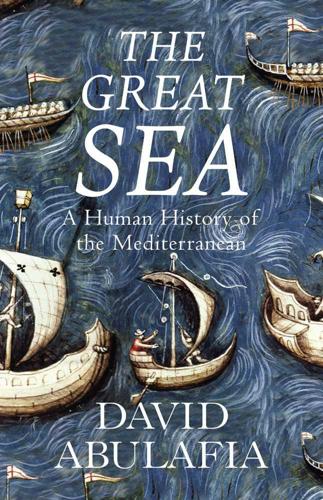
The Great Sea: A Human History of the Mediterranean
by
David Abulafia
Published 4 May 2011
Indian goods became familiar in Alexandria, while the Ptolemies profited from access to African and Indian elephants for their army.21 An Egyptian papyrus lists the cargo of a vessel named the Hermapollo, which had arrived from India carrying 60 cases of spikenard, 5 tons of general spices, and 235 tons of ivory and ebony.22 The great Mediterranean spice trade had been founded, and Alexandria would remain its most important centre even beyond the opening of the Cape route to the Indies by the Portuguese at the end of the fifteenth century. The product that came to dominate the business of Alexandria was, however, grain. This was partly so that the city itself could be fed.
…
Trading networks that had carried a single individual all the way from southern Spain to India were now fragmented in two: the Mediterranean sector was Christian, the Indian Ocean sector was Muslim. The Fatimid rulers and their successors, the Ayyubids (of whom the most famous was the Kurdish warlord Saladin), became increasingly interested in the revenues they could raise from trade. This was not out of a mercantilist spirit, but because they saw the spice trade, in particular, as a source of funds to cover their war expenses. During twelve months in 1191–2 the so-called one-fifth tax (khums) raised 28,613 gold dinars from Christian merchants trading through the Nile ports. This means that exports through these ports reached well over 100,000 dinars even at a difficult time – Saladin had captured Jerusalem, the Third Crusade was under way and the Italian cities, as well as southern French and Catalan towns, were sending fleets to the Holy Land.34 Despite the name of the tax, it was levied at a higher rate than one-fifth on spices such as caraway, cumin and coriander, for the Egyptian government was well aware how keen the western Europeans were to acquire these products.
…
These fines developed into a tax on trade, and produced handsome revenues: in 1302 fines on trade with Alexandria accounted for nearly half the king’s recorded revenues from Catalonia. Far from suppressing the trade, the Aragonese kings became complicit in it.33 Naturally the Catalans wanted to challenge the Italian monopoly over the spice trade to the East. Yet their real strength lay in the network they created in the western Mediterranean. Catalans, Pisans and Genoese jostled in the streets of the spacious foreign quarter of Tunis, a concessionary area full of fonduks, taverns and churches. Access to the ports of North Africa meant access to the gold-bearing routes across the Sahara; into these lands, the Catalans brought linen and woollen cloths from Flanders and northern France and, as their own textile industry expanded after 1300, fine cloths from Barcelona and Lleida.

Connectography: Mapping the Future of Global Civilization
by
Parag Khanna
Published 18 Apr 2016
CHAPTER 10 HOPSCOTCH ACROSS THE OCEANS AN EMPIRE OF ENCLAVES Four hundred years before Halford Mackinder issued his famous dictum declaring the Central Asian “Heartland” the geographic pivot of history, the Spanish conquistador Hernán Cortés made an equally extravagant claim in 1524: “He who controls the passage between the oceans may consider himself master of the world.”1 By the early sixteenth century, Manila was the thriving midway point for Seville’s round-the-world trade as its merchants raised revenue for the Crown through heavy trade with Ming China and carried eastward through the East Indies across the Pacific Ocean to Acapulco in Mexico (then called New Spain) and back across the Atlantic to Spain. King Philip II’s armada of two-thousand-ton oceangoing galleons maintained a monopoly over the “spice trade” that also included silk, porcelain, pearls, and other luxury goods. Five centuries after the Spanish galleon trade, mankind is once again a coastal maritime civilization with dense connectivity among dozens of major ports enabling greater volumes of commodities and goods flows. But who controls the passages between the oceans?
…
The Dutch, by contrast, operated in a less brutal and more commercial fashion. The Dutch East India Company, chartered in 1602, is considered the world’s first multinational corporation that issued stocks and bonds to finance expeditions. In its efforts to undermine Portuguese control of the lucrative spice trade and Spanish control over its Low Countries (modern-day Belgium), the Dutch deployed more merchant ships (five thousand) and traders (almost one million) over a two-hundred-year period than the rest of Europe combined. Indeed, the Iberian-Dutch and Anglo-Dutch rivalries were about controlling not the oceans but access to ports east of Suez.
…
As these countries learn to better connect their geography—with China’s help—they threaten Singapore’s centrality. Like highways and railways, energy pipelines and canals embody how countries are remapped to enhance the efficiency of global connectivity. Oil- and gas-rich Malaysia is growing so quickly (while its supplies decrease) that it is already a natural gas importer. In 2013, near the old spice trade center of Malacca on the Andaman Sea (Indian Ocean), Malaysia opened an LNG importing and regasification terminal to rival Singapore as a gas-trading hub. One year later, it announced construction of a petrochemical complex just east of Singapore in Johor (Pacific Ocean). While Malaysia is trying to displace Singapore in energy markets, an ambitious scheme for a canal across Thailand’s narrow Isthmus of Kra could cut Singapore and the Strait of Malacca off entirely.
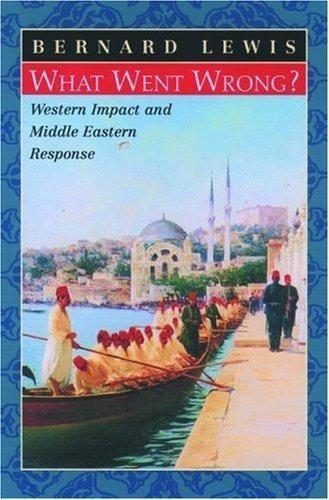
What Went Wrong? Western Impact and Middle Eastern Response
by
Bernard Lewis
Published 1 Jan 2001
When the Portuguese navigator Vasco da Gama sailed round Africa into the Indian Ocean at the end of the fifteenth century, he opened a new sea route between Europe and Asia, with far-reaching consequences for the Middle East, first commercial, later also strategic. As early as 1502, the Republic of Venice, the prime European beneficiary of the eastern spice trade, sent an emissary to Cairo to warn the sultan of Egypt of the danger that this new sea route presented to their commerce. At first, the sultan paid little attention, but a sharp decline in his customs revenues focused his attention more sharply on this new problem. Egyptian naval expeditions against the Portuguese in eastern waters were 13 WHAT WENT WRONG?
…
See education; universities science, 6–7, 45, 46, 57, 66; and education, 76; Islamic contributions to, 78–81; and research, 129; and secularism, 104 secularism, 106–112, 116, 157; and Christianity, 96–99; and difference of belief, 100–105; and tolerance, 113–115 self-determination, 115 Selim I, Ottoman sultan, 9 Selim II, Ottoman sultan, 11 Selim III, Ottoman sultan, 28, 31, 40, 42–43 Servetus, Michael, 79 shar§‘a (Holy Law), 53, 86, 100, 106; constitutional status of, 108 Sherley, Anthony and Robert, 12 Sh§‘a, 100 Shi‘ism, 8 shoes, 138–139 S¹l¹hdar, 16 Sitvatorok, Treaty of (1606), 12 Slade, Aldophus, 133 slavery, 11–12, 26, 54, 69; abolition of, 71, 85–87, 92 slaves, 67–69, 83, 84; black, 85, 88, 93 socialism, 62, 158 Sokollu Mehmed Pasha, 11 sovereignty, national, 48, 61 Soviet Union, 62. See also Russia space, measurements of, 117, 119– 120, 127 spice trade, 13, 14 sports, 147–148 state, 99, 101, 103, 111, 116 status, 84 students, 56 Sublime Porte, 143 sugar, 50 Süleyman, Ottoman sultan, 11, 14, 123 sundial, 123 Sunnis, 100 supremacy, 84, 93 synagogue, 98 syphilis, 7, 39 T T~j es-Saltana, 95 Taq§ al-D§n, 80, 123–124 Tasvir-i Efka-r (newspaper), 70 Tatars, 4–6, 8 taxation, 91, 126–127 teacher(s), 53, 54, 99 179 INDEX technology, 125, 142–144 telegraph, 51–52 Télémaque (Fénélon), 146 telescopes, 127 theater, 129, 141–142, 149 theocracy, 97, 113–114 Thirty Years War, 16, 52 time, 117–118, 120–126; and modernization, 129–132; and music, 127–129 tolerance, 33–34, 36, 113–115, 154 Tott, Baron de, 29 translation, 39, 42, 50, 56, 113; and cultural change, 139–140, 145– 147, 149 Translation Office, 45 travel, 25–29, 35–39, 48, 120, 122 Treaty of Bucharest (1812), 33 Treaty of Carlowitz (1699), 17, 18– 19, 23, 29 Treaty of Gulistan (1813), 34 Treaty of Küçük Kaynarca (1774), 21, 23 Treaty of Passarowitz (1718), 20 Treaty of Radzin (1681), 16 Treaty of Sitvatorok (1606), 12 Treaty of the Pruth (1711), 20 Treaty of Turkmanchay (1828), 34 Trinity, Holy, 67 Tunis, 57, 88 Turkey, 12, 20–21, 33, 48; and alliance with England, 22; and cultural change, 141–142, 149 Turkish republic, 72, 106, 108 Turkmanchay, Treaty of (1828), 34 Turks, 6, 16, 35–36, 104–105 ulema (doctors of Holy Law), 21, 43, 53, 92, 102 unbelievers, 67–69, 83, 84, 114.
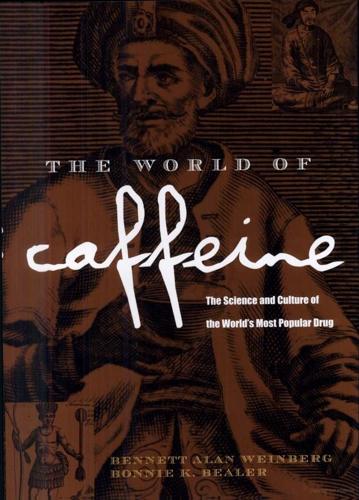
The World of Caffeine: The Science and Culture of the World's Most Popular Drug
by
Bennett Alan Weinberg
and
Bonnie K. Bealer
Published 5 Dec 2000
In the ensuing halfcentury, “Hershey bar” became almost a generic name for any chocolate candy bar. In the venerable tradition of using caffeinated seeds and nuts as the basis of highenergy foods, the United States issued chocolates as rations to American soldiers during World War II. 5 the caffeine trade supplants the spice trade Tea and Coffee Come to the West After Marco Polo returned to tell tales of his travels in Cathay (1275–94), Venice, increasingly a center of trade and a crossroads for traffic from the East, grew eager to learn more of strange peoples and their strange goods. However, vividly detailed and inclusive as it was, Marco Polo’s book does not mention tea, save in connection with the imperial tax that was levied on its use, reporting that, in 1285, a Chinese minister of finance promulgated an arbitrary increase.
…
After this early notice in Venice, tea was not mentioned again in any known Italian book until 1588, when a 1565 letter of the Florentine Father Almeida was published by the famous author Giovanni Maffei as part of his voluminous collection of traveler’s papers, Four Books of Selected Letters from India (Florence). Early Portuguese Explorers Encounter Tea At the same time that the Venetian travelers were making their way back and forth overland to the East in furtherance of the ancient spice trade, the Portuguese explorers, excited by the example of Columbus, were searching for new ways to get to new places. In 1497 Vasco da Gama discovered a sea route to the Indies by way of the Cape of Good Hope. In consequence, the Portuguese were able to expand their explorations eastward, relying on superior armaments to displace the Arab seamen who until then had controlled the exotic trade from India and beyond.
…
The Dutch East India Company, chartered in 1602, investigated the possibility of importing coffee to Holland from the port of Aden in the Yemen as early as 1614, but failed to do so. Venice and Marseilles, from vantages convenient to the Mediterranean, were the first ports to receive commercially imported coffee from Arabia. The first major cargo of coffee beans was shipped into Venice in 1624, most likely having entered the stream of commerce as part of the spice trade from Constantinople, which included silks, perfumes, dyes, and other exotic items. Around 1650 several Marseilles merchants began bringing coffee home from the Levant. Within a few years, a syndicate of pharmacists and merchants instituted commercial imports from Egypt and were soon followed in this business by their counterparts in Lyon.
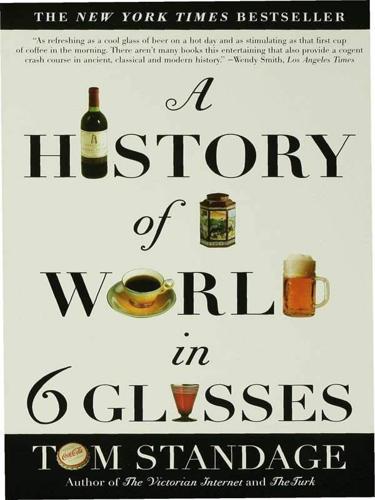
A History of the World in 6 Glasses
by
Tom Standage
Published 1 Jan 2005
He also encouraged his captains to embrace advances in navigation such as the magnetic compass, along with trigonometry and the astrolabe, an invention which had, like distillation, been introduced by Arabs into western Europe. The chief motive of the Portuguese, Spanish, and other explorers of the time was to find an alternative route to the East Indies, in order to circumvent the Arab monopoly on the spice trade. Ironically, their eventual success was due in part to the use of technology provided by the Arabs. The Atlantic islands of Madeira, the Azores, and the Canaries proved to be ideal places to produce sugar, another Arab introduction. But growing sugarcane required enormous amounts of water and manpower.
…
Coffee beans were treated before being shipped to ensure they were sterile and could not be used to seed new coffee plants; foreigners were excluded from coffee-producing areas. First to break the Arab monopoly were the Dutch, who displaced the Portuguese as the dominant European nation in the East Indies during the seventeenth century, gaining control of the spice trade in the process and briefly becoming the world's leading commercial power. Dutch sailors purloined cuttings from Arab coffee trees, which were taken to Amsterdam and successfully cultivated in greenhouses. In the 1690s coffee plantations were established by the Dutch East India Company at Batavia in Java, an island colony in what is now Indonesia.
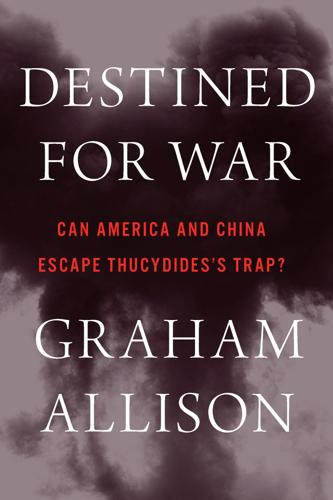
Destined for War: America, China, and Thucydides's Trap
by
Graham Allison
Published 29 May 2017
It used this power to construct a “borderless” world order, which enabled the tiny Netherlands to translate high productivity and efficiency into outsized political and economic power. Thus, lucrative trading routes gave the publicly owned Dutch East India Company a leading role in the global spice trade. Arguably the Continent’s most advanced seafaring people, the Dutch built a navy to match their massive overseas trading empire. It would not be long, however, before England, seeking to expand its own share of trade and control of the seas, established rival colonies on the American eastern seaboard. The English also began clawing for access to the spice trade with their own East India Company, while expanding their naval fleet (from 39 major ships in 1649 to 80 by 1651) to protect English shipping.
…
Determined to enrich his country and crown, the great prince Henry the Navigator supported the development of new seafaring technologies, including the fast and nimble caravel, improved rigging for boats, and detailed maps.2 Pioneering the field of nautical science to great effect, Portugal essentially “launched the movement of European expansion.”3 In 1488, its explorers were the first Europeans to round the Cape of Good Hope in search of trade routes to India and its lucrative spice trade. During most of the fifteenth century, Portugal had a free hand to establish its predominance because the kingdom of Castile was preoccupied by internal conflicts.4 But that changed in 1469 with the marriage of the eighteen-year-old Isabella of Castile to the seventeen-year-old Ferdinand of Aragon, merging the two kingdoms into a unified Spain.
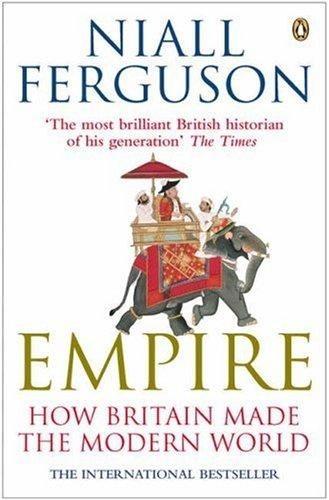
Empire: How Britain Made the Modern World
by
Niall Ferguson
Published 1 Jan 2002
By 1596 they had firmly established themselves at Bantam, on the island of Java, from where the first consignments of Chinese tea destined for the European market were shipped in 1606. Moreover, their company was a permanent joint stock company, unlike the English company, which did not become permanent until 1650. Despite being founded two years after the English one, the Dutch company was swiftly able to dominate the lucrative spice trade with the Moluccan islands of Indonesia, once a Portuguese monopoly. The Dutch scale of business was simply bigger: they were able to send out nearly five times as many ships to Asia as the Portuguese and twice as many as the English. This was partly because, unlike the English company, the Dutch company rewarded its managers on the basis of gross revenue rather than net profits, encouraging them to maximize the volume of their business.
…
The idea that flows of goods to London were somehow distinct from flows of goods to Amsterdam was absurd, given the proximity of the Dutch and English markets to one another. In establishing itself at Surat on the north-west coast of India in 1613, the English East India Company was very obviously trying to win a share of the lucrative spice trade. If the volume of spice exports was inelastic, then it could only succeed by taking business away from the Dutch company. This was indeed the assumption: in the words of the contemporary political economist William Petty, there was ‘but a certain proportion of trade in the world’. The hope of the East India Company director Josiah Child was ‘that other Nations who are in competition with us for the same [business], may not wrest it from us, but that ours may continue and increase, to the diminution of theirs.’
…
Sophisticated financial institutions had made it possible for Holland not only to fund its worldwide trade, but also to protect it with first-class naval power. Now these institutions were to be put to use in England on a much larger scale. The Anglo-Dutch merger meant that the English could operate far more freely in the East. A deal was done which effectively gave Indonesia and the spice trade to the Dutch, leaving the English to develop the newer Indian textiles trade. That turned out to be a good deal for the English company, because the market for textiles swiftly outgrew the market for spices. It turned out that the demand for pepper, nutmeg, mace, cloves and cinnamon – the spices on which the Dutch company’s fortunes depended – was significantly less elastic than the demand for calicoes, chintz and cotton.
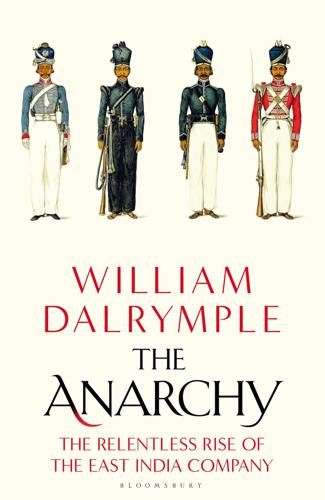
The Anarchy: The Relentless Rise of the East India Company
by
William Dalrymple
Published 9 Sep 2019
Fitch was helped to escape by Fr Thomas Stevens, an English Jesuit long based in Goa, who stood surety for him, and he duly succeeded in travelling through the rich Sultanates of the Deccan to the sixteenth-century Mughal capital of Agra, and hence, via Bengal, to the Moluccas.13 On his return to London three years later, he regaled the city with his traveller’s tales and became such a celebrity that his ship was mentioned by Shakespeare in Macbeth: ‘her husband is to Aleppo gone, master o’ th’ Tiger’. But while Fitch brought back many enticing details of the pepper trade, he had arrived home with no actual pepper.14 The Levant Company’s next attempt to break into the spice trade, this time by the sea route, was even more of a disaster. Sir James Lancaster’s 1591 voyage into the Indian Ocean was the first English attempt to reach the East via the Cape. Both its funding, and its armed shipping, was provided by Auditor Smythe and his Levant Company. But in the event, only one of Lancaster’s four ships, the Edward Bonaventure, made it back from the Indies, and that on a skeleton crew.
…
As they told Elizabeth’ s Privy Council in their petition, they were moved ‘with no less affection to advance the trade of their native country than the Dutch merchants were to benefit their commonwealth … For the honour of our native country and the advancement of trade … to set forth a voyage this present year to the East Indies.’19 Fully one-quarter of the subscribers to the voyage, and seven of the original fifteen directors of the enterprise, were the Levant Company grandees. They feared, with reason, that the Dutch had ruined their existing investment in the spice trade, and they provided not only one-third of the subscription, but also many of the ships and the offices where the initial meetings took place. ‘The Company of Merchants of London trading to the East Indies’ was thus originally an outgrowth of the Levant Company and a mechanism for its shareholders to extend its existing trade to the Far East by developing the sea route, and to raise as much new capital as possible.20 This was the reason Smythe and his associates had decided to found a new company, and open it to any subscriber who would contribute, rather than merely extend the remit of their existing monopoly.
…
This opened several decades of conflict between England and Holland in which, despite occasional successes, the English consistently came off worse. At one point a Dutch fleet even sailed up the Thames and attacked Sheerness, destroying the ships in Chatham and Rochester dockyards.42 After several more bruising encounters, the EIC directors decided they had little option but to leave the lucrative Spice Islands and their aromatic spice trade to the Dutch and focus instead on less competitive but potentially more promising sectors of the trade of Asia: fine cotton textiles, indigo and chintzes. The source of all three of these luxuries was India. On 28 August 1608, Captain William Hawkins, a bluff sea captain with the Third Voyage, anchored his ship, the Hector, off Surat, and so became the first commander of an EIC vessel to set foot on Indian soil.43 India then had a population of 150 million – about a fifth of the world’s total – and was producing about a quarter of global manufacturing; indeed, in many ways it was the world’s industrial powerhouse and the world’s leader in manufactured textiles.

Losing Control: The Emerging Threats to Western Prosperity
by
Stephen D. King
Published 14 Jun 2010
These discoveries mattered for three reasons: (i) Europeans were fast developing ocean-going sailing skills which left Islamic nations at a nautical disadvantage; (ii) now that Europeans could sail to India and elsewhere in the Indian Ocean, they were no longer dependent on the Middle East for supplies of exotic spices and silks, thereby reducing the incomes – and, thus, the rents – of Arab middlemen (Venice, which had been the European hub for the land-based spice trade, also went into relative decline at this time); (iii) as opportunities in the Americas expanded, so Europeans were able to cultivate crops that hitherto had been supplied via Islamic lands. Chief among these were coffee and sugar. The Islamic leaders of the Ottoman Empire did not emulate the separation of sacred from secular taking place in Christian Europe (the Prophet Mohammed was, after all, not just a spiritual leader but also a political and military hero, thereby inextricably linking the spiritual, political, legal and material worlds).
…
(i), (ii) Permanent Income Hypothesis (i) Persia (i), (ii) Philippines (i), (ii), (iii) Pike, Rob (i) Pingali, Prabhu (i) plague (i), (ii) Plaza accord (i) pogroms (i), (ii) Poland (i) political economy inequalities (i) education (i) the emerging gap (i) emerging nations and income inequality in the developed world (i) food shortages (i) globalization (i) living with inequality (i) new modes of distribution (i) not getting just rewards (i) a three-country model (i) too much domesticity (i) United Kingdom (i) winners and losers (i) market forces (i) return of political economy (i) scarcity (i) state capitalism (i) politics (i), (ii), (iii), (iv), (v) Ponzi schemes (i) population ageing anarchy in capital markets (i), (ii) command over limited resources (i) demographic dividends and deficits (i), (ii), (iii), (iv) globalization (i) government debt (i) Japan (i) migration (i), (ii), (iii), (iv), (v) nationalism (i) pensions and healthcare (i) political economy and inequalities (i), (ii) savings (i) trade (i) population demographics China (i), (ii) demographic dividends and deficits (i) demographic dynamics (i), (ii) globalization (i), (ii) infant mortality (i) Japan (i) migration (i) pensions and healthcare (i) political economy and inequalities (i) scarcity (i), (ii), (iii), (iv), (v) population of working age (i), (ii), (iii), (iv), (v), (vi) porcelain (i) ports (i) Portsmouth FC (i) Portugal (i), (ii), (iii) Potosí (i) poverty globalization (i), (ii), (iii) migration (i) political economy and inequalities (i), (ii), (iii) price stability and economic instability (i) scarcity (i) Spain and silver (i) price stability anarchy in capital markets (i), (ii) political economy and inequalities (i), (ii), (iii), (iv) price stability brings economic instability (i) back to the 1970s (i) defining and controlling inflation (i) emerging economies (i), (ii) inflation as an instrument of income and wealth distribution (i) inflation as a result of currency linkages (i) overview (i), (ii) from stability to instability (i), (ii) we are not alone (i) scarcity (i), (ii), (iii) state capitalism (i), (ii) trade (i), (ii) printing money (i), (ii) privatization (i), (ii) productivity anarchy in capital markets (i) land grabs (i) political economy and inequalities (i), (ii), (iii) population demographics (i), (ii), (iii), (iv) price stability (i), (ii), (iii), (iv), (v) rent-seeking behaviour (i) scarcity (i), (ii), (iii), (iv) Spain and silver (i) state capitalism (i) trade (i) Western progress (i), (ii) profits anarchy in capital markets (i), (ii) price stability (i), (ii), (iii), (iv) scarcity (i), (ii) state capitalism (i) trade (i) property rights population demographics (i) scarcity (i), (ii), (iii) secrets of Western success (i), (ii) the West’s diminished status (i), (ii), (iii), (iv) Prophet Mohammed (i) prostitution (i) protectionism anarchy in capital markets (i), (ii) globalization (i) migration (i) nineteenth century (i) political economy and inequalities (i), (ii), (iii) secrets of Western success (i), (ii), (iii) trade (i) the West’s diminished status (i), (ii), (iii), (iv), (v) Prussia (i) public sector (i), (ii) purchasing power parity (i), (ii), (iii) Putin, Vladimir (i), (ii), (iii) Qu Hongbin (i) racism (i), (ii), (iii), (iv) railways (i), (ii) Rauh, Joshua (i) Rawls, John (i) raw materials (i), (ii), (iii), (iv), (v), (vi), (vii) Reagan, Ronald (i), (ii) real estate (i), (ii), (iii), (iv), (v), (vi) recession (i), (ii), (iii), (iv), (v), (vi), (vii) Reformation (i) regulation (i), (ii), (iii) religion (i), (ii), (iii), (iv), (v) remittances (i), (ii) renminbi (i), (ii), (iii), (iv), (v), (vi), (vii), (viii) rent-seeking behaviour (i), (ii), (iii), (iv), (v), (vi), (vii), (viii) reserve currency (i), (ii), (iii), (iv), (v), (vi), (vii) Reserve Fund for Future Generations (i) reserves see foreign-exchange reserves resources population demographics (i), (ii), (iii) price stability and economic instability (i) scarcity (i), (ii), (iii), (iv), (v), (vi) state capitalism (i) the West’s diminished status (i), (ii), (iii) retirement (i), (ii), (iii), (iv), (v), (vi), (vii), (viii) Ricardo, David (i), (ii), (iii), (iv), (v), (vi) rice (i), (ii) risk (i), (ii), (iii) Rockefeller Center (i), (ii), (iii) Rocket steam locomotive (i) Roman Empire (i), (ii), (iii) Romania (i), (ii), (iii) Rover Group (i) Royal Navy (i), (ii) rural populations (i), (ii), (iii), (iv), (v), (vi) Russian Revolution (i), (ii) Russia/Russian Federation pogroms (i), (ii) political economy and inequalities (i), (ii), (iii) population demographics (i), (ii), (iii) a post-dollar financial order (i), (ii), (iii) price stability and economic instability (i), (ii) Russian default (i), (ii), (iii) scarcity (i), (ii) secrets of Western success (i), (ii), (iii) state capitalism (i), (ii), (iii), (iv) trade (i), (ii), (iii), (iv), (v) the West’s diminished status (i), (ii), (iii), (iv), (v) Saddam Hussein (i) Samsung (i) Samuelson, Paul (i), (ii) sanitation (i), (ii) Saudi Arabia (i), (ii), (iii), (iv), (v), (vi), (vii) savings anarchy in capital markets (i), (ii), (iii), (iv), (v) economic models (i), (ii) political economy and inequalities (i) population demographics (i), (ii), (iii) price stability and economic instability (i), (ii) state capitalism (i), (ii), (iii), (iv) trade (i) the West’s diminished status (i), (ii), (iii) Scandinavia (i) scarcity (i) back to the classical economists (i) faith in the market (i) history (i) opportunity for all (i) overview (i) population demographics (i), (ii) price stability and economic instability (i) technology replication and resource scarcity (i) the West’s diminished status (i), (ii) Wimbledon and the Olympics (i) Schröder, Gerhard (i), (ii) Schumer, Charles (i) science (i), (ii), (iii) SCO see Shanghai Co-operation Organization Scotland (i) Seat (i) Second World War (i), (ii), (iii), (iv) securities (i), (ii), (iii), (iv) Sen, Amartya (i) Seoul (i) Sevilla, Jaypee (i) Shah, Saef (i) Shanghai (i), (ii) Shanghai Co-operation Organization (SCO) (i), (ii), (iii) Shinawatra, Thaksin (i) Shinkasen (‘Bullet’ train) (i) ships (i), (ii), (iii) Siemens (i) Silicon Valley (i) silk (i), (ii), (iii) Silk Road (i), (ii), (iii) silver (i), (ii) Singapore (i), (ii), (iii) Sinopec (i) SIVs see special investment vehicles Škoda (i) slavery political economy and inequalities (i) population demographics (i), (ii), (iii) scarcity (i), (ii) secrets of Western success (i) Spain (i) Slovakia (i) Slovenia (i) Smetters, Kent (i) Smith, Adam (i), (ii), (iii), (iv), (v), (vi), (vii), (viii) Smoot–Hawley trade tariff (i), (ii) smuggling (i), (ii) soccer clubs (i), (ii), (iii), (iv), (v) social security (i), (ii), (iii), (iv), (v), (vi) soft knowledge (i), (ii) software development (i), (ii), (iii) South Korea (i), (ii), (iii), (iv), (v), (vi) South Stream (i), (ii), (iii), (iv) sovereign wealth funds (SWFs) (i), (ii), (iii), (iv), (v) Soviet communism (i), (ii), (iii), (iv), (v), (vi), (vii), (viii) Soviet Union (i), (ii), (iii), (iv), (v) Spain (i), (ii), (iii), (iv) special investment vehicles (SIVs) (i), (ii) specialization (i), (ii), (iii), (iv), (v) spending power (i), (ii), (iii), (iv) spice trade (i), (ii), (iii) sports (i), (ii), (iii), (iv) stagflation (i), (ii) Standard Bank (i), (ii) ‘Starbucks effect’ (i), (ii) state (i), (ii), (iii), (iv) state capitalism indulging the US no more (i), (ii), (iii) migration (i) political economy and inequalities (i), (ii), (iii), (iv) protectionism (i) rise of state capitalism (i) dynamics of excess saving (i) excess savings and command over assets (i) food prices (i) heading East (i) overruling the market (i) ownership versus control (i) rise of Russian power politics (i) rise of sovereign wealth funds (i) sleeping giants no more (i) unwilling sellers (i) who owns what?

Venice: A New History
by
Thomas F. Madden
Published 24 Oct 2012
You find there a product that you did not manufacture. And there is your money coined. Every wave is the servant of your art. One might tire of searching for gold. But salt is something that everyone hopes to find. And rightly so, since every kind of meat owes its flavor to it. It is often said that Venice grew rich on the “spice trade.” This is true—yet that spice was not exotic cloves or cardamom, but simple salt. Aside from fish, the lagoon does not offer much in the way of foodstuffs. Throughout its long history, Venice has always had to import its food, which requires money. The earliest Venetians built saltworks that allowed lagoon water to flow during high tide into wide basins, where it was trapped and left to evaporate in the sun.
…
Although the Genoese had seized the city of Famagusta on Cyprus, the Venetians simply shifted their trade markets to the southern part of the island. More importantly, armed with a papal dispensation to trade with Muslims in nonstrategic goods, the Venetians established themselves in Syria and Egypt. To avoid problems in the Mongol Empire, much of the spice trade from India began making its way through the Indian Ocean and the Red Sea, making the markets of Alexandria a source of rich profit for Venetians. As they had done for generations, the Venetians and the Genoese continued to compete for advantage in the Aegean, Constantinople, and the Black Sea.
…
As a result, the cost of spices in Portugal soared as Portuguese merchants were forced to absorb more of the costs of maintaining them or the losses of failing to do so. That, in turn, allowed Venetian merchants to reestablish themselves as the reliable venue for quality spices from the Far East. Throughout the remainder of the sixteenth century, the spice trade remained extremely profitable to Venice. But the pessimists continued to insist that Venice had staked its prosperity on a doomed business model. In an age in which European explorers crisscrossed the globe, Venetians could not expect things to remain the same. The future lay in the Atlantic.
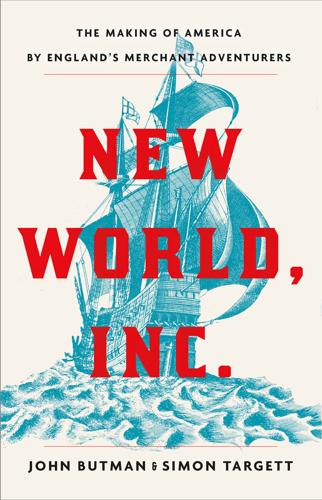
New World, Inc.
by
John Butman
Published 20 Mar 2018
But in 1551 this slumped to 112,710 cloths, falling to 84,968 the following year.34 At a time when the monarchy was already heavily in debt, the decline in demand seemed to rule out any hope that royal loans could be paid back with customs revenue from the cloth trade. As one merchant reflected, some years later, England’s economy was “waxing cold and in decay.”35 The situation was made worse by another development. In 1549, as Smith wrote his Discourse, Antwerp collapsed as a center for Europe’s spice trade. For fifty years, Portuguese merchants had used the Flemish port as its staple, trading spices there for German silver. But now the king of Portugal, João III, had decided that, with sufficient silver pouring into Lisbon from Spanish silver mines in America, he did not need to trade in Antwerp.36 This disruption left English merchants facing a double hit: the decline of their export business in cloth and the loss of their import business in spices and associated luxuries from Asia.
…
Along these routes—which the German explorer Baron von Richtofen labeled the “Silk Road” in the 1870s—all manner of luxury goods were carried by ship, camel, and horse.11 By the time they reached Europe, their price could have risen by as much as 1000 percent, having been handled by many middlemen—factors, traders, government officials—who charged fees, exacted their portion, skimmed a percentage, imposed taxes and duties, and demanded bribes.12 For centuries, it was the Venetians who were the primary importers of Chinese, Indian, and other Asian goods into Europe, collecting them from Arab merchants who had overseen their transportation to the key markets of the eastern Mediterranean—Alexandria in Egypt and Aleppo in what is now Syria. It was a highly profitable business, not least because the Venetians held an effective monopoly. And it was partly to break this Venetian stranglehold on the spice trade that the Portuguese launched a succession of voyages in search of a faster, cheaper trade route to the East. In 1498, after nearly a century of exploration, the Portuguese navigator Vasco da Gama rounded the southern tip of Africa—the Cape of Good Hope—sailed into the Indian Ocean, and reached Calicut, on India’s Malabar coast.
…
Drake sent the sultan a velvet cloak as a token of goodwill and evidence of the fine merchandise the English were prepared to offer in trade. In return, the sultan sent Drake six tons of cloves, as well as rice, chickens, and sugar cane.23 With a bond established, Drake was able to negotiate a trade agreement with the sultan. He agreed to support the ruler in his conflict with the Portuguese in return for the monopoly of the spice trade. As evidence of his good faith, Drake gave the Sultan a coat of armor, a helmet, and a gold ring set with precious stones. For the first time, the English believed they had an ally—commercial and political—in the East Indies. This was the last one of Drake’s three secrets. Not only had he located a new passage around the Spanish and claimed a new realm for Albion, he had forged a trade deal in the Spice Islands.
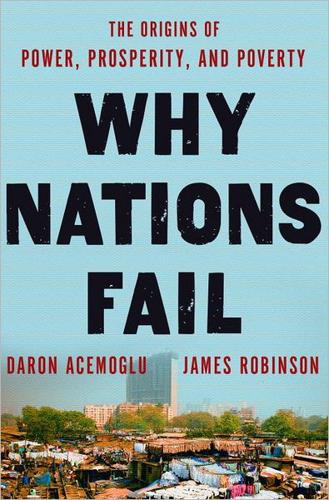
Why Nations Fail: The Origins of Power, Prosperity, and Poverty
by
Daron Acemoglu
and
James Robinson
Published 20 Mar 2012
The first contact the inhabitants had with Europeans was in the sixteenth century, with Portuguese mariners who came to buy spices. Before then spices had to be shipped through the Middle East, via trade routes controlled by the Ottoman Empire. Europeans searched for a passage around Africa or across the Atlantic to gain direct access to the Spice Islands and the spice trade. The Cape of Good Hope was rounded by the Portuguese mariner Bartolomeu Dias in 1488, and India was reached via the same route by Vasco da Gama in 1498. For the first time the Europeans now had their own independent route to the Spice Islands. The Portuguese immediately set about the task of trying to control the trade in spices.
…
As the Portuguese traveler Tomé Pires put it in 1515: “The trade and commerce between the different nations for a thousand leagues on every hand must come to Melaka … Whoever is lord of Melaka has his hands at the throat of Venice.” With Melaka in their hands, the Portuguese systematically tried to gain a monopoly of the valuable spice trade. They failed. The opponents they faced were not negligible. Between the fourteenth and sixteenth centuries, there was a great deal of economic development in Southeast Asia based on trade in spices. City-states such as Aceh, Banten, Melaka, Makassar, Pegu, and Brunei expanded rapidly, producing and exporting spices along with other products such as hardwoods.
…
The Dutch quickly realized that monopolizing the supply of the valuable spices of the Moluccas would be much more profitable than competing against local or other European traders. In 1600 they persuaded the ruler of Ambon to sign an exclusive agreement that gave them the monopoly on the clove trade in Ambon. With the founding of the Dutch East India Company in 1602, the Dutch attempts to capture the entire spice trade and eliminate their competitors, by hook or by crook, took a turn for the better for the Dutch and for the worse for Southeast Asia. The Dutch East India Company was the second European joint stock company, following the English East India Company, major landmarks in the development of the modern corporation, which would subsequently play a major role in European industrial growth.

The Relentless Revolution: A History of Capitalism
by
Joyce Appleby
Published 22 Dec 2009
They would fire some guns in combat but mainly maneuvered to get their men on their opponents’ decks. The Portuguese eschewed this approach. They turned their ships into seaborne gunnery platforms from which they pounded the enemy, never fearing a direct attack because of their ships’ capacity to sail against the wind.4 It took a combination of gold, silver, and force to dominate the spice trade, but the Portuguese succeeded in doing so, laying down a new law of the seas in the East, even if they never entirely monopolized their lucrative trades.5 For a short time Portugal, a nation of a million people, succeeded in imposing its will upon the Chinese, Arabs, and Venetians who had long plied these waters.
…
The great losers in this geographic repositioning were the Italian city-states, the Turks, and other Muslims who had operated in the complex commercial network of the Indian Ocean. Up until the first half of the sixteenth century Venice had sent a fleet of merchants to trade with England, which had virtually no navy or merchant marine. All that changed when the English formed their own trading companies and sent ships around the world. Closed out by the Dutch from the spice trade centered in Indonesia, the English East India Company, chartered in 1600, established settlements at Surat, Bombay, Calcutta, and Madras. By the eighteenth century it had succeeded in taking control of most of India. The winners of this European intrusion into the Far East narrowed down to England and the Netherlands.
…
The company established its headquarters in 1619 on Java, conferring the old Germanic tribal name of Batavia on the Javanese city that they had destroyed while capturing it. The archipelago included dozens of sovereign states that often interfered with the control the Dutch wished to exert, so what began as an aggressive commercial policy became a program of conquest. By 1670 the tasks of subduing local rulers had been accomplished. Still, the profits from the spice trade were so high that Chinese and European rivals rarely gave up trying to corner a bit of the market, muscling in on the trade of pepper, sugar, coffee, tea, silk, and textiles. Still, the Dutch East India Company enjoyed a monopoly of trade with Japan from the middle of the seventeenth century to the middle of the nineteenth century as well as on the commerce in cloves, mace, nutmeg, and cinnamon.15 A self-perpetuating urban oligarchy oversaw the domestic and foreign commerce of the Netherlands.
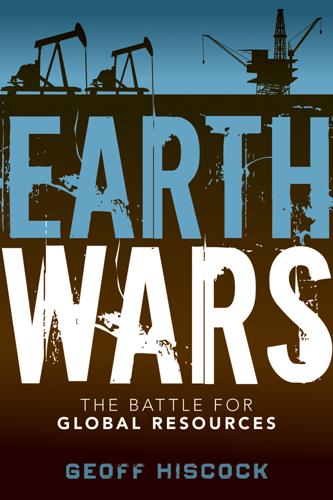
Earth Wars: The Battle for Global Resources
by
Geoff Hiscock
Published 23 Apr 2012
Under two treaties of 1494 and 1529, the Portuguese and the Spanish had already decided how they would carve up the “new worlds” they believed they were discovering in South America and in the Asia Pacific. The Portuguese and the Spanish were just the first wave of European colonizers. By the early 1600s, the Dutch were in Java, seeking to tie up the spice trade through the Dutch East India Company. Although the Portuguese had reached Calicut and Goa in 1498, it was the British and French, along with the Dutch and the Danes, who vied to establish trading posts along the coast of India in the early seventeenth century. By the end of the eighteenth century, Britain was the dominant colonial power in India and had also been able to establish a solid foothold at Guangzhou, which was rapidly becoming one of the world’s busiest trading hubs.
…
These mines, along with greenfield projects, will see Indonesia accounting for the largest share of growth in thermal coal exports over the next decade, Vann says.7 Bumi Resources, Asia’s largest thermal coal exporter from its stakes in the giant Kaltim Prima Coal (KPC) and Arutmin mines in Kalimantan—the Indonesian part of the island of Borneo—is controlled by the Bakrie Group, a large conglomerate headed by Aburizal Bakrie, a businessman turned politician who one day may be Indonesia’s president. The group, established by Bakrie’s father, Ahmad Bakri, in 1942 as a spice trading company, has interests in coal, oil and gas, property, telecoms, infrastructure, and agribusiness. Aburizal Bakrie stepped down as group chairman in 2004, but retains influence as head of the family. His younger brothers Indra and Nirwan have taken larger roles in recent years. Aburizal, now chairman of the Golkar political party, has seen his family’s business come close to ruin on more than one occasion over the last 20 years, most recently in 2008 after the global financial crisis, and in 1997–1998 when the Asian financial crisis rocked Indonesia’s currency and brought down the Suharto regime.
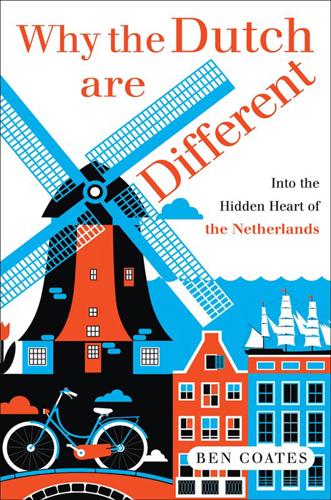
Why the Dutch Are Different: A Journey Into the Hidden Heart of the Netherlands: From Amsterdam to Zwarte Piet, the Acclaimed Guide to Travel in Holland
by
Ben Coates
Published 23 Sep 2015
Following the signs on the walls I passed into an adjoining gallery, a large square room with a high ceiling and a window offering a view of the park behind the museum. Another sign near the doorway explained the theme of the room’s contents: ‘The Netherlands Overseas’. On the other side of the doorway, a lively oil painting by Hendrik Cornelisz Vroom depicted the triumphant return to Amsterdam in 1599 of van Neck’s successful spice-trading expedition. It showed four immaculate ships bobbing in the teeming harbour, church spires jostling for attention with the hundreds of masts crowding the background. The hulls were gleaming in the sunlight, their rigging lined with agile crewmen and topped with colourful flags and ribbons as their cannons fired in celebration.
…
In the choppy sea around the ships, dozens of small boats had come to greet their return, each packed to the gunwales with gentlemen in tall hats, trumpeters, and sailors drinking toasts. Within a few years of van Neck’s expedition, so many independent trading companies had sprung up that the Dutch authorities were concerned the country’s early lead in the spice trade risked being squandered. Given the dangers of piracy, scurvy and shipwreck, international exploration was a risky business, and companies often survived only as long as a single expedition. Bitter competition between merchants in Amsterdam and Rotterdam kept driving spice prices down, and the establishment of Britain’s own East India Company meant that competition was set to intensify.
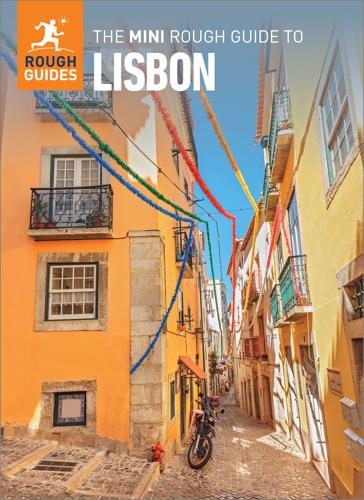
The Mini Rough Guide to Lisbon (Travel Guide eBook)
by
Rough Guides
Published 5 Apr 2023
iStock Manueline style in the church at Jerónimos Monastery The most significant expedition under Manuel’s flag was Vasco da Gama’s sea voyage from Lisbon in the summer of 1497. Rounding what is now known as the Cape of Good Hope, Vasco da Gama found what Columbus had been looking for but missed the sea route to the spices of the East. Reaching Calicut in southern India the following year, Portugal put an end to the Venetian monopoly of the Eastern spice trade by assuming control of the Indian Ocean and attracting merchants from all over Europe to Lisbon. Further territories were discovered in 1500, when the Portuguese explorer Pedro Álvares Cabral reached Brazil. Times of trial When Manuel died, in 1521, he was succeeded by his son, João the Pious.
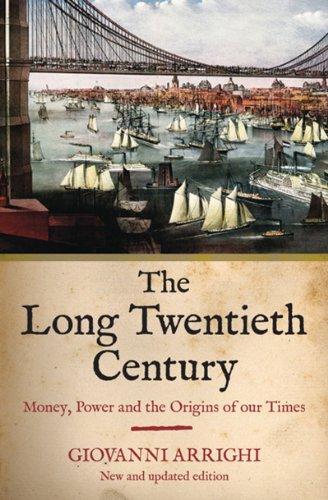
The Long Twentieth Century: Money, Power, and the Origins of Our Times
by
Giovanni Arrighi
Published 15 Mar 2010
Florence and Milan both engaged in manufacturing and in overland trade with northwestern Europe; but while Florence specialized in the textile trades, Milan specialized in the metal trades. Venice and Genoa both specialized in maritime trade with the East; but while Venice specialized in deals with the southern Asian circuit based on the spice trade, Genoa specialized in deals with the Central Asian circuit based on the silk trade. This structural differentiation among the traffics of the city-states did not only prevent their commercial expansions from getting into one another’s way. More importantly, it created strong links of complementarity between the businesses of the city-states, thereby 90 THE LONG TWENTIETH CENTURY making the success of each center conditional on the success of every other center.
…
Yet the days of Dutch commercial supremacy were far from over. The highest rates of profit were still realized in Asian trade, and the centrality of Amsterdam as commercial and financial entrepot was only beginning to be eroded. But the wheel was turning. Increasingly, the higher rates of profit realized by the VOC in the low-volume, Indian Ocean spice trade were more than compensated by the larger mass of profit realized by English enterprise in high-volume lines of business, not just in Atlantic trade, but also in East Indian piece goods trade (Arrighi, Barr, and Hisaeda 1993). Worse still for the Dutch — whether profitable or not, whether English, French, or Iberian — the expansion of high-volume Atlantic trade and of 210 THE LONG TWENTIETH CENTURY the settlement and colonization that went with it began bringing into the open the latent labor shortage that threatened the vitality of Dutch enterprise.
…
Yet it barely survived the adverse conjuncture of the second quarter of the seventeenth century, when the majority of its shareholders began doubting whether it could go on trading at all in the face of overwhelming odds suddenly aggravated by an acute shortage of liquidity in the City (Chaudhuri 1965: chs. 2 and 3). This was due primarily to the pre-emptive centralization of the most profitable East Indies trade in the hands of the VOC. Unable to wrest the spice trade from the VOC’s control, the English East India Company was forced to specialize in the less profitable homeward and intra-Asian trade in piece goods. This industry was not only less profitable than the spice industry; it was also far more difficult to take over: The textile industry was hard to take over for [the] very reason that it was not contained within a single network as in Europe.

Age of Discovery: Navigating the Risks and Rewards of Our New Renaissance
by
Ian Goldin
and
Chris Kutarna
Published 23 May 2016
Today, pepper is an optional condiment we sprinkle on our food according to taste. But in an era without refrigeration, pepper, saffron and other spices made the difference between palatable and unpalatable meat. As the continent developed and demand for spices grew, so too did the profits of the Venetian spice trade and the importance of its Mediterranean transport infrastructure to the city-state’s economy. A pair of external shocks exposed that same infrastructure as the republic’s greatest vulnerability. The first was the Ottoman advance into the Mediterranean. In 1453 the Turks captured Constantinople, which had stood as an unassailable bulwark against Islamic expansion into European waters for centuries.
…
In a single masterstroke, a competitor had rendered Venice’s Mediterranean spice infrastructure obsolete. Some consequences were immediate. The following year, prices in Venice plummeted against the expectation of much better terms on the Atlantic coast. Many German spice buyers decamped and moved their business to Lisbon. Eventually, the decline of the overland spice trade proved less precipitous than first feared, because the sea route offered its own dangers: storms, piracy and hostile settlements up and down Africa’s West and East coasts. But it was no less inevitable. Cities and regions along the overland trade routes that had flourished as centers of commerce and culture since antiquity—Baghdad, Beirut, Cairo, Damascus, the Black and Red Seas—declined into relative backwaters.

A Concise History of Modern India (Cambridge Concise Histories)
by
Barbara D. Metcalf
and
Thomas R. Metcalf
Published 27 Sep 2006
As we shall see in subsequent chapters, it was in its engagement with India, not in England itself, that Britain developed many of the institutions of the ‘modern’ state, among which none was to be more crucial than the joint-stock corporation. The emergence of regional states and the East India Company 45 Granted a monopoly of Britain’s Asian trade, and the right to arm its vessels in order to fend off interlopers, the Company sought entry into the hugely profitable spice trade with the islands of the East Indies. There, however, they encountered a better organized and financed rival, the Dutch East India Company (VOC). They quickly determined to centre their trading operations in India instead. This decision created both economic and political problems for the Company.
…
The Indian trade participated in a larger worldwide trading arena. So-called ‘Guinea’ cloth, exported from India to West Africa, was used to purchase slaves for West Indian plantations, while in The emergence of regional states and the East India Company 49 South-east Asia Indian textiles provided the medium of exchange for the spice trade. Throughout the seventeenth century and the first decades of the eighteenth, the English had to contend with powerful rival trading companies, who, like themselves, established fortified posts along the coast of India. By the 1680s the longestablished Dutch had been joined by the Danes and by the French at Pondicherry, a south Indian enclave they retained until 1950.
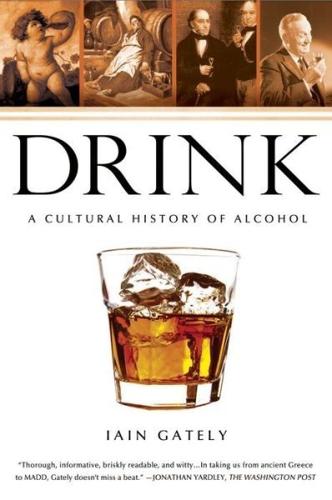
Drink: A Cultural History of Alcohol
by
Iain Gately
Published 30 Jun 2008
Brazil fell into the Portuguese hemisphere, which they settled and to which they introduced sugarcane and distillation, but their principal efforts were focused on Asia. They established bases in Goa, in India, in 1510, and in Malacca, in Malaysia, the following year, with the intention of cornering the spice trade. In 1536, the Chinese permitted them to use Macau on their coast as a harbor and to purchase the silks and other luxury goods that fetched such colossal prices in Europe. From Macau the Portuguese voyaged to Japan, where they were granted permission to send one ship each year. Japan had featured large in the European imagination since the publication of Marco Polo’s largely fictional account of the gold-rich island of Zipangu.
…
Drake coasted up America as far as present-day San Francisco, where he claimed the land for his queen, received the submission of the native chiefs, and named the region Nova Albion. He, and the complement of his ship, the Golden Hind, were probably the first men ever to drink wine in northern California. After repairing his vessel, Drake reached off over the Pacific to Asia, where he gate-crashed the spice trade, before heading home for England and a knighthood. The appearance of an English ship in those parts of the world that the pope had confirmed as belonging to Catholic Spain and Portugal was as unexpected as it was unwelcome. In retrospect, it was inevitable. During the same decades that they had been exploiting their respective spheres of influence, a schism among European Christians had thrown the home continent into disarray.
…
See also bootlegging snake wine Snoop Dogg Socrates sommelier Sommer, Richard Sonoma, California Sons of Jonadab Sons of Liberty Sons of Temperance Sophocles Southey, Robert Soviet Union Spain and the American Revolution and coffee and conquest of Mesoamerica- and the French wine market and international trade and Islam and maritime trade New World colonies and Peruvian wine trade U.S. treaties with speakeasies spice trade Spotswood, Alexander Spurrier, Stephen Squire, James Sri Lanka St. Aiden St. Arnold St. Arnuld St. Augustine of Canterbury St. Benedict of Nursia St. Bernard of Citeaux St. Brigit St. Clement of Alexandria St. Columban St. Dionysus St. Gildas St. Goericus St. Huberts wine St. Jerome St.

Money Changes Everything: How Finance Made Civilization Possible
by
William N. Goetzmann
Published 11 Apr 2016
CORPORATE COUSINS The Dutch East India Company, the Vereenigde Oost-Indische Compagnie (VOC), was created in 1602 in a manner somewhat similar to the founding of the Honor del Bazacle—as a merger among separate companies, in this case the various trading ventures sponsored by merchants in several Dutch cities. By uniting under one firm, the Dutch were following the example of the British East India Company that was founded in 1600. Both of these firms sought to compete with the Portuguese for access to the lucrative Asian spice trade—and they were successful at it. Over the next three centuries, the VOC claimed the lion’s share of the Indonesian trade, while the British dominated trade with India and China. Spain and Portugal were first movers in the discovery of the New World and sea routes to Asia, and yet the Dutch and British rose to dominance.
…
De la Vega characterized some traders as naturally pessimistic and others naturally optimistic, and he saw a natural flow of trade among them over the fortunes of a company, which, after all, might not issue a dividend for years. The public issuance of VOC shares turned the Amsterdam Exchange into a barometer of opinion about the future of the spice trade. While Bazacle shares were fully tradable in the fifteenth century, and the Toulouse grain market was certainly the realm of speculation, as we saw in Chapter 17, the stock market as a frenzy of bulls and bears never quite materialized there. Perhaps it was the very uncertainty and risk of the VOC ventures with their potential for vast riches and threat of serious disaster that got the speculators’ juices flowing.
…
See also government debt sovereign wealth funds, 512–14, 515–16 Soviet Union, 449–51 speculation: Crash of 1929 and, 482; European financial development and, 203; on Genoese dividend futures, 292; Keynes on Wall Street and, 467, 482; Keynes’s investment policy and, 464; mathematics applied to 1980s stock market and, 284–85; in nineteenth-century Russian stock market, 445; with options, 281–83; Regnault on impossibility of profit from, 278; in seventeenth-century Amsterdam stock market, 317; in seventeenth-century Dutch lotteries, 322; in seventeenth-century London stock market, 330; venture capital and, 310; vilification of, 204, 258. See also bubble; gambling; land speculation spice trade, Asian, 316, 318 Spieth, Darius, 360, 378 Spring-Autumn Period, 152, 158–59 Squire, Richard, 121–22, 126 Stadnitski, Pieter, 395 Stad Rotterdam, 368, 375, 380. See also maritime insurance Standard and Poor (S&P) 500, 509, 510 Standard Oil, 447, 448 statistical data: Bernoulli’s use of, 270; Chinese government accounting and, 272; Cowles’s use of, 487; Keynes’s Treatise on Probability and, 464–65.

As the Future Catches You: How Genomics & Other Forces Are Changing Your Work, Health & Wealth
by
Juan Enriquez
Published 15 Feb 2001
There is a constant debate as to how to measure per-capita wealth. You get different numbers when you do it on a purchasing-power scale or use other methods. But the overall lessons are the same in this case. 4. The transaction was part of the Treaty of Breda. Giles Milton has written a wonderful book on the spice trade and its dominance of global commerce, Nathaniel’s Nutmeg, or How One Man’s Courage Changed the Course of History (New York: Farrar Straus & Giroux, 1999). 5. Chart adapted from The Economist, April 17, 1999: 75. 6. Brunei may end up close to where it started. If you want a great historical novel on the area, check out Kalimantaan by C.
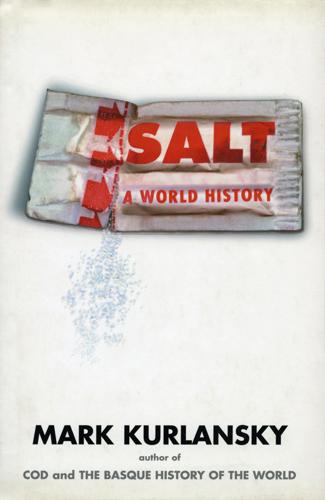
Salt: A World History
by
Mark Kurlansky
Published 28 Jan 2003
Growing fat on the salt subsidy, Venice merchants could afford to send ships to the eastern Mediterranean, where they picked up valuable cargoes of Indian spices and sold them in western Europe at low prices that their non-Venetian competitors could not afford to offer. This meant that the Venetian public was paying extremely high prices for salt, but they did not mind expensive salt if they could dominate the spice trade and be leaders in the grain trade. When grain harvests failed in Italy, the Venetian government would use its salt income to subsidize grain imports from other parts of the Mediterranean and thereby corner the Italian grain market. Unlike the Chinese salt monopoly, the Venetian government never owned salt but simply took a profit from regulating its trade.
…
—Eliza Smith, The Compleat Housewife, posthumous 16th edition, 1758 Ketchup derives its name from the Indonesian fish and soy sauce kecap ikan. The names of several other Indonesian sauces also include the word kecap, pronounced KETCHUP, which means a base of dark, thick soy sauce. Why would English garum have an Indonesian name? Because the English, starting with the medieval spice trade, looked to Asia for seasoning. Many English condiments, even Worcestershire sauce, invented in the 1840s, are based on Asian ideas. Whether it is called garum, anchovy sauce, or ketchup, a large dose of salt was an essential ingredient. Margaret Dods cautioned in her 1829 London cookbook that “catsups, to make them keep well, require a great deal (of salt).”
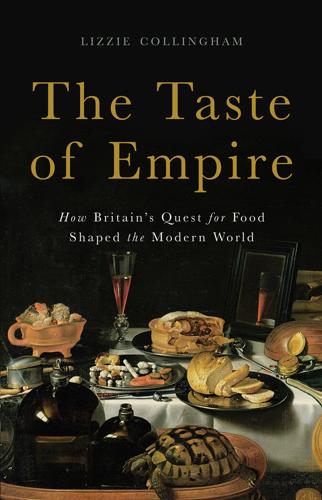
The Taste of Empire: How Britain's Quest for Food Shaped the Modern World
by
Lizzie Collingham
Published 2 Oct 2017
He felt as though he were walking through piles of gold and marvelled at the way in which ‘the greatest wealth… a man can see in the world’ was scattered about in confusion.16 In London in 1668 a pound of pepper cost 16s. 8d, nutmegs were worth 13s. and cloves 8s. a pound. At the time a labourer would have earned about 5s. a week and a pound of beef cost around 3d.17 But within a decade the price of pepper had more than halved due to a struggle between the English and the Dutch East India companies. Both were determined not to let the other dominate the spice trade and consequently imported such large quantities of pepper into Europe that pepper mountains formed in the warehouses of London and Antwerp and the value of this once rare and precious commodity plummeted.18 In 1498, the Portuguese had discovered the sea route to India. When three years later seven Portuguese carracks returned to Lisbon from India’s west coast laden down with 100 tons of pepper, cinnamon and ginger, this was the first consignment of spices to reach Europe without passing through Arab hands.19 However, although they monopolised the sea route to the Indies throughout the sixteenth century, the Portuguese never imported enough spices for Lisbon to rival Venice as Europe’s spice entrepôt.
…
The Genius of Suet had only a walk-on part, driving a tired ox to its end in Smithfield market, and was quickly replaced by a forest scene from the Banda Islands in the Indian Archipelago and the ‘fantastic figure’ of the Genius of Nutmeg. A strange creature, with the head of a Dutchman on the body of a wood pigeon, he delivered a speech on the shortcomings of his East India Company’s attempts to monopolise the European spice trade. Having observed the thriving British colony of Ceylon, which sold cinnamon to all comers, he claimed to have learned that the ‘end of commerce… is not to make [a few] individuals rich… but to diffuse all the productions of nature and art, amongst all the inhabitants of the globe’.4 It was more difficult to feel triumphant on the appearance of the Genius of Sugar in the guise of a freed West Indian slave who, although he was no longer in chains, had lost the security of an assured home market.
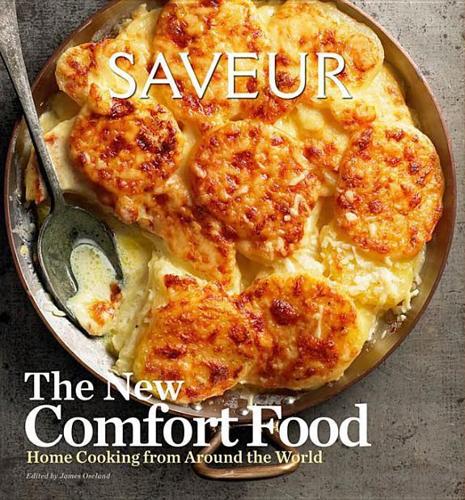
Saveur New American Comfort Food
by
James Oseland
Published 20 Apr 2011
In fact, though, the festive drink—typically a blend of red wine, citrus fruit, spices, and sugar—predates Christmas by thousands of years. Early civilizations, as far back as 5000 b.c., used heated, spiced wines for many purposes, ranging from the gastronomic to the religious. Romans drank a version called hippocras, named for the Greek doctor Hippocrates, because it was believed to have healing properties. The expansion of the spice trade between Europe and the East in the seventeenth century made the flavors we associate with the drink—such as cinnamon, nutmeg, cloves, and mace—more readily available, and today, many countries have their own recipe for mulled wine. In Sweden, glögg is scented with cardamom and sometimes fortified with hard liquor; the British make wassail, fragrant with ginger, nutmeg, and other spices.
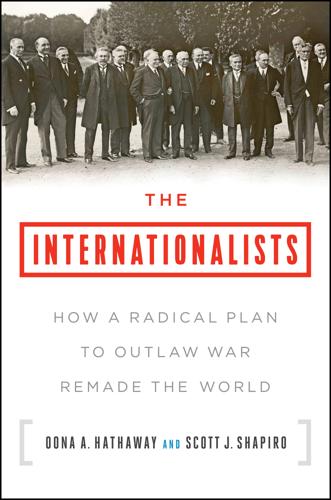
The Internationalists: How a Radical Plan to Outlaw War Remade the World
by
Oona A. Hathaway
and
Scott J. Shapiro
Published 11 Sep 2017
Having towed the Santa Catarina all the way back from Singapore—twelve thousand nautical miles—Van Heemskerck delivered it to his new employer in Amsterdam.7 Following standard procedure, the Dutch East India Company and Van Heemskerck filed a lawsuit before the Amsterdam Admiralty Board to secure rights to the ship and its cargo.8 The suit alleged the following facts: The company “had sent a fleet of eight ships to the East Indies under the command of [Jacob van Heemskerck] in order to trade with the inhabitants in the usual fashion.”9 When Van Heemskerck arrived in the Indies, however, he discovered that the Portuguese government had designed an extensive terror campaign to drive out the Dutch, who were threatening Portugal’s monopoly over the Asian spice trade. The commander of the mission, Captain André Furtado de Mendonça, had led an armada of warships to Bantam in Java in an effort “to destroy all Dutch ships and their crews.”10 He had also punished the natives who had granted the Dutch “access to their harbors and markets,” by attacking them as well.11 His mission laid waste to Ambon, one of the largest of the Spice Islands (today the Maluku Islands in Indonesia), and “brutally tyrannized the poor inhabitants.”12 Van Heemskerck also discovered that the Portuguese in Macao, China, had murdered seventeen sailors from another Dutch expedition.
…
And the caliph possessed little real power over the Mamluk kings in Egypt, tribal leaders in Mesopotamia and Arabia, or the Mughals in Afghanistan and India. The Qing Dynasty ruled China, but not Japan, which was the province of the Tokugawa Shogunate.69 And no one held sway over the petty kingdoms of the Indies, which played a central role in the spice trade. That the early modern world did not have an effective ruler or general court system to resolve disputes created a serious problem for states and their chartered trading companies: How were most international disputes to be resolved? Grotius’s answer in his defense of Van Heemskerck had been simple: war.
…
When world leaders gathered at the Quai D’Orsay in August 1928, Briand spoke words that remain true today: “Peace is proclaimed: that is well, that is much. But it still remains necessary to organize it. . . . That is to be the work of tomorrow.” 1 After Vasco da Gama reached India in 1498, Portugal dominated the Asian spice trade. A century later, Dutch merchants (shown here returning from the East Indies in 1599) began to challenge the lucrative monopoly. The Portuguese retaliated by harassing natives who did business with the Dutch and by killing and torturing Dutch traders. 2 In 1601, Jacob van Heemskerck led a fleet of ships to the East Indies on a trading expedition.
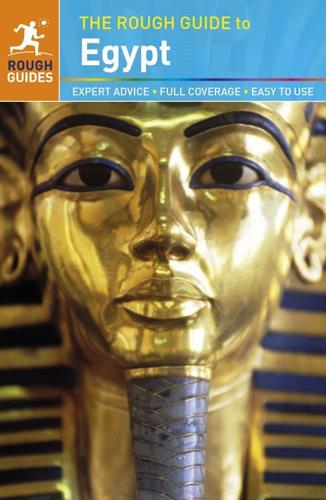
The Rough Guide to Egypt (Rough Guide to...)
by
Dan Richardson
and
Daniel Jacobs
Published 1 Feb 2013
The Spice Bazaars South off the Muski, along Sharia al-Muizz, you’ll find the Souk al-Attarin or Spice Bazaar, selling dried crushed fruit and flowers alongside more familiar spices. On the corner of the Muski and Sharia al-Muizz, screened by T-shirt and galabiyya stalls, stands the Mosque-Madrassa of Sultan al-Ashraf Barsbey who made the spice trade a state monopoly, thus financing his 1426 capture of Cyprus. The madrassa’s exterior is resplendent with red-and-white striped stonework, while the interior is full of wooden mashrabiya-work, along with an inlaid wooden minbar and the tombs of Barsbey’s wife and son.
…
Fort Qaitbey 7km north of town • Daily 9am–4pm (Ramadan 9am–3pm) • £E15 • Take a service taxi from the Corniche just north of Midan al-Hurriya (50pt), a green-and-white taxi (£E5) or a boat (around £E100 for the round trip, depending on your bargaining skills) Built in 1479 to guard the mouth of the Nile and protect Egypt’s spice trade against predatory maritime powers, Fort Qaitbey (Borg Qaitbey in Arabic) was reinforced in 1799 by Napoleon’s troops. It was during these reinforcements that a sharp-eyed French officer by the name of Pierre-Francois Bouchard noticed the Rosetta Stone, which must have been among masonry recycled for the fort’s construction.
…
In 2008–2009, the canal earned a record $5.11 billion, but the subsequent fall in global trade means this may not be matched for some time to come. For more information, visit suezcanal.gov.eg. * * * Suez Unlike Port Said and Ismailiya, SUEZ (Es-Suweis in Arabic) has a history long predating the Canal, going back to Ptolemaic Klysma. As Arabic Qulzum, the port prospered from the spice trade and pilgrimages to Mecca throughout medieval times, remaining a walled city until the eighteenth century. The Canal brought modernization and revenues, later augmented by the discovery of oil in the Gulf of Suez, though the city was later devastated during the wars with Israel.
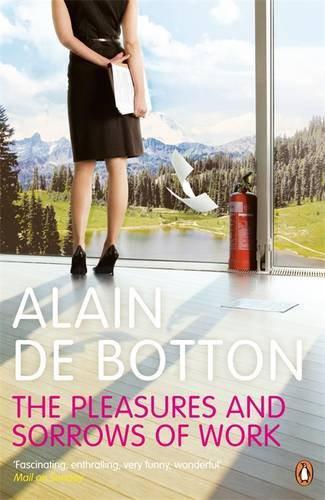
The Pleasures and Sorrows of Work
by
Alain de Botton
Published 1 Apr 2009
It is the high-minded countries that have let their members starve, whereas the self-centred and the childish ones have, off the back of their doughnuts and six thousand varieties of ice cream, had the resources to invest in maternity wards and cranial scanning machines. Amsterdam was founded on the sale of raisins and flowers. The palaces of Venice were assembled from the profits of the carpet and spice trades. Sugar built Bristol. And yet despite their frequently amoral policies, their neglect of ideals and their selfish liberalism, commercial societies have been graced with well-laden shops and treasuries swollen enough to provide for the construction of temples and foundling hospitals. At my window seat in the motorway service station outside Ostend, observing the departure of a lorry carrying toilet rolls to Denmark, I opened a box of Moments that Pottier had presented to me as a farewell gift and thought about societies where exceptional fortunes are built up in industries with very little connection to our sincere and significant needs, industries where it is difficult to escape from the disparity between a seriousness of means and a triviality of ends, and where we are hence prone to fall into crises of meaning at our computer terminals and our warehouses, contemplating with low-level despair the banality of our labour while at the same time honouring the material fecundity that flows from it – knowing that what may look like a childish game is in fact never far from a struggle for our very survival.

More: The 10,000-Year Rise of the World Economy
by
Philip Coggan
Published 6 Feb 2020
With the help of a new ship design called the caravel, the Portuguese reached Madeira in 1419 and the Azores in 1427. Fatefully, they started to trade slaves and to grow sugar on plantations. But they were also looking for a route round Africa to the “spice islands” of Asia. Spices were a very lucrative business, with prices in Europe many times those in Asia. The medieval spice trade was quite closely controlled by guilds in modern Sri Lanka, and the Malabar coast of India.45 From there the spices were shipped via the Middle East, where further costs were added and middlemen took another cut. The Turks captured Constantinople, ending the 1,000-year-old Byzantine empire in 1453, which seems to have cut off, for a while, one of those trading routes.
…
The Portuguese were the first to break into the Asian markets and quickly established a protection racket over shipping in the Indian Ocean. What attracted the Europeans to Asia were spices. These were largely produced on very small islands, part of modern Indonesia, which the Europeans found it easy to dominate. The profits made from the spice trade attracted competitors – first the Dutch and then the English and the French. The Portuguese bully found itself outmuscled by even bigger bullies. In the Banda Islands, the source of nutmeg, the Dutch killed or deported the vast majority of the population and turned the islands into slave plantations.
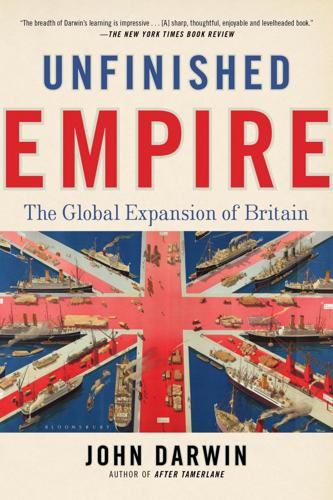
Unfinished Empire: The Global Expansion of Britain
by
John Darwin
Published 12 Feb 2013
For the English, it was not simply a question of angling for favours from Asian monarchs and ministers whose contempt for these rude hairy barbarians was barely concealed (the arrogance the British were to display later in Asia may have been sharpened by the embarrassing memory of their earlier subservience). They also faced fierce competition from a host of mercantile rivals. They followed the Portuguese into India. Their hopes of exploiting the pepper and spice trade of the Indonesian archipelago were thwarted by the Dutch East India Company: better armed, better organized and better financed. From the late seventeenth century, the French Compagnie des Indes, with its base at Lorient (L’Orient) in Brittany, became a major competitor at Chandernagore in Bengal from 1673 and Pondicherry in South India from 1699.
…
The English knew Asia as a sequence of coasts: the Arab and Persian shores of the Persian Gulf; Gujarat in Western India; the Coromandel coast of today’s Tamil Nadu; the Hooghly delta that led into Bengal; the Tenasserim coast, the shortcut to Siam; the innumerable shores of the Indonesian archipelago; the South China coast; and, all too briefly, the west coast of Japan. At first they relied heavily on the expertise of their rivals: they sailed as they traded in the wake of the Portuguese and the Dutch. The Company’s first voyages were to Bantam in Java, where the English hoped to cut in on the Dutchmen’s spice trade. It was only their third voyage in 1608 that took them to India. In 1613, they established a factory at Hirado, near Nagasaki, and one in Siam. Neither was to thrive: that at Hirado was given up after a decade. They created a network of outposts to tap the spice islands, the Moluccas especially.
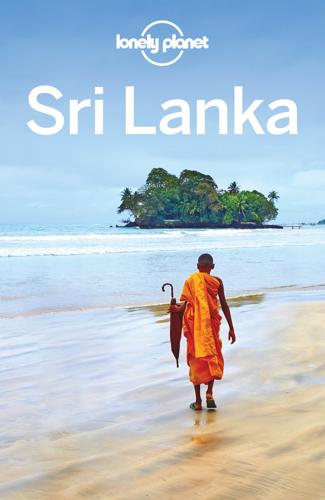
Lonely Planet Sri Lanka
by
Lonely Planet
When the Portuguese arrived in 1505, Sri Lanka had three main kingdoms: the Tamil kingdom of Jaffna and Sinhalese kingdoms in Kandy and Kotte (near Colombo). Lourenço de Almeida, the son of the Portuguese Viceroy of India, established friendly relations with the Kotte kingdom and gained a monopoly on the valuable spice trade. The Portuguese eventually gained control of the Kotte kingdom. Tamil–Portuguese relations were less cordial, and Jaffna successfully resisted two Portuguese expeditions before falling in 1619, at which point the Portuguese destroyed Jaffna’s many beautiful Hindu temples and its royal library.
…
Their most obvious contributions to Sri Lankan culture are bailas, love songs with Latin melodies and African rhythms. The Dutch In 1602 the Dutch arrived, just as keen as the Portuguese on dominating the lucrative traffic in Indian Ocean spices. In exchange for Sri Lankan autonomy, the Kandyan king, Rajasinha II, gave the Dutch a monopoly on the spice trade. Despite the deal, the Dutch made repeated unsuccessful attempts to subjugate Kandy during their 140-year rule. The Dutch were more industrious than the Portuguese, and canals were built along the west coast to transport cinnamon and other crops. Some can be seen around Negombo today. The legal system of the Dutch era still forms part of Sri Lanka’s legal canon.
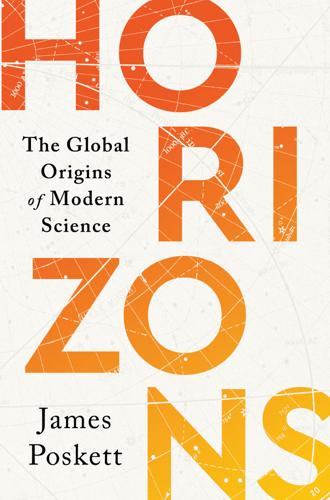
Horizons: The Global Origins of Modern Science
by
James Poskett
Published 22 Mar 2022
These were created with the explicit goal of growing tropical plants in order to reduce reliance on imports. For example, in 1735 the French East India Company established a botanical garden on Isle de France, modern-day Mauritius. The French naturalists there were tasked with growing pepper, cinnamon, and nutmeg with the hope of breaking the Dutch monopoly on the spice trade. (At the time, the only place anyone in Europe could get these spices was from the territories in Southeast Asia controlled by the Dutch East India Company.) The French East India Company even employed a missionary – named Pierre Poivre, no less – to smuggle seeds and saplings out of Southeast Asia to be grown in the new garden.
…
Rumphius also reported how Chinese merchants in Manilla sold candied orchid roots, most likely as an aphrodisiac.27 Before long, Rumphius had compiled a catalogue of many of the most valuable natural goods in Southeast Asia. In fact, Rumphius’s work was considered so economically important that the Dutch East India Company initially declared The Ambonese Herbal a ‘secret document’. This delayed its printing until after Rumphius’s death. The Dutch East India Company, keen to maintain its monopoly on the spice trade, didn’t want word getting out about all these other potential commodities. When The Ambonese Herbal was finally published, the Dutch East India Company only agreed on condition that certain sections, including those detailing the harvest of nutmeg, were censored.28 22. The ‘Ruma gorita’, or Greater Argonaut, depicted alongside its eggcase, in Georg Eberhard Rumphius, The Ambonese Curiosity Cabinet (1705).
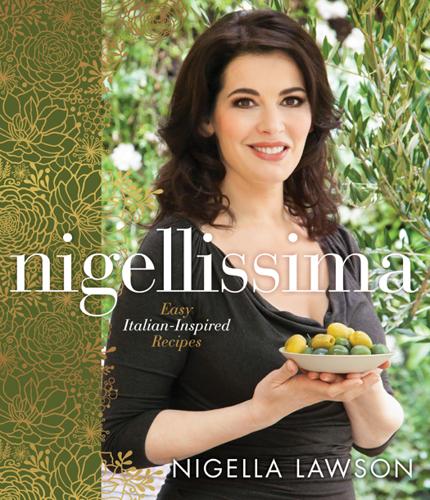
Nigellissima: Easy Italian-Inspired Recipes
by
Nigella Lawson
Published 12 Sep 2012
Heat the garlic-flavored oil in a heavy frying pan of about 11 inches in diameter (that has a lid) and cook the pancetta (or other) cubes for 3–5 minutes, stirring every now and again, then add the chopped shallot and cook for another 3–5 minutes, until the pancetta is bronzed and the shallot soft. Stir in the cumin (not Italian, but Venice was the hub of the spice trade so I allow its inauthentic addition) then add the raisins with their soaking water and let it bubble up before tipping in the borlotti beans and their liquid (but see introduction above if your bean gloop is unusable). Bring to a boil, then add the shredded radicchio and, once the stew starts bubbling again, turn off the heat, put on the lid, and get on with the polenta.
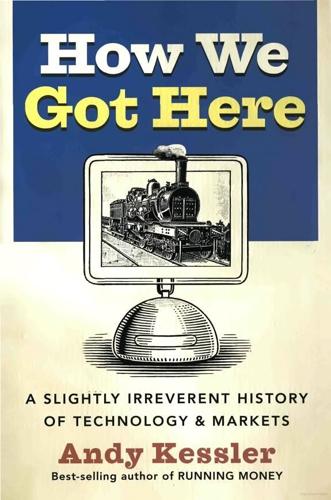
How We Got Here: A Slightly Irreverent History of Technology and Markets
by
Andy Kessler
Published 13 Jun 2005
Drake even lit up eight old ships and had the wind push them into the Armada. In the first signs of English aptitude for war at sea, they sunk all but 65 ships of the Spanish Armada. This cleared the way for the British to rule the sugar and slave trade in the West Indies and have a fighting chance for their share of the spice trade in the East Indies. Trading in commodities was worth more as an economic engine than pillaging gold, which merely glitters, a lesson still forgotten. Elizabeth I understood this. She helped Sir Thomas Gresham set up the Royal Exchange in 1566, emulating a successful Dutch exchange. It mainly traded metals like tin and copper, but soon shares of companies like the Russia Company and Levant Company began to trade.
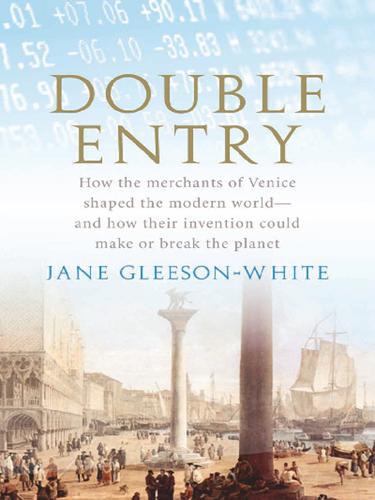
Double Entry: How the Merchants of Venice Shaped the Modern World - and How Their Invention Could Make or Break the Planet
by
Jane Gleeson-White
Published 14 May 2011
By the fifteenth century, the marketplaces Pacioli mentions had spread across Europe and the Mediterranean and were dealing in a wealth of goods: Cotswolds wool exchanged in London; silver, copper, iron and tin from the mines of central and eastern Europe; furs from Russia, Siberia and Bulgaria; carpets, brocades, silks and spices traded in centres such as Cairo, Alexandria, Constantinople, Damascus and Tabriz. The fairs he mentions had proliferated in Europe during the twelfth and thirteenth centuries. The most famous were the annual trade fairs of Champagne in north-eastern France, where textiles, furs, leather and spices were bought and sold.
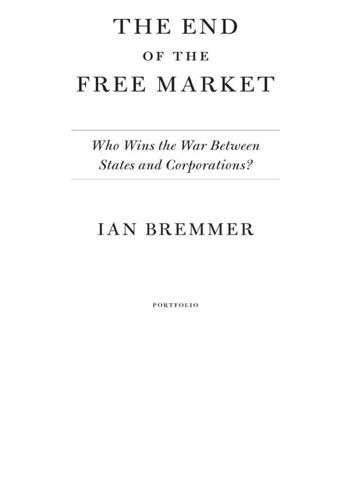
The End of the Free Market: Who Wins the War Between States and Corporations?
by
Ian Bremmer
Published 12 May 2010
For most of the seventeenth century, the Dutch company paid its shareholders annual dividends of between 10 percent and 60 percent. It was a central player in a series of Dutch-Spanish wars over six decades that eventually forced the Portuguese (then united with Spain) from much of present-day Indonesia and Indian coastal regions and established a global monopoly of the spice trade. In 1652, the Dutch East India Company established the first European settlement in South Africa. This is the company that discovered and settled New York, then known as New Amsterdam, before ceding it to the British.12 The British East India Company was even more successful. Oliver Cromwell’s government granted it monopoly rights13 to trade with India in 1657, and the company then effectively became the unchallenged sovereign power in much of India for more than a century.
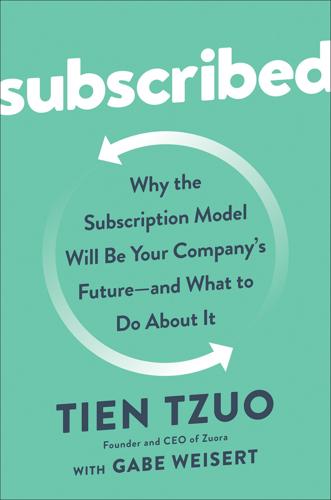
Subscribed: Why the Subscription Model Will Be Your Company's Future - and What to Do About It
by
Tien Tzuo
and
Gabe Weisert
Published 4 Jun 2018
Pacioli came from a relatively modest family and was given a vernacular education focusing on trade (the wealthy kids learned Latin and the classics). By the time he moved to Venice to tutor the children of a well-known merchant, he was a sharp, canny young man. This was during the height of the spice trade, when merchants from the Venetian city-state journeyed to the Middle East and Asia to source rare incenses, herbs, and opiates. Because of the time and distances involved, they often dealt with credits and debits, and it was easy to make mistakes, to lose track of who owed what to whom. Early versions of double-entry bookkeeping date back to the 1300s, but Pacioli was the first to formally codify it.
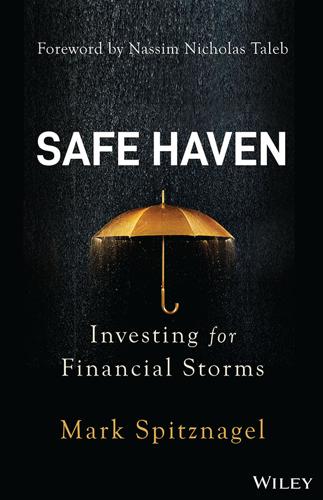
Safe Haven: Investing for Financial Storms
by
Mark Spitznagel
Published 9 Aug 2021
Basel was among the Free Cities, having gained its recognized independence from the Holy Roman Empire in 1648. Likewise, it became a banking and cultural capital, a place for free thinkers, and even came to be thought of as a safe haven from the political turbulence of Europe. The Swiss family Bernoulli was among the most prominent in Basel. While the family business was mostly spice trading, they spawned two mathematician brothers, Jacob and Johann, starting a dynasty. In time, the brothers formed a renowned competitive and belligerent mathematical relationship, certainly to the benefit of each other's careers, if not their sanity. Among the problems they tackled together was the Brachistochrone problem, whereby a marble is rolled down a ramp, and the objective was to find the optimal shape of the ramp to achieve the quickest descent of the marble.
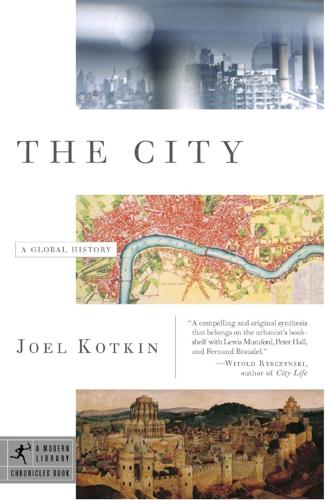
The City: A Global History
by
Joel Kotkin
Published 1 Jan 2005
Portuguese sailors began to reach westward to the Azores by the 1440s and soon were building colonies along the West African coastline. With Vasco da Gama’s arrival in Calicut in 1498, the tiny nation opened routes around Africa to Asia that threatened the long-standing Italian monopoly over the lucrative spice trade. Another critical event took place in 1509, a decade before the conquest of Tenochtitlán, when a small Portuguese fleet defeated a large Muslim armada at Diu, outside Gujerat in India. From then on, the control of world trade, and the future of the cities, fell inexorably out of the control of Arabs, Chinese, and other peoples and into the hands of the Portuguese and Spaniards.32 The brutual conquest by Spain and Portugal of the “New World” in the late fifteenth and early sixteenth centuries further undermined Italian commercial preeminence.
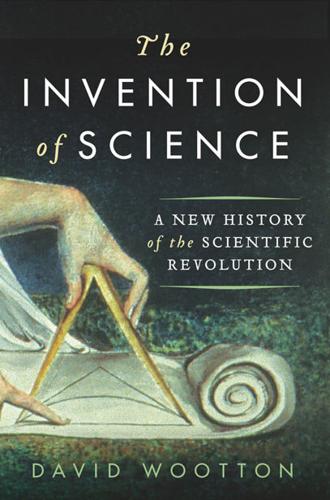
The Invention of Science: A New History of the Scientific Revolution
by
David Wootton
Published 7 Dec 2015
In the late Middle Ages, for example, the Venetians became wealthy importing spices from Asia; the spices were carried overland from the Red Sea to Alexandria, which meant that the Venetian merchants, who bought them in order to ship them across the Mediterranean, had to pay a high price for them. The Portuguese, hoping to undercut the Venetians, sought a route to the spice islands by sailing around Africa, and in the end they succeeded. They were followed by the Dutch, who made the spice trade the foundation of a great commercial empire. Columbus sought a route to the West, but his successors discovered that circumnavigating South America was arduous and time-consuming; as a commercial route to Asia his discovery proved to be a failure, but for this there was more than compensation in the discovery of gold and silver in South America.
…
Richard Rorty) 42n Linnaeus 12n Lippershey, Hans 214 Littré, Émile 394 Lives of the Artists, The (Giorgio Vasari) 36, 167 Livorno 267 Livre du ciel et du monde (Nicholas of Oresme) 120, 148n Livy 78 Local Knowledge (Clifford Geertz) 515n Locke, John 419–23 see also Essay, An contemporary opinion of 11 CUDOS 425 degrees of knowledge 405 Earth defined by 230 empirical philosophy of 418 evidence, concept of 401 extraterrestrials 243 ‘hypothesis’, use of the word 387 inference, types of 410 microscope rejected by 236n primary and secondary qualities 366 properties and substance 397 sensory capacities 428 thinking matter 446, 462 Logic of Port-Royal, The (believed Antoine Arnauld) 289, 300, 301, 411–12, 465 Logic of Scientific Discovery, The (Karl Popper) 529n, 543 London 259, 261, 460 longitude 201, 202, 328, 480–2, 489 Lorenzetti, Ambrogio 167 Lorenzo the Magnificent 165 Louis XIV, King of France 493, 496 Louis XV, King of France 52 Lucasian professors of mathematics, Cambridge 32, 380, 460, 473, 499 Lucé, Pays de la Loire 301 Lucretius 7–9 atomism 432 Charleton and 435 corpuscular philosophy and 460 Descartes inspired by 378 indifference of gods 242 machinae mundi 435–6, 445 natural law and 371–3 objective and subjective 365 On the Nature of Things 558 picture of universe of 237 random swerve of creation 461 recovery of texts 50n vacuums 77n Luther, Martin 34 Maçao 205 Machiavelli, Niccolò 78, 315 machines 431–48 see also clocks animals as 438–9 Collingwood on 431–2 defining 432 engines and 438 hands-on experimenters 319 innovations leading to 484 mechanical philosophy 433–5, 441, 443, 445 Vitruvius on 435, 437 Madeira 62 Maelcote, Odo van 225 Maestlin, Michael 145, 192 Magdeburg hemispheres 342–3 Magellan, Ferdinand 111 magic 270–2 beliefs in pre-Scientific Revolution 6–7, 11, 268 function of 458–9 Wittgenstein on 577 Magini, Giovanni 145 Magnetical Philosophy, The (Niccolò Cabeo) 273, 338 magnetism 327–32 della Porta adds section on 276 Descartes on 366 Earth and 324 Gilbert on 8, 36, 157–8, 263, 346, 485 magnetic variation 482–3 sources 272–4 magnets, supposed effect of garlic on 268–70, 274–9, 282 Magni, Valerio 352 magnifying glasses 235 Maier, Annalise 575 maize 4 Malcolm, Noel 141 Malebranche, Nicolas 378 Malocello, Lancelotto 98 Malpighi, Marcello 238 Man in the Moone, The (Francis Godwin) 231, 232n Man the Machine (Julian Offray de La Mettrie) 439 Manardi, Giovanni 73 Manetti, Antonio 165, 166, 167, 169–70 Manhattan Project 544 manuscripts 306 maps see cartography Maricourt, Pierre de 327, 328–30 Marinus of Tyre 121 Marlowe, Christopher 155 Mars Kepler and 262, 265, 301, 305 orbits and geoheliocentrism 140, 224 perceived size of 148 Swift’s imaginary moons 11 Tycho Brahe’s measurements 193, 195 Marsigli, Count of Bologna 309 Marsilius of Inghen 117, 575 Marx, Karl 279n Marxism 17n, 330, 478 Masaccio 172, 177–8 Mathematical Collections and Translations (Thomas Salusbury) 295–6 Mathematical Principles of Natural Philosophy see Principia (Isaac Newton) ‘Mathematical versus Experimental Traditions in the Development of Physical Science’ (Thomas Kuhn) 425 Mathematical Works (Gilles de Roberval) 97 mathematics God and 212, 213 history and progress 36 hypotheses in 386–7 knowledge and 321 matter and 203 metaphysics and 209 necessity and 586–7 perspective and 175–6 philosophy and 536 profession of 32 prosthaphaeresis 94 Renaissance 416 sublunary phenomena and 199–200 taking control of the Scientific Revolution 205, 445 theories 396–7 true science and 24 Matses 281n matter 366 Matthew, Gospel According to St 12n Maupertuis, Pierre Louis 238 Maurice of Nassau 203, 363 Maurolico, Francesco 192 Maximilian of Bavaria, Duke 361 Maxims (Francesco Guicciardini) 75 Mayer, Tom 545 ‘Meaning and Understanding in the History of Ideas’ (Quentin Skinner) 22n measurement Brunelleschi’s search for architectural forms 169, 171 distance, of 198 greater accuracy required 13 Kepler and Mars 262, 266, 268 longitude and latitude 201 necessary agreement on 518 new instruments for 209, 244 parallax 190–3, 195, 197, 303 surveying 190 Tycho Brahe 535 units of 234–5, 258–9 Measuring the Universe (Albert van Helden) 223n Mechanica (Gaspar Schott) 340 mechanical philosophy 433–5 Beeckmann and 148n depictable reality and 401n gravity and 466 invention of 445 terminology 441, 443 Medicean stars, the 96, 99 see also Jupiter, moons of Medici, Cosimo de’ 214 Medici, Lorenzo de (The Magnificent) 165 Medieval Theory of Authorship (Alastair Minnis) 102n Meditations, The (René Descartes) 379, 401n Meditations, The (Marcus Aurelius) 68n Mediterranean Sea 5, 524 Melanchthon, Philipp 128, 129 Meli, Bertolini 88n Melzi, Francesco 24 Menelaus of Alexandria 67, 100 Meno (Plato) 75 Mercator, Gerardus effect of projection 208 terminology of 125 various undertakings of 31, 205, 206n Mercurii, Girolamo 304 mercury (element) 311n Mercury (planet) 223n, 224, 226 Mersenne, Marin acceleration of falling bodies 52, 258–9 air guns 491 Beeckmann’s letter re Descartes 363–4 Columbus and others 81 Galileo viewed by 27n, 551 glass tubing for experiments 311–12, 335 informal community of 340–1, 348, 357 ‘Pascal’s barrel’ 318n publishes Galileo 432 Puys-de-Dôme experiment 339 replicating Galileo’s experiments 332 Roberval and 337 Merton, Robert 89–90, 96, 424, 478 meteorites 301 Meteorologica (Aristotle) 324n, 326 Method for the Easy Comprehension of History (Jean Bodin) 533 Michele, Agostino 132n Michelini, Famiano 486 Micrographia (Robert Hooke) 216, 240–1, 294, 389 Micromégas (Voltaire) 237 microscopes 74, 216, 235n, 236–7, 410 Middle Ages Archimedes and buoyancy 530 China 105n demonstration in 314 differences from later times 324 earth and water sphere views 111, 119 elements and their weights 530 experience as viewed by 81 experiments in 574–5 Grosseteste’s neo-Platonism 321 ‘hypothesis’, use of the word in 385 impetus theory 574 measuring mountains 257 receding objects getting smaller 169 spice trade 524 technological revolution 431 Middle Temple 9 Middleton, Conyers 471 Midgeley, Robert 279 Mignolo, Walter 208n Migrationes avium (Carl D. Ekmarck) 12n Milan 173 Miles, Henry 353 Milky Way 234n Mill, John Stuart 512 Milton, John 230, 454 Mind Has No Sex, The (Londa Schiebinger) 6 Mineralogia (Bernardo Cesi) 277 Minotaur, the 529 miracles Hume’s essay 465 Montaigne on 373 Newtonian effect 471 Protestant attitudes to 12, 379, 452 mirrors 169–71, 618n22 Modern Statesman, The (G.
…
Vicenza) 76 Paine, Thomas 20 Palais Royal, Paris 436 Paley, William 419, 446 Panofsky, Erwin 201 Pantagruel (François Rabelais) 239 Papin, Denis 491–508, 645–8nn39–79 countries worked in 516 Newcomen and 499–508 North’s notebook and 494 placebo effect 569n Royal Society pays 32 Savery and 496–8 Paracelsus 198n, 294, 409 paradigms 585 parallax 190–5, 197, 303 parapsychology 463 Pardies, Ignatius 383–4 Paris 311 Parisian school 114, 120, 138, 140, 337 Parker, Bishop Samuel 40–1, 433 Parmenides 66, 91 Parsons, Robert 404–5, 409, 411 Pascal, Blaise announces to Mersenne 348 barometers and Torricellian tubes 335, 336, 352 Borges on 239 Boyle and 350–2 change of direction 310n eternal science of infinite spaces 448 evidence used by 415 experience, the authority of 417–18 ‘fact’, the word 291, 294, 295 first real experiment and 311–12, 315 Guiffart defends 77n imagining the earth from space 230 Jansenism, in defence of 290 liquid pressure study 317–18n micro-organisms 239 on the universe 243 practical knowledge and theoretical knowledge 395n Puy-de-Dôme see Puy-de-Dôme science and religion 358 theory and observation 394 Treatise on the Equilibrium of Liquids 338 types of knowledge 341 undermining respect for antiquity 346 vacuums 105, 297–8, 324, 439 weighing the air 52 works by 293 Pascal, Étienne 97, 101 Pascal’s barrel 318n Pascal’s Snail 97, 97 Passi, Pietro 278 patents 106 Pathologia hæreditaria generalis (Edmund O’Meara) 74 Patriarch of Antioch, the 353–4 Patrick, Simon 486 Patrizi, Francesco 25n Paul III, Pope 223n Paul of Burgos 113 Pecquet, Jean 338, 339–40 peer review 96 Peiresc, Nicolas-Claude Fabri de 306, 341 Peking 180, 182 Pemberton, John 473 pendulum clocks 305, 445, 446, 481 see also clocks penicillin 16 Pensées (Blaise Pascal) 310n Pereira, Duarte Pacheco 125n Périer, Florin 310, 340, 348, 352 perspective painting 164–80 Brunelleschi 58n, 165–72 Father Niceron 173, 174 Masaccio 172, 177–8 mathematics and 175–6, 200 mirrors 169–71 Pacioli 173, 175–6 surveying and 190 tiled floors 201 Vitruvius 251 Peter Martyr 121 Peter of Abano 72 Petit, Pierre 335, 349, 352 Petrarch 119, 146, 186n Petri, Franciscus 106 Petty, William 260, 412 Peuerbach, Georg 187, 228, 229, 246 Phalaris, letters of 466 ‘Phases of Venus before 1610’ (Roger Ariew) 228n phenomena 266 Philolaus the Pythagorean 78 Philosophia pia (Joseph Glanvill) 460 Philosophical Investigations (Ludwig Wittgenstein) 42 Philosophical Transactions (Royal Society) alchemy generally excluded from 357 book review in 347n ‘evidence’, use of word 417 first journal devoted to new science 341 intellectual property concept 337 Papin and 501, 502, 506 ‘theory’, first use of word by 383, 396 Philosophical Writings (René Descartes) 388n philosophy (use of term) 7–11, 25, 27–8, 36–7, 425, 536 see also corpuscular philosophy; mechanical philosophy Physica (Jacques Rohault) 473 physical world, the 457 Physico-Mechanical Lectures (John Theophilus Desaguliers) 475 Physico-Theology (William Derham) 473 Physiologia Epicuro-Gassendo-Charletonia (Walter Charleton) 296 Physiological Essays (Robert Boyle) 26, 280, 294 physiology 27 Piccolomini, Alessandro 71, 130, 230n, 414 Pickering, Andrew 517n, 589 Pierre, Georges 353–4 ‘Pierre Duhem and the History of Late-medieval Science’ (John Murdoch) 16n Pillars of Hercules ii, 79, 103, 119 pineal gland 377 Pinelli, Giovanni Vincenzo 273 Pinta (ship) 57, 89 Pisa 80, 335 placebo effect 569n plagiarism 101–2, 337 planets 223 Plato an innovator 66 book frontispiece 204 Charleton envisages 402 doubling the area of a square 100 knowledge and reminiscence 75 movement in the heavens 144 nominalism and 322 on experience 52 recovery of texts 50n Renaissance and 203 signatures, theory of 409 types of knowledge 321 Pliny see also Natural History distances 611n10 flood accounts 113 Madeira 62 magnets that repel iron 278 medieval view of 7 omissions in work of 67 reputation in decline 26 unreliability of 12 water levels 137 wine adulterated with water 272 Ziegler’s commentary 128 Plus ultra (Joseph Glanvill) 37–8, 358, 453 Plutarch Galileo and 216, 217 Madeira 62 on experience 268–9, 277–8, 282 Pluto 99 Pole Star 120, 188, 190n, 320 politeness 470–1 Politics (Aristotle) 61 Polybius 412 Pope, Alexander 361 Popper, Karl Open Society and Its Enemies, The 357n quoted 249, 556 refutation of belief systems 45n science and common sense 529, 543 science and free societies 360 showing limitation of argument from fact 289 three worlds of 96n Popular Errors (Laurent Joubert) 304 Porter, Roy 588–9 Portuguese (people) African coast 98 carracks 104 effect of voyages 61n equator 72, 73, 120 Maçao 205 Pillars of Hercules 103 spice trade 524 take lead in voyages of discovery 58 Portuguese language 29, 57, 408 Portuguese Voyages to America (Samuel Eliot Morison) 125n positivism 586 Postan, M. M. 15 postmodernism 257n, 309, 451, 554–5, 580 potential 70 Power, Henry advice on mercury 349 Descartes and 443 Experimental Philosophy 238n, 313 microscopes 237 quoted 1, 39 replicates Pecquet 340 vacuums 351, 352 Powers, John C. 355–6 pragmatism 17 preformationism 237–8 pressure cookers 504 pressure gauges 503 Priestley, Joseph 86, 91 Primerose, James 304 Primitive Origination of Mankind, The (Matthew Hale) 418 Principia (Isaac Newton) axiom and demonstration 417 Cambridge and 15 defiant title of 24 gravity 376, 378, 466 hypothesis in 390 Leibniz and 93 new scepticism after 429 Newton’s influence and 34n popular accounts of 474 ‘theory’, use of word in 396n Wotton and 457 writing of 108–9 Principles and Duties of Natural Religion (John Wilkins) 405 Principles of Philosophy, The (René Descartes) 362, 371, 375, 385 printing press 302–7 carrying news of discoveries 107 early publications 187 experience, facts and 282–3, 302 fundamental feature of Scientific Revolution, a 197–8 images alongside text 561 priority disputes and 95 Scientific Revolution and 197, 305 three inventions of modernity 60 transforming balance between evidence and theory 136 Printing Press as an Agent of Change, The (Elizabeth Eisenstein) 305n, 306 priority disputes 86, 93–7, 105 prisms 311, 380–3 probability theory 563 Problem of Certainty, The (Hendrik van Leeuwen) 406n ‘Problem of Mechanical Flight, The’ (Science journal) 552 Problem of Unbelief in the Sixteenth Century, The (Lucien Febvre) 595 Proclus 36, 67–8, 75, 100, 609–10n131 prodigies 469–70 professionals, scientists as 31 Prognostication Everlasting, A (Leonard and Thomas Digges) 78, 149–51, 156, 387 progress 511–13 assumption required for 61 Bacon on 36 Boyle on 37–8 conviction of unstoppability of 5 discovery of America and 84 history of humanity to be conceived as 4 history of science as 554 inconsistency of 542 new culture of 104 Pascal on 341, 346 projections (maps) 208 see also cartography proof 314–15, 407–8, 409 prosthaphaeresis 94 Protagoras 234 Protestants see also Christianity Catholics ban books of 128 civil war with Catholics 558 educated people 10 faith grounded in facts 463 in France 491, 493 less rigorous censorship 379 miracles, on 12, 452 publishing Montaigne 557 reformation and revolution 33 Provincial Letters (Blaise Pascal as Louis de Montalte) 290, 293 Pseudoxia epidemica (Vulgar Errors) (Thomas Browne) 254, 304, 387n Ptolemy Brunelleschi and 206 Columbus undermines 184 Copernicus and, a comparison 154 Copernicus’s advantages over 144 de’ Dondi and 436 demise of his astronomy 118 epicycles 413 Galileo teaches 209 Galileo’s frontispiece 267 Geography 115, 117, 120–1, 122–3, 183n Gerson criticizes 134n homocentric planetary systems 137n instrumentation of 244 latitude and longitude 201 limited knowledge of 125, 151–2 magnets rubbed with garlic 268 Mars and Earth 193 measurements of 262, 266 medieval opinions of 7 Menelaus’s Theorem 100 moon as a planet 198, 214 Petrus Ramus and 101 Polydore Vergil on 66 predictions of planetary movement 223 Regiomontanus criticizes 187, 188 sun and moon as planets 198 system fatally wounded 225–6, 227, 228, 229, 245–6 telescope and 229 three systems 97, 99 Venus and Earth 145, 222, 224 Waldseemüller on 59n public lectures 475 Puppet Clacks 503 Puritanism 478, 576 see also Christianity; Protestants Putnam, Hilary 568, 569 Puy-de-Dôme experiment Boyle and 311, 526 causal explanation and 391–2 crowd of onlookers 348, 352–3 described 310 Newton may be referencing 383 Pascal and 336, 339, 349n Pythagoras Polydore Vergil and 67 Robert Norman and 80 theorem 210, 609–10n131 three systems and 99 Vitruvius on 100–1 quadrants 188, 196, 209, 244, 262 qualities, primary and secondary 365–6 Quine, W.
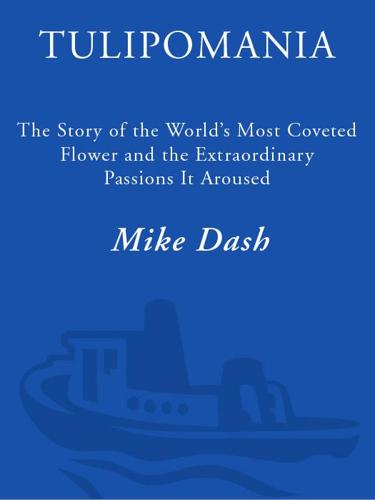
Tulipomania: The Story of the World's Most Coveted Flower & the Extraordinary Passions It Aroused
by
Mike Dash
Published 10 Feb 2010
Had the prices paid per ace for these three varieties remained unchanged, Bosch’s customers would have enjoyed returns varying from 330 percent to as much as 514 percent in a scant nine months. There was probably not another investment in the whole of the United Provinces that offered such spectacular results this quickly, and certainly none that all but guaranteed it. Some of the voyages undertaken by the Dutch East India Company, which enjoyed a monopoly on the lucrative spice trade, did deliver profits of 400 percent or more. Yet a single round-trip to the Indies took two years or so to complete, and while they were away, the company’s ships were exposed to the dangers of disease, shipwreck, piracy, and Spanish attack. Even the rich trades, then, exposed the privileged few who were permitted to invest in them to risks unknown to Holland’s florists.
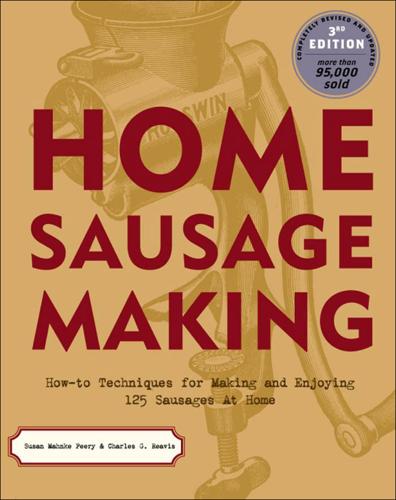
Home Sausage Making: How-To Techniques for Making and Enjoying 100 Sausages at Home
by
Susan Mahnke Peery
and
Charles G. Reavis
Published 15 Jan 2003
Homer mentioned the Greeks’ love for grilled sausage in the Odyssey. The legionnaires of Imperial Rome wouldn’t march without their little bottles of garum (a fermented fish sauce similar to today’s nam pla from Thailand) and long strings of dried or smoked sausages. Sausage making really took off in Europe during the medieval period, when an energetic spice trade and returning Crusaders brought exotic seasonings and new cooking techniques to sleepy farms and villages. Medieval towns all across Europe — Bologna, Frankfurt, Vienna, and many others — gave their names to distinctive sausages we still love. In North America, Native Americans dried and smoked venison and buffalo meat to make jerky, and they stuffed meat, suet, and berries into skins to make pemmican.
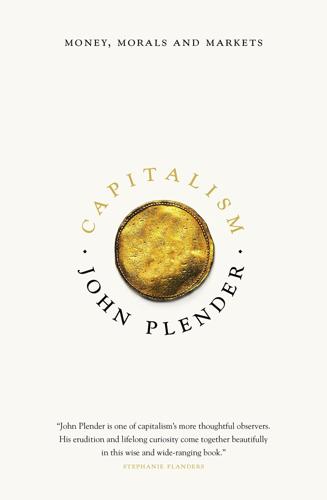
Capitalism: Money, Morals and Markets
by
John Plender
Published 27 Jul 2015
Anti-money snobbery nonetheless proved exceptionally durable. One of the greatest putdowns in history was François I of France’s description of King Manuel I of Portugal as the Grocer King, a devastating snub that no doubt reflected envy of the vast riches amassed by the Portuguese crown from the spice trade in the Orient. That anti-business prejudice survived in France until the revolution and beyond, in a society where hierarchy was more rigidly maintained than in more libertarian countries such as England. Yet even in England, anti-money prejudice was part of the culture. Alexander Pope reflected this in his ‘Epistle to Bathurst’, the satirical poem that discusses ‘whether the invention of Money has been more commodious, or pernicious to Mankind’ and illustrates Pope’s conviction that ‘we may see the small value God has for riches by the people he gives them to’.
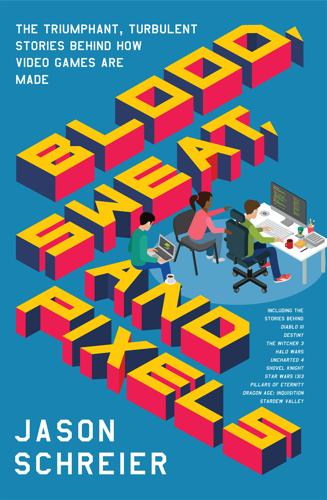
Blood, Sweat, and Pixels: The Triumphant, Turbulent Stories Behind How Video Games Are Made
by
Jason Schreier
Published 4 Sep 2017
If all went well, Gibeau said, Visceral would hire the core staff of Star Wars 1313 and continue working on the project there. Standing in front of a packed room of Visceral employees, Robilliard and his leads gave a lengthy presentation on Star Wars 1313. They talked about the story, describing in detail how you’d fight your way through the seedy hive of Coruscant, unraveling a spice trade conspiracy and watching your closest friends stab you in the back. They showed all the cool mechanics they’d prototyped, like the flamethrower and wrist-based rocket launcher. They walked everyone through the hours of levels they’d built in gray box, where there were detailed layouts of each stage (but no art).
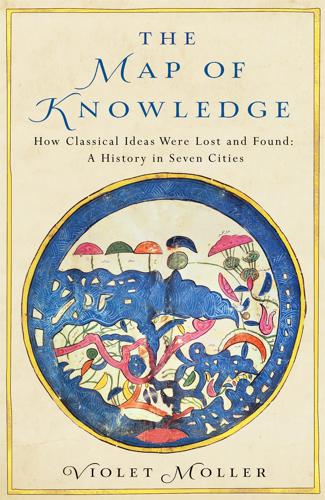
The Map of Knowledge: How Classical Ideas Were Lost and Found: A History in Seven Cities
by
Violet Moller
Published 21 Feb 2019
This could have given them the worst of both worlds, but, in fact, it put the Venetians in a privileged space between the two empires and, most importantly of all, it gave them trading rights and the freedom to use Italian ports. In 1082, the Byzantines extended Venetian trading rights, exempting them from taxes and customs duties across the empire, marking another crucial moment for the city’s commercial growth. By 1099, there was a lucrative spice trade with Egypt, and Venice was on course to create the most successful maritime empire the world had ever seen. Stable, relatively democratic government, rigorous organization and an absolute devotion to the city lay at the heart of Venice’s extraordinary success. That devotion was not only practical, it was religious, too.

China: A History
by
John Keay
Published 5 Oct 2009
This man’s descendants, after adopting Islam, would become the sultans of Malacca; and Malacca itself would develop into the trade hub of the region. Perceived as a heavily fortified portal to the China and Java seas, by the turn of the century it would be a prime target of Portugal’s maritime drive to engross the spice trade. But in the early fifteenth century it was the dire situation in Vietnam which compelled Zheng He’s fleets to play a more active part hereabouts than anywhere else in the Western Ocean. Champa, the main Ming ally on the mainland, was ‘shown the flag’ by every voyage. So were most of the Sumatran maritime states; and Malacca was the nearest thing to a colony that Zheng He ever established.
…
Many nations were involved, including the Spanish in the early days and latterly the French and the Americans. But the Portuguese had enjoyed a near-monopoly for most of the sixteenth century, in the seventeenth the Dutch had been pre-eminent, and as of the early eighteenth it was the English who accounted for by far the most ships. Chartered in 1600 to compete for the Asia–Europe spice trade, the London (or English) East India Company, after being ousted from Indonesia’s Spice Islands by the Dutch, had found compensation in favourable trading conditions and substantial ‘factory’ bases on the coast of India. With its chartered monopoly of the ‘out-and-back’ trade between London and the East, the company imported from India to Britain mostly finished cotton fabrics, while both it and its servants, acting in a private capacity, competed for freight in the unmonopolised inter-port carrying trade of the East.
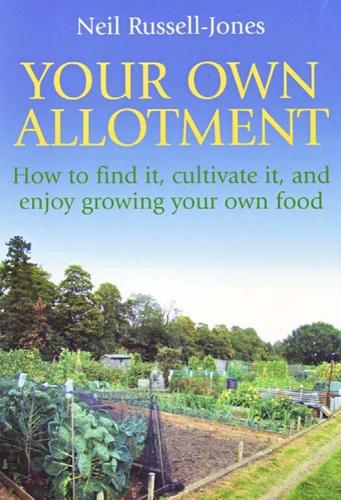
Your Own Allotment : How to Find It, Cultivate It, and Enjoy Growing Your Own Food
by
Russell-Jones, Neil.
Published 21 Mar 2008
Many of them originate in far-off climes that are very much hotter than the UK and have names that are redolent of those lands – cinnamon, cloves, nutmeg, saffron, vanilla (from Mexico). Zanzibar is a well-known producer of spices. I have been there and visited a spice farm, which was fascinating. The spice trade made many people very rich as people sought spices to improve the flavour of food, and also to help to preserve it. The expeditions to the west that resulted in the discovery of the Americas were attempts to find a route to the spice islands of Africa and the East Indies that would break the monopoly of the Arab traders.
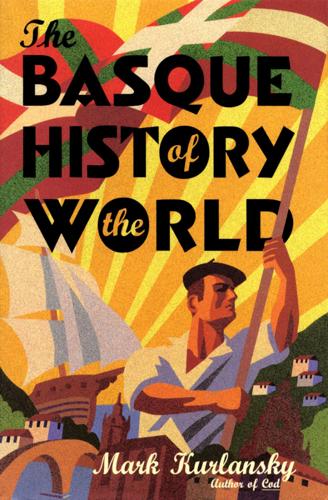
The Basque History of the World
by
Mark Kurlansky
Published 4 Jul 2010
The only injury caused by the mutineers had been the stabbing of a fellow Basque loyal to Magellan, Juan de Elorriaga. Elcano had spent five months, a long gray winter, in chained hard labor in Patagonia while the crew waited for spring to find the straits to the Pacific. Now in command, Elcano and the two ships engaged in the spice trade for some months, and then the Victoria continued around the world while the Trinidad was left behind for repairs. The latter was eventually stripped by the Portuguese and destroyed in a squall. On September 8, 1522, almost nine months after leaving the Trinidad, three years and one month after setting sail from Seville, Elcano, the first man to circumnavigate the globe, sailed the Victoria up the Guadalquivir River and tied her up at a pier in Seville.
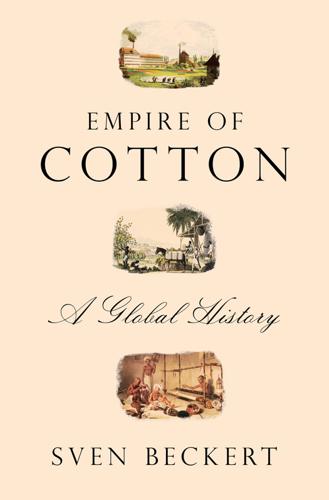
Empire of Cotton: A Global History
by
Sven Beckert
Published 2 Dec 2014
By the early sixteenth century, the Portuguese had established a series of trading outposts on India’s west coast, most enduringly in Goa. At the end of the sixteenth century, the Netherlands and Great Britain began to challenge Portugal’s monopoly on trade with Asia by chartering joint-stock companies, hoping to catch a share of the highly profitable spice trade. After a series of Anglo-Dutch wars, the Dutch and the British agreed to divide their spheres of interest in Asia, with the Indian textile trade falling mostly into British hands. That expansion into South Asia, at first, was the most momentous intervention of European merchants and statesmen into the networks of the global cotton industry.
…
Smith, James Monroe Smith, John Benjamin, 9.1, 9.2 Smith, Samuel, 8.1, 8.2, 8.3, 9.1 soap social democracy, 12.1, 13.1 social inequality, itr.1, itr.2 social status, 1.1, 1.2, 1.3, 2.1, 13.1 Société Anonyme Egyptienne pour la Filature et le Tissage du Cotton Société Industrielle de Mulhouse, 6.1, 7.1, 9.1, 9.2 Société Royale d’Agriculture Society for the Encouragement of Arts and Manufactures Somers, Thomas sorghum South America, itr.1, itr.2, 1.1, 4.1, 4.2, 6.1, 6.2 South Carolina, 5.1, 5.2, 5.3, 5.4, 5.5, 10.1, 12.1, 13.1, 14.1 Southern Cotton Association Southern Cultivator Soviet Council of Work and Defense Soviet Union, itr.1, 13.1 cotton production in, 12.1, 12.2, 14.1 sowkars, 10.1, 11.1 Sozialdemokratische Arbeiterpartei (SPD) Spain, 1.1, 1.2, 2.1, 5.1, 7.1, 14.1 Catalonia, 6.1, 6.2, 6.3, 6.4, 6.5, 7.1, 7.2, 7.3, 8.1, 13.1, 13.2, 14.1 Christian Reconquista in conquistadores of, 1.1, 1.2, 2.1 cotton industry of, 6.1, 6.2, 6.3, 6.4, 7.1, 7.2, 7.3, 8.1, 13.1, 13.2 spice trade spindles, 1.1, 1.2, 6.1, 6.2, 10.1, 12.1, 13.1, 13.2, 13.3, 13.4, 13.5, 13.6, 13.7 hand mechanical, itr.1, 3.1, 6.1, 6.2, 9.1, 10.1 spindle whorls, 1.1, nts.1 Spinnerei Aktiengesellschaft spinning bowls, itr.1, 1.1, 1.2 spinning jennies, 3.1, 3.2, 5.1, 6.1, 6.2, 6.3, 7.1 spinning machines, itr.1, 1.1, 3.1, 3.2, 4.1, 4.2, 6.1, 6.2, 6.3 destruction of manufacture of, 3.1, 13.1 water frame, 3.1, 3.2, 3.3, 5.1, 6.1, 6.2 spinning mules, itr.1, 3.1, 3.2, 3.3, 3.4, 6.1, 6.2, 6.3, 6.4, 7.1, 7.2, 13.1 spinning wheels, itr.1, 1.1, 1.2, 2.1, 13.1, 13.2 water-powered, 3.1 Sprunt, Alexander Stanley, Amy Dru State Department, U.S.

Irrational Exuberance: With a New Preface by the Author
by
Robert J. Shiller
Published 15 Feb 2000
Indeed there are probably some stories that could be regarded as an exception to my generalization about the coincidence of the first manias and the first 246 NOT ES TO PAGES 71–81 newspapers, although other interpretations are also possible. Yale historian Paul Freedman offered me the example of pepper as a possible exception: its price in the spice trade seems at times to have been surprisingly high, and in the 1500s it was very volatile. There are ancient and medieval examples of grain prices soaring at times of famine. Land price movements were also remarked in history. For example, in a letter to Nepos around A.D. 95, Pliny the Younger writes, “Have you heard that the price of land has gone up, particularly in the neighborhood of Rome?
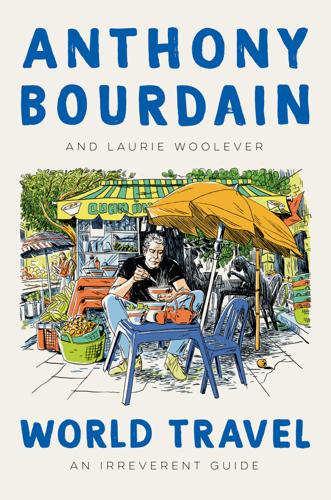
World Travel: An Irreverent Guide
by
Anthony Bourdain
and
Laurie Woolever
Published 19 Apr 2021
The No Reservations crew shot an episode in the sweltering, heavily fortified, locked-down capital city of Colombo in 2008, a year before that country’s long civil war finally ended. Tony observed: “There’s a quote somewhere, describing the old days of exploration and empire, that ‘all Europe has fallen in love with Ceylon.’ The Portuguese thought they discovered the Garden of Eden, the crown jewel of the spice trade—cardamom, cinnamon, nutmeg, clove, pepper, mace, ginger—the object of desire of many empires. The Chinese called Ceylon, now Sri Lanka, ‘the Land Without Sorrow,’ though I doubt anyone would say that today.” In 2017, Tony returned, this time with Parts Unknown, to see what had changed, what had opened up, and what the lasting consequences of twenty-five years of fighting were.
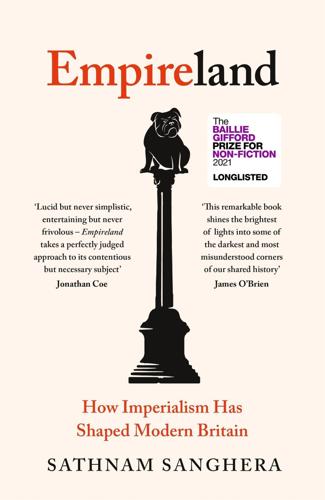
Empireland: How Imperialism Has Shaped Modern Britain
by
Sathnam Sanghera
Published 28 Jan 2021
But for Richard Hakluyt, known for promoting the English colonization of North America through his travel compendiums Divers Voyages Touching the Discoverie of America (1582) and The Principall Navigations, Voiages, Traffiques and Discoueries of the English Nation (1589–1600), the empire expanded because ‘no greater glory can be handed down than to conquer the barbarian, to recall the savage and the pagan to civility, to draw the ignorant within the orbit of reason’. When Queen Elizabeth signed the charter of the East India Company on the last day of 1600, she did so, according to the History Channel, ‘hoping to break the Dutch monopoly of the spice trade in what is now Indonesia’. Other explanations include exploration for the sake of exploration, the desire to participate in the profitable trade of slavery, the desire to emigrate, opportunism, idealism. Sometimes it expanded because the territory was necessary to defend trade, to protect missionaries and settlers, to save the ‘natives’ from their foolish and dangerous ways, or because the land might be valuable one day – or just because they could.
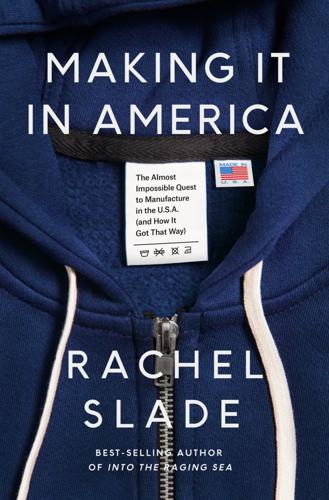
Making It in America: The Almost Impossible Quest to Manufacture in the U.S.A. (And How It Got That Way)
by
Rachel Slade
Published 9 Jan 2024
Smith had seen the devastation wrought by free trade in real life. While he was writing his treatise, the British East India Company (EIC) was choking the life out of India, once the world’s fourth-largest manufacturing economy. Chartered by the English crown in 1600, the EIC was founded to launch a British spice trade, but when the Dutch locked up Indonesia, the EIC looked to India. The Indian subcontinent was enjoying a period of relative peace that allowed manufacturing and trade to flourish. A robust supply chain of fantastic raw materials stretched all the way from Persia to China to the tip of India, enabling an eye-popping variety of textile-making traditions.

Exceptional People: How Migration Shaped Our World and Will Define Our Future
by
Ian Goldin
,
Geoffrey Cameron
and
Meera Balarajan
Published 20 Dec 2010
THE AGE OF EXPLORATiON Gunpowder Expeditions Only decades after the Ming rulers terminated Zhang He's great voyages, the increasingly lucrative seafaring trade from Europe helped to fund exploratory journeys across the Atlantic. Bankers and merchants derived financial rewards from Portuguese contact with and increasing control of gold-and slave-trading West African ports, and the idea of finding the source of the spice trade was sufficiently enticing for some to fund open-ended voyages.4 Christopher Columbus's discovery that there was gold in the Americas and the suggestion that indigenous people could be evangelized encouraged the support of both Church and State for continued European journeys. Less than thirty years after Columbus's voyage, Hernán Cortés led an expedition into the Mexican highlands to bring about the Spanish conquest of the Aztec civilization.

Cities Are Good for You: The Genius of the Metropolis
by
Leo Hollis
Published 31 Mar 2013
For example, on one morning in June 1634, ships returning from the east displayed their bounty on the wharf before carting it all to the Bourse: 326,733½ Amsterdam pounds of Malacca pepper; 297,446 lbs of cloves; 292,623 lbs of saltpetre; 141,278 lbs of indigo; 483,083 lbs of sappan wood; 219,027 pieces of blue Ming ware; 52 further chests of Korean and Japanese porcelain; 75 large vases and pots containing preserved confections and much of it spiced ginger; 660 lbs Japanese copper; 241 pieces of fine Japanese lacquer work; 3,989 rough diamonds of large carat; 93 boxes of pearls and rubies; 603 bales of dressed Persian silks and grosgrains; 1,155 lbs raw Chinese silks; 199,800 lbs of raw Kandy sugar.6 The local merchants themselves invented a new way of doing business, setting up joint stock ventures such as the East India Company, sharing the risk of long, expensive voyages as well as the prospective rewards. This offered a scale of business that was previously only within the grasp of a king. Founded in 1602, within twenty years the East India Company controlled the majority of the Asian spice trade with colonies throughout Indonesia, and later adding ports in Malaysia, Sri Lanka, the Indian subcontinent, Thailand, Japan and mainland China. By 1650, it was the richest company in the world with 190 ships, a private army and an annual dividend of 40 per cent. A map of Amsterdam in the seventeenth century In time, the port saw the value of not just being a place of trade but also a place that finished and improved the raw materials that were dropped at the quay: wool was turned into fabric, metals were beaten and moulded into finely wrought goods.
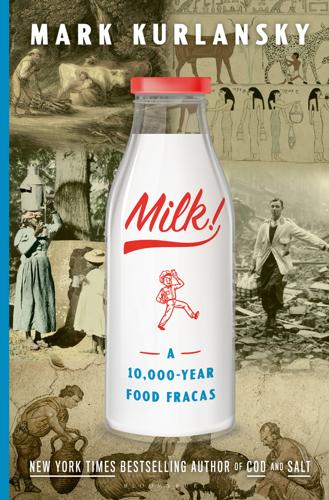
Milk!
by
Mark Kurlansky
He did not specify how it was to be used, but jance was a popular sauce throughout medieval Europe, often served with poultry. There are many variations, and the only thing that they all have in common is the dominant taste of ginger. The word “jance” is thought to come from the word “ginger,” which was one of the most valued products of the spice trade, largely controlled by the Portuguese. This is Taillevent’s instructions for making milk jance: COW’S MILK JANCE Crush ginger, beat egg yolks, boil cow’s milk, and mix them together. Such sauces predate Taillevent. An anonymous 1290 manuscript, Traité du XIIIe Siècle, suggests: The flesh of capons and hens is good roasted with a sauce of wine in the summer and in the winter, a sauce flavored with garlic and cinnamon and ginger, mixed with almond [milk] or ewe’s milk.
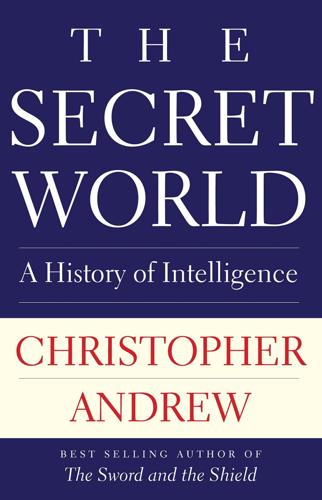
The Secret World: A History of Intelligence
by
Christopher Andrew
Published 27 Jun 2018
Under pressure from the Rialto merchants, an official mission was sent from Venice to Lisbon to determine the extent of the trade. It returned with bad news. The celebrated Venetian diarist Girolamo Priuli records that, though Vasco da Gama’s voyage led to ‘the greatest celebrations’ in Lisbon, it caused ‘the greatest melancholy and distress’ in Venice.12 Within a decade the Portuguese controlled the spice trade on the Malabar coast of India and Ceylon. The ‘Age of Discovery’ in the Indian Ocean passed Venice by. So did transatlantic trade with the New World.‡ Within Europe, however, Venice retained its lead in diplomatic and political intelligence throughout the Renaissance. Hitherto, ambassadors had been used only for specific missions.
…
E., 532–3 Smith, Captain John, 196 Smolensk, Battle of (16 August 1812), 359 ‘Snettisham Treasure’, 74* Snowden, Edward, 746–7, 748, 749, 750 Socialist Workers Party (SWP) in USA, 599, 624–5 Socialist-Revolutionary (SR) Party in Russia, 437–9 Société des Saisons (Blanqui’s secret society), 378–9, 383 Sokollu Pasha, Mehmed, 123–4, 129 Solomatin, Boris Aleksandrovich, 685–6 Somer, John, 162–3, 162†, 166, 167 Somers, Abbé Michael, 321, 323 the Somme, Battle of (1916), 508, 520, 528, 530–31, 532–3 Sophia of Hanover, 264 Sorensen, Theodore, 680 Sorge, Richard, 593–4, 626, 627 Soro, Giovanni, 127, 128, 129, 137 Souers, Admiral Sidney W., 676 Soult, Marshal Nicolas, 403 ‘South Sea Bubble’ (1720), 272 Southwick, George, 193 Soviet Bloc in Europe covert action as central to establishment of, 680 disintegration of, 705 dissident movements within, 699, 712, 751 Hungarian Uprising (1956), 699 and operation RYAN, 695–6 Prague Spring (1968), 699, 712, 751 repressive role of intelligence, 698–9 security services of, 680–81 Solidarity movement in Poland, 699 Soviet Union August 1991 coup, 699–700, 704 Bedell Smith’s Custine comparisons, 377–8 breaks Japanese PURPLE code, 627, 628 British interwar decrypts, 577–80, 583–4, 616–17 Cambridge spy ring, 183, 593, 621, 649–51, 661–2, 673, 711 censorship and media control, 110 Cheka founded, 7, 110–11 Council of People’s Commissars (Sovnarkom), 556, 557 ‘Curzon ultimatum’ to, 579–80 diplomatic relations with USA (1933), 586 disintegration of, 700, 704–7, 708–9 dissidents’ struggle for human rights, 712 early Cold War ‘Zionist conspirators’, 680–81 ‘envoys’ plot (1918), 559–60, 561 Fifth Directorate, 627–8 foreign embassies in Moscow, 674–5, 749 German invasion of (BARBAROSSA, 22 June 1941), 326*, 627 Germany embassy (from April 1918), 557–8 Great Patriotic War, 628 Left Socialist Revolutionaries (LSRs), 557–8 loss of intelligence operatives to purges, 621, 623 military technology gained through S&T, 691–3 Moscow as new capital city, 556 operation RYAN (early 1980s), 695–8, 705–6, 713–14 penetration of Roosevelt administration, 662–3, 669, 673 purges of intelligence operatives, 620 Red Terror, 556–7, 558–9, 573–4 Stalinist show trials, 107, 108, 600, 601, 620, 667 Stalin’s Great Terror (1936–8), 104, 105, 107–8, 141, 143, 318, 326*, 594–602, 620–21, 711, 751, 752 UK breaks off diplomatic relations (1927), 583–4, 616–17 ULTRA intelligence given to by Cairncross, 649 US embassy in Moscow, 592–3, 662, 674–5 wartime ethnic cleansing by intelligence agencies, 654–5 see also Cheka (later GPU, OGPU, NKVD, KGB); KGB; Lenin; Stalin, Joseph Sovin, Alexander Grigoryevich, 152 Spaatz, General Carl, 741 Spain Anglo-Spanish peace treaty (1604), 192, 195 cipher security as poor, 139–40 Council of State, 195, 196, 202 Drake attacks Cádiz harbour (April 1587), 180–81, 184 Dutch Revolt, 114, 137, 139–40, 166–70 English agents working for, 183–4, 200, 203 failure of Protestantism in, 115, 115* Ferdinand and Isabella as joint rulers, 111, 112–13 First World War neutrality, 519 and French Wars of Religion, 137, 138 inferiority in foreign intelligence under Philip II, 137 intelligence in seventeenth century, 195, 196–201, 202–3, 207–9, 210, 211–12 James I declares war on (1624), 204, 207 Jewish population in Middle Ages, 111–13 Joseph Bonaparte as king, 344, 348, 349–52 loss of Portugal (1640), 211 Moorish (Muslim) kingdoms, 111 Nootka Sound crisis, 313–14 war with France (from 1635), 211–12 Spanish–American War (1898), 116, 423–4 Spanish Armada (1588), 1, 161, 180–83, 184 Spanish Inquisition, 4, 111–13, 115, 116, 130 Spanish Succession, War of the (1702–14), 261–7, 268 Special Operations Executive (SOE), 338†, 609, 646 creation of (1940), 619 SIS takes over, 678 Spencer, Earl (First Lord of the Admiralty), 333 Speransky, Mikhail, 355 spice trade, 119, 121 spies and agents Alexander I’s in Paris, 354–5, 357 American Revolutionary War, 294–8, 299–301, 302–8, 309–11 in ancient China, 56* in ancient Indian culture, 60–62, 63–4 anti-Nazi ‘Lucy Ring’ in Switzerland, 649 in Aztec Empire, 133, 135 Aphra Behn, 235, 236, 237, 303† Boudicca’s, 74–5 British guaranteed indefinite anonymity, 343–4 British in Jacobite ranks (1740s/50s), 283, 284–5 British in Napoleonic France, 342 British in revolutionary France, 313–14, 314*, 317–21, 323–4 British–American in Cold War GRU/KGB, 683, 696–8 buried in Westminster Abbey, 237, 237‡, 303, 303† Byzantine, 93, 95–6 Cadogan’s network in France, 262 caliphs’ use of, 96, 97 Cambridge spy ring, 183, 593, 621, 649–51, 661–2, 673, 711 Carthaginian, 42 of Sir Robert Cecil, 190, 193 against Charles I’s regicides, 219, 221 Chinese view of, 58, 59, 60 Cold War motivation as money not ideology, 686–7 at Congress of Vienna, 363, 364–6 Culper spy ring (set up 1778), 305 of early Caliphate armies, 94, 95 English agents working for Spain, 183–4, 200, 203 of English Commonwealth, 220–21 escapes of Soviet agents due to Philby, 673, 749 FDR’s gentlemen spies (The Room/Club), 605–6, 607–8 in First World War German shipyards, 526–7 Fouché’s agent network, 342 Frederick the Great’s categories of, 286–7 of French Committee of Public Safety, 322, 323 French word espionnage, 279 frumentarii in Roman world, 76–7 Gaunt’s Czech-American ring, 523 German naval in Britain, 454 Boris Godunov’s, 155, 156 history of spy scares before wars, 107, 476 and Hundred Years War, 107*, 159, 159*, 160, 476 illegals, 593–4, 622, 626, 665, 666, 673, 681–2, 699, 714–15, 751 Jacobite network, 269, 270, 283, 284 Japanese at Port Arthur, 466, 467 Judas Iscariot, 2, 24–5 KGB in Cold War USA, 684–7, 709, 711 La Dame Blanche in First World War Belgium, 562, 571–2 in London Corresponding Society (LCS), 327–9 and Karl Marx, 389–91, 392–3, 397–9 MI5’s in German embassy (late 1930s), 612–13, 614, 615 Moses’ in Canaan, 1–2, 3, 13, 14–16, 17–18, 19 Muhammad’s, 87–8, 89–90, 91, 92 of the Okhrana, 425–6, 437–41, 457 Ottoman, 120, 120†, 123 parliamentary in Civil War, 216–18 pre-Tudor England, 159–60 royalist in Civil War, 214–15 royalist émigrés during French Revolution, 323–4 Russian in Austria, 486 selling to highest bidder, 124–5 during Seven Years War (1756–63), 288–9 of seventeenth-century Spain, 198–200, 207 Soviet, 299, 593–4, 625 Soviet in foreign embassies, 591–2, 627–8, 749 Soviet in Nazi Germany, 593–4, 625 Soviet penetration of MANHATTAN Project, 664–8, 669, 673, 691 Stafford as Spanish agent (1580s), 183–4 Steinhauer’s German agents in Britain, 475, 477, 479, 480–81, 495–6 Sun Tzu’s five types of, 55 surveillance of émigré revolutionaries, 388, 389–91, 392–4 and system of resident ambassadors, 121–2, 149–50, 154, 155–6 Thurloe’s in The Hague, 227 Van Lew’s network in Richmond, Virginia, 413–14 Venetian, 119–20, 121, 122, 124, 125–6, 207 Waldegrave’s in France, 281, 282 of Walsingham, 151, 154, 154†, 160, 161, 165–6, 171–4, 175–6, 180–86 Wellington’s use of, 345–7 William III’s at Saint-Germain-enLaye, 256–7, 259 Spina, Carlos, 203 Spinola, Andrea, 121 Spiridonova, Maria, 557 Spring Rice, Cecil, 456–7, 522, 534, 548, 567 Spurinna (Caesar’s haruspex), 51–2, 52* spy fiction, 431 James Bond, 2, 27, 483 James Fenimore Cooper: The Spy, 310–11 Edwardian spy novelists, 472–3, 474, 476 spy satellites, 683, 707 Sri Lanka, 721 SS (Nazi Schutzstaffel), 142, 644, 645, 646, 648, 656 St Albans, 75 St Bernard of Clairvaux, 101 St Cyprian, 108 St Dominic Guzman, 103–4 St John, Henry, 266 Stadion, Johann von, 357 Stafford, Sir Edward, 183–4 Stalin, Joseph as admirer of Ivan the Terrible, 141, 145 as admirer of Skuratov, 143 and assassination of enemies, 62–3 and Churchill, 626, 650 constant fear of conspiracies, 146, 152, 594, 598–602, 619–20, 625–6, 680–82 death of (5 March 1953), 682 deceived by police spies (early 1917), 393 enthusiasm for intelligence, 7, 591, 603 fears Japanese attack, 589–90, 591, 627 Great Terror (1936–8), 104, 105, 107–8, 141, 143, 318, 326*, 594–602, 620–21, 711, 751, 752 ignores BARBAROSSA intelligence, 625–7 Kremlin Plot to kill, 595–7 marshal’s uniform of, 648 move to paranoia in mid-1930s, 594–5, 596, 597, 598–602, 619–20, 680–82 obsession with Trotsky, 598–600, 621–5, 680, 743 Okhrana surveillance of, 7, 441–2, 603 as own intelligence analyst, 594 personal archive, 441, 445 and personal security, 594–5 plans for Tito’s assassination, 681–2 post-war imaginary enemies, 680–82 Stalingrad, 646, 647–8, 656, 664 Standen, Anthony (alias Pompeo Pellegrini), 161, 180–81, 182, 185–6, 188* Standen, Baron von, 144, 145 Stanley, Venetia, 511 Stanton, Edwin M., 411* Stark, Admiral Harold R.
…
H., 646 Thornton, John, 295 Thou, Jacques-Auguste de, 138 Throckmorton, Francis, 173–4, 191 Throckmorton, Sir Nicholas, 162–3 Thucydides, 3, 30, 33, 34, 35–6 Thurloe, John, 223–8, 229–30 Thurstan, Edward, 537 Thwaites, Norman, 535, 566 Thwaites, Major-General Sir William, 473, 577 Tiberius, Roman emperor, 24–5, 72–3 Tibet, 417–18 Tikhomirov, Lev, 428 Times, The, 381, 399, 408, 427, 435, 578, 621 Crimean War coverage, 402–3, 405–6 Tinkler, Charles A., 411 Tinsley, Richard, 526 Tintoretto, Domenico, 130 Tirpitz, Alfred von, 513 Tisamenus of Elis, 31, 32 Tissaphernes (Persian satrap), 35–6 Tisza, István, 488 Tito, Marshal, 62, 63, 85, 680–82 Tittoni, Tommaso, 484 Tlaxcala confederacy, 134–5 TNT, 520–21 Tocqueville, Alexis de, 386 Todd, Janet, 235† Togo, Shigenori, 630, 670 Tojo, General Hideki, 630 Tolstoy, Sergei, 627 Tombs, Robert, 329 Tomkins, Nathaniel, 216 Tonge, Dr Israel, 239 Topbas, Osman Nuri: The Prophet of Mercy Muhammad, 3* Topographical and Statistical Department (T&S), British, 414, 415 Torcy, M de, 248, 264, 266, 267 Torquemada, Tomás de, 111 Torres, Juan Jose, 690 Torrijos, Omar, 690 torture, 4, 106, 116–17, 130, 137, 164, 174, 189 Totonac people, 134 Toulouse, 101, 102, 104, 742† Tourzel, marquise de, 316 Townsend, Robert, 305* Toye, Francis, 570–71 trade and commerce Anglo-Soviet trade negotiations (1920–21), 577–8 commercial intelligence and Renaissance Venice, 119, 121‡ and Phoenician Empire, 41 spice trade, 119, 121 trade routes in Old Testament times, 19–20, 41 transatlantic trade with New World, 121 Trafalgar, Battle of (1805), 338* Transitional Justice Working Group (TJWG), 751 Travis, Commander Edward, 642 Tresham, Francis, 193 Trevor-Roper, Hugh, 656 Triple Alliance, 479, 479†, 493 Triple Entente (1907), 470–71, 472 Trojan War, 2, 27–9 Trotsky, Leon, 556, 598–600, 621–3, 680, 743 assassination of (20 August 1940), 62–3, 624 first attack on (24 May 1940), 623–4, 681 Fourth International, 600, 622, 623 Troubetzkoi, Prince Vasili, 343* Trubnikov, Vyacheslav, 711, 715 Truman, Harry S., 8, 668, 671 disavowal of covert action, 677–8 dislike of peacetime HUMINT, 670, 676 Truman Doctrine, 676–7 VENONA secret kept from, 673 Trumbull, Sir William, 248, 257 Tschirsky, Heinrich von, 488 Tsushima, Battle of (1905), 466, 469 Tunisia, 746 Turberville, George, 151 Turenne, vicomte de, 246, 247 Turing, Alan, 518 Turkish War of Independence (1919–23), 576–7 Tutankhamun, Pharaoh, 20–21 Twain, Mark, 132 Twentieth-Century Fund (think tank), 717 Tyrconnell, Earl of, 252 U-2 (first high-altitude spy-plane), 683 Udney, John, 334 Ukraine, 708 Ulbricht, Walter, 680 Ulyanov, Alexander, 436 Umar ibn al-Khattab, 93, 95 Umberto I, King of Italy, 428, 430, 433, 447 Umm Al-Fadl, 88 United States 2000 presidential election campaign, 723, 724, 728 arrival of troops in Europe (1917–18), 561, 563, 565 Aspin–Brown Commission (1995–6), 713–14, 716–17, 727 assumption of national superiority, 713–14 Black Tom attack (July 1916), 527, 528, 604 Bureau of Investigation, 435, 521, 527–8, 568 challenges Europe’s lead in intelligence, 5–6 Coordinator of Information (COI) post, 609–10 Department of Homeland Security, 435 diplomatic relations with USSR (1933), 586 Director of Central Intelligence (DCI) role, 378, 676, 677, 702, 706, 707–8, 710 embassy security in Russia, 458, 592–3, 662, 674–5 expectation of surprise Japanese attack (late 1941), 630–31 and First World War, 515, 516, 519, 520, 527–8, 533–42 German sabotage in (First World War), 520, 521, 522, 527, 528, 542, 604 growth of intelligence agencies during First World War, 568–9 intelligence coordination problem, 568, 609–10, 611–12, 628–30, 631–3, 634, 637 intelligence special relationship with UK, 7, 8, 169, 516, 565–7, 608, 609, 641–4, 670–71, 673–4, 735 Iran–Contra scandal (1986), 691 MAGIC (Japanese) decrypts, 611–12, 628–30, 631–3, 634, 635, 637, 669–70 MI1b decrypts of diplomatic telegrams, 533–4, 535–6, 538–9, 566, 571, 760 National Security Act (26 July 1947), 677 policy in the Third World, 8 poor airport security in pre-9/11 years, 724–5 post-9/11 scares and false alarms, 727–8 post-First World War intelligence cuts, 573, 587, 588–9 publishing of diplomatic correspondence, 422–3 Second World War intelligence failures, 7 Secret Service, 435–6, 521–2, 527–8, 568 Secret Service Fund, 310 Soviet penetration of Roosevelt administration, 662–3, 669, 673 Truman Doctrine, 676–7 ‘Year of Intelligence’ (1975), 687–8, 731–2 see also Central Intelligence Agency (CIA); Federal Bureau of Investigation (FBI) Urban VII, Pope, 138* Uritsky, Moisei Solomonovich, 559 US Army Air Force (USAAF), 642 Ustinov, Jona ‘Klop’, 612, 613, 614 Utrecht, Treaty of (1713), 267, 269 Vaillant, Auguste, 429–30 Valens, Eastern emperor, 81, 82 Valentian, Roman emperor, 78 Valerius Probus, 46 Valley Forge, Pennsylvania, 304 Van Lew, Elizabeth, 413–14 Vansittart, Sir Robert, 612, 615 Varro, 50* Varus, Publius Quinctilius, 70–71 Vauban, Sébastien Le Prestre de, 243, 246 Vedic religion, 60 Velázquez, Diego, 208 Venanges (now Fort Franklin), 302 ‘Vengeur, Le’ (pre-First World War ‘French agent’), 465, 466 Venice, Renaissance Archivio Centrale, 119, 120 Bridge of Sighs, 132* and commercial intelligence, 119, 121‡ Council of Ten, 118, 122, 124, 125, 126, 127, 128, 129–30, 131, 138–9 and cryptanalysis, 127, 128–9 end of mercantile supremacy, 121 informers in, 119, 131–2 and Italian Wars (1494–1559), 128, 129 lion’s mouth (bocca di leone) letterboxes, 131–2, 131† and masks, 130–31 military inferiority to Ottomans, 122, 132 obsession with secrets and secrecy, 118–19, 126, 129–30 Phelippes tests ciphers of, 205 political-intelligence collection, 119–20, 121, 122, 124, 125–31, 207 as printing capital, 122–3 state inquisitors, 130, 131 trading empire, 119–20, 132 Vergennes, comte de, 293, 294, 296, 298, 299, 301 Versailles, Palace of, 242 Versailles, Treaty of (1919), 573, 585 Vetrov, Vladimir, 714 Victoria, Queen, 391, 427, 434 Victoria, Queen of Spain, 429 Victorian-era Britain Chartist movement, 379–80, 385 debate on letter-opening (1844), 381–3 Deciphering Branch closure (1844), 6, 337, 383, 410, 421, 449, 747 Fenian ‘Dynamite War’ (1881–5), 427 Great Exhibition (London, 1851), 391–2 ‘Great Game’ with Russia on North-West Frontier, 406, 416–21 intelligence decline, 6, 414 Intelligence Department (ID) in War Office, 449, 450–51 lack of ‘political police’, 380 as safe haven for continental revolutionaries, 380, 388–9, 396, 400–401 Vienna, Congress of (1814–15), 363–6 Final Act (9 June 1815), 368–9 and Napoleon’s escape from Elba, 368 sexual liaisons/pillow talk at, 366–8 Viète, François, 137, 138–9, 140, 198 Vietnam War, 66, 687, 748 Viguié, Léopold, 432 Villars, Marshal Claude Louis Hector de, 265 Villiers, Edward, 224 Vincent, Professor E.

The Ascent of Money: A Financial History of the World
by
Niall Ferguson
Published 13 Nov 2007
They had also reformed their currency by creating what was arguably the world’s first central bank, the Amsterdam Exchange Bank (Wisselbank), which solved the problem of debased coinage by creating a reliable form of bank money (see Chapter 1). But perhaps the single greatest Dutch invention of all was the joint-stock company. The story of the company had begun a century before Law’s arrival and had its origins in the efforts of Dutch merchants to wrest control of the lucrative Asian spice trade from Portugal and Spain. Europeans craved spices like cinnamon, cloves, mace, nutmeg and pepper not merely to flavour their food but also to preserve it. For centuries, these commodities had come overland from Asia to Europe along the Spice Road. But with the Portuguese discovery of the sea route to the East Indies via the Cape of Good Hope, new and irresistibly attractive business opportunities opened up.
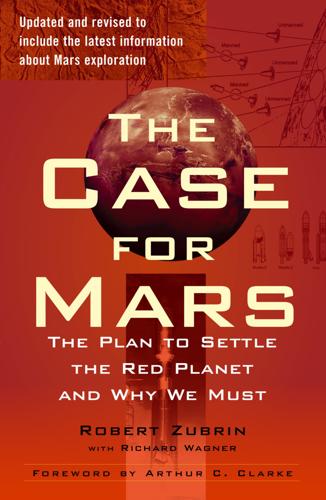
Case for Mars
by
Robert Zubrin
Published 27 Jun 2011
Like America in its relationship to Britain and the West Indies, Mars has a positional advantage with respect to the asteroids that will allow it to participate in a useful way to support extractive activities on behalf of Earth. But despite the shortsighted calculations of eighteenth-century European statesmen and financiers, the true value of America never was as a logistical support base for the West Indies’ sugar and spice trade, or inland fur trade, or as a potential market for manufactured goods. The true value of America was as the future home for a new branch of human civilization, one that combined its humanistic antecedents and its frontier conditions to develop into the most powerful engine for human progress and economic growth the world had ever seen.
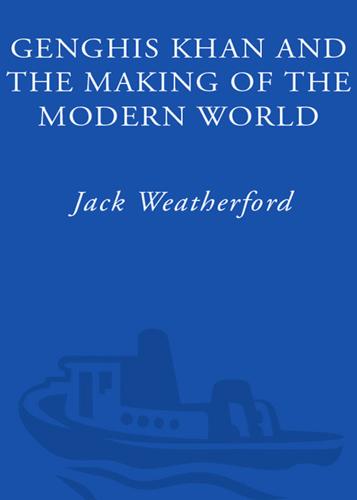
Genghis Khan and the Making of the Modern World
by
Jack Weatherford
Published 21 Mar 2005
The Mongols had less success in the islands that are today Indonesia. In 1289, Khubilai dispatched an envoy to Java to request the same submission he had received from the rulers of nearby kingdoms, but the king feared that the Mongols might be planning on taking away Javanese control of the valuable spice trade from the Molucca Islands. The Javanese king defiantly branded the face of the envoy and sent him back to Khubilai, who ordered the preparation of an armada to capture Java and exact revenge on its king, just as he had done in the similar episode in Japan. In 1292, the newly constructed fleet of one thousand ships and boats with twenty thousand soldiers set sail with a year’s supply of provisions.
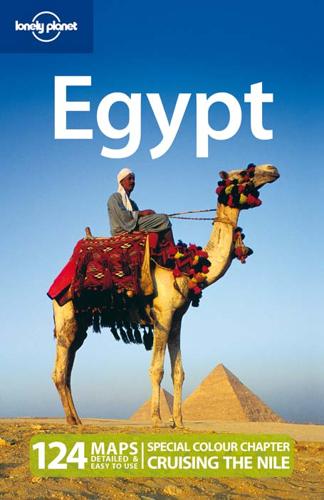
Egypt
by
Matthew Firestone
Published 13 Oct 2010
They can be persistent, but telling them you just want to walk and know where you’re going, with a joke thrown in to keep everything amicable, will save you a lot of hassle. Other shopping scams include the old ‘two for five pounds’ hard sell (when you go to pay, the stallholder will say that he meant five British pounds), the dried-banana-leaf-instead-of-papyrus con and the safflower-not-saffron spice trade. When visiting monuments in Islamic Cairo, it pays to know that, with two exceptions, all mosques are free to enter, as they are places of worship. But some caretakers will claim an admission price – if you’re not sure it’s legit, ask if there is a ticket (‘fee taz-kar-a?’) and politely refuse payment if there is none.
…
It also served as a thriving centre of trade and export between the Nile Valley and the Red Sea and beyond. Even during its period of decline, the city remained a major settlement and was sufficiently important for the Ottomans to fortify it during the 16th century. Later the British beat the French for control of Al-Quseir and for some time it was the main import channel for the spice trade from India to Britain. However, the opening of the Suez Canal in 1869 put an end to all this and the town’s decline accelerated, with only a brief burst of prosperity as a phosphate-processing centre in the early decades of the 20th century. Information Hot Line Internet Café (Sharia Port Said; per hr E£10; 9am-3am) Main post office (Sharia al-Sheikh Abdel Ghafaar; 8.30am-2pm Sat-Thu) National Bank of Egypt (Safaga rd; 8.30am-2pm Sun-Thu) No ATM (yet).
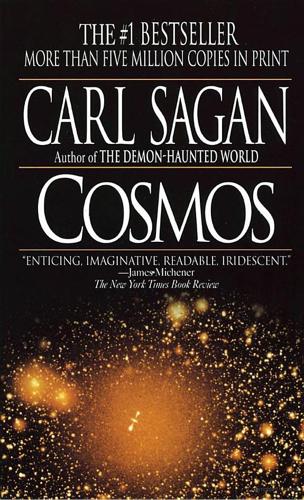
Cosmos
by
Carl Sagan
Published 1 Jan 1980
On the other hand, suppose our time traveler had persuaded Queen Isabella that Columbus’ geography was faulty, that from Eratosthenes’ estimate of the circumference of the Earth, Columbus could never reach Asia. Almost certainly some other European would have come along within a few decades and sailed west to the New World. Improvements in navigation, the lure of the spice trade and competition among rival European powers made the discovery of America around 1500 more or less inevitable. Of course, there would today be no nation of Colombia, or District of Columbia or Columbus, Ohio, or Columbia University in the Americas. But the overall course of history might have turned out more or less the same.
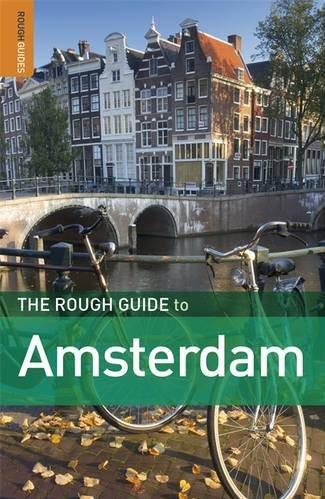
The Rough Guide to Amsterdam
by
Martin Dunford
,
Phil Lee
and
Karoline Thomas
Published 4 Jan 2010
The Grachtengordel | Grachtengordel west | The Anne Frank Huis | The story of Anne Frank The story of Anne, author of The Diary of a Young Girl, her sister, parents and their friends, is well known. Anne’s father, Otto Frank, was a well-to-do Jewish businessman who fled Germany in December 1933 after Hitler came to power, moving to Amsterdam, where he established a spice-trading business on the Prinsengracht. After the German occupation of the Netherlands, Otto – along with many other Jews – felt he could avoid trouble by keeping his head down. However, by 1942 it was clear that this would not be possible; Amsterdam’s Jews were isolated and conspicuous, confined to certain parts of the city and forced to wear a yellow star, and roundups were increasingly common.

Open: The Story of Human Progress
by
Johan Norberg
Published 14 Sep 2020
Soon the Dutch drove out the Portuguese from Malacca and Sri Lanka, and challenged Spain in the Caribbean and northern South America. As a new colonial power, however, the Dutch showed that their ideals about freedom and openness only applied domestically. A Dutch force with Japanese mercenaries exterminated almost the whole population of the Banda Islands, east of Java, when the Dutch wanted to monopolize their spice trade in 1621, and eventually replaced them with slaves and convicts. Innovations in shipbuilding made the new trade empire possible. In the 1590s, the Dutch developed the ‘fluyt’, a ship with a very large cargo space and a flat bottom and shallow draught that made it easier to navigate shallow ports and rivers.
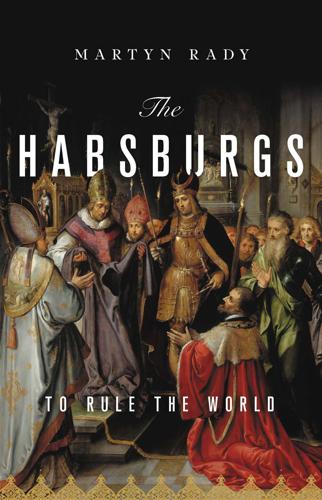
The Habsburgs: To Rule the World
by
Martyn Rady
Published 24 Aug 2020
Its way to the east was blocked by the Persian Safavid Empire and by the advance of Muscovy from the north. On its western border, a line of defensive works built across Hungary by Ferdinand I impeded further movement into Christian Europe. And in the Indian Ocean the Portuguese had seized control of the spice trade that fed the European markets, diverting a part of it via the Cape of Good Hope. There was in Istanbul considerable interest in the discovery of the New World. One of Columbus’s earliest maps survives in a copy of a copy made by Ottoman navigators, versions of which were at the request of Suleiman’s first minister or grand vizier presented personally to the sultan.
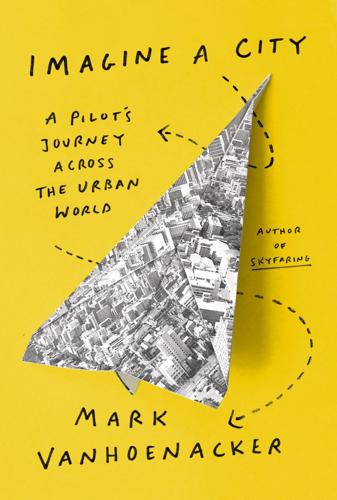
Imagine a City: A Pilot's Journey Across the Urban World
by
Mark Vanhoenacker
Published 14 Aug 2022
CHAPTER 10: CITY OF SNOW The section on Istanbul is adapted from “Four Cities in a Day,” an article I wrote for The Monocle Escapist in the summer of 2015. The description of Istanbul as “sovereign over all others” appears in Michael Krondl’s The Taste of Conquest: The Rise and Fall of the Three Great Cities of Spice, a book about the spice trade; its description as the “Queen of Cities” is from the preface to Thomas F. Madden’s extraordinary book Istanbul: City of Majesty at the Crossroads of the World, in a list of some of the city’s names: “Byzantion, New Rome, Antoniniana, Constantinople, Queen of Cities, Miklagard, Tsargrad, Stamboul, Islambul, the Gate of Happiness, and perhaps most eloquently of all, ‘the City.’ ” In our correspondence, Dr.
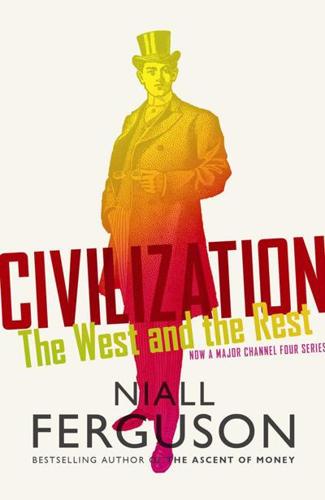
Civilization: The West and the Rest
by
Niall Ferguson
Published 28 Feb 2011
(tailors of Savile Row) 220–21, 220n population figures/density 4, 5, 10, 17, 20–21, 25, 26, 45, 105–6, 200, 200n, 218, 308 depopulation 12, 23, 25, 44 life expectancy 5, 10, 24, 147–8, 205, 208; in Africa 168, 171, 190–91 Muslims 290 young people 244 pornography 273, 274 Portugal 4, 9, 14, 202n China and 35 exploration, voyages of 33–5, 39, 53, 130 India and 34, 35, 39 Portuguese empire 97, 144, 176 Pottier, Eugène: ‘The Internationale’ 208 Priestley, Joseph 201 printing 27, 60 impact/spread of 60–63, 67, 77, 263 Islamic attitude to 68, 86 Pritchard, Jack 136 property rights 13, 97, 99, 111, 125, 152, 288 in British North American colonies 106–7, 106n, 109–12, 115–16, 117, 124–5, 138; headright system 111 John Locke on 111, 112 slaves as property 132, 135–6 in Spanish South American colonies 102, 113–14, 119, 124, 128 Protestantism 106, 107, 114, 259, 264 British North American colonies as Protestant 106, 114 in China 277–80, 282–8; radical sects 285–6 evangelical, in US 273–4 missionaries 263–4; in China 277–80, 282–3 Max Weber on 259, 260–64, 276, 283 see also Christianity Protestant work ethic see work ethic Prussia 144, 159, 214 Berlin 75–6, 86 the Enlightenment 76–9, 81 under Frederick the Great 71, 73–85 Islamic envoys in 86 political system 73, 80 Potsdam 81–8; Sanssouci palace 73–4, 79 religious toleration 76, 78 Silesia, invasion of 74–5 Prussian Academy of Science and Belle-Lettres 79, 80, 81 Prussian army 74–5, 81–2, 91 public health 147, 148, 177, 205 in French West Africa 171–2 see also health issues Puerto Rico 144 Punch 169 Quebec Act (1774) 116 Quesnay, François, on China 46 Quigley, Carroll 3, 297–8 his ‘Rhodes–Milner group’ theory 298n Tragedy and Hope … 298n racial issues in French West Africa 174–5 in German colonies 176, 177–8 interbreeding (miscegenation) 133–6; in French colonies (métissage) 164 in South America 119, 120, 125–6, 133, 135 in US 129, 133, 134–6, 137–9; Civil Rights movement 245; segregation 137–8, 177 racial theory see eugenics railways 170, 171, 204, 215, 218, 224 Reagan, Ronald 252 Reche, Otto 189 Redhouse, James 89 Reformation 9, 38, 60–62, 67, 259 see also Luther, Martin religious issues 3, 8, 17, 266–7 atheism 8, 289 Christianity see Christianity Freud on 270–71, 273 Islam see Islam science/technology and 67–8 Adam Smith on 276 religious toleration 76, 78, 114 religious tracts/publications 61–3 see also individual authors religious wars/conflict 9, 12, 38–9 French revolution as 151, 152, 153, 154 Islamic 71 Resmi Efendî, Ahmed 86–7 revolution 162–3, 164, 227–8, 244, 246, 251–2 by students/young people 245–9 see also individual revolutions Rhodes, Cecil 298n Ricardo, David, his comparative advantage doctrine 202, 202n Ricci, Matteo, SJ, in China 41 Richard II, King of England 23–4 Richard, Timothy 282 Richard of Wallingford 41 Richardson, Lewis Fry 301–2, 301n Rivera, Diego: The Arsenal (painting) 162n Roberts, Richard 200 Robespierre, Maximilien 156 Robins, Benjamin 83–4 New Principles of Gunnery 83 on rifled gun barrels 84 rock and roll/ popular music 230, 243–4, 246, 249–50, 273, 274 Rohrbach, Paul von 181 German Colonial Economics 176 Roman Catholicism see Catholicism Roman Empire 16–17, 296 Gibbon on 257–9, 291–2 Romania 251 Roosevelt, President Franklin Delano xxiv, 230 Rosa, Salvator: L’umana fragilatà (painting) 26 Rosenberg, Alfred 193 Ross, Ronald 169–70 Rothschild, Nathan 161 Roume, Ernest, Governor of French West Africa 170–71 Rousseau, Jean-Jacques 155, 156 Social Contract 78, 151–2 Royal Observatory, Greenwich 70 Royal Society of London 69–70, 80, 83, 84 Copley Medal 84 Ruiz-Linares, Andrés 133 Russia/Soviet Union 7, 83, 156, 303 economic growth 231–2 expansion of 144 exploration of 36 France and 160 Germany and 192, 194, 231–2: in Second World War 233–4 under Gorbachev 250 Japan and 226 legal system 244 Napoleon Bonaparte and 160 nationalism in 182, 227–8 US and 236; Cold War 236–9, 250 as a Western civilization 15 Russian army 234 Russian Revolution (1917–18) 182, 227–8 Russo-Japanese War (1904) 226 Safavid empire 9 St Alban’s Abbey 27, 41 Saint-Domingue (island) 160 Saint-Exupéry, Antoine de: The Little Prince 90 Sandys, George 283 sanitation 23, 147, 179 see also health issues Schacht, Hjalmar 231 Schaudinn, Fritz 175–6 Schiller, Friedrich 77, 79 Schubert, Franz xxiii Schubert, Helmut 194 Schularick, Moritz xvii Schumpeter, Joseph 205 science/technology 7, 10–11, 12, 14, 50–95, 257, 287 advances in/spread of 41–2, 47, 57, 60–71, 216–18, 317–18; chronology of 65–6; as Eurocentric 67 astronomy 64, 65, 66; Islamic 68–9 ballistics 83–5 Chinese 11, 27–8 definition 13 in East Asia 4, 11 gravity, law of 70 Industrial Revolution see Industrial Revolution Islamic see Islamic science/technology in Israel 93–4 military 37, 41, 57, 65n, 233, 235–6 nuclear 94–5 optics 51–2, 64, 70 religious issues in 67–8 royal patronage of 70; by Frederick the Great 71, 79–80, 84 scientific institutions 69–70, 79, 89 scientific method 60, 64–5, 67, 70 collaborative 70 Scotland 263 England and 24, 105, 107, 213 Industrial Revolution 199 see also Britain Scott, Sarah 289 Second World War (1939–45) 192, 233–6 casualty figures 193; civilian 233, 234 causes of 233 Germany in 189–90, 191–5, 231–4; see also Hitler, Adolf Italy in 233–4 Japan in 233–5 Seven Years’ War (1756–63) 115, 116, 116n sexual revolution 246 Shakespeare, William 23, 62n, 324n Shark Island concentration camp, German South-West Africa 179–80 Sharp, Granville 133 Shaw, George Bernard, on Western medicine 148 Shays, Daniel 117 Sherrington, Charles 300 shipbuilding industry 22, 28–9, 37, 48 Sibutus, George 62 siege warfare 52, 54–7 Siegert, Johann Gottlieb Benjamin 121n Sierra Leone 168 silver, from South America 101–2 Singapore 240, 306–7 Singer sewing machines 216–18, 220 Sivasi Efendi 71 slave revolts 131–2, 136, 160 slavery/slave trade 97, 120, 125, 129–36 abolition of 129, 131, 132–3; in British colonies 177; in French colonies 163, 177 in Africa 176, 177 slaves as property 132, 135–6 in Spanish South American colonies 129, 130–32, 133, 135, 136 in US 129, 130, 132–3, 134–6 Smith, Adam 7, 78, 301 on China 19, 20, 46, 78 on religion 276 Theory of Moral Sentiments xxiv–xxv The Wealth of Nations 297 Smith, Abraham (English migrant to South Carolina) 103, 106, 111–12 Sobieski, Jan III, King of Poland 55–6 socialism 208–9 Sorokin, Pitrim 297 Soviet Union see Russia/Soviet Union Spain exploration, voyages of 35–6 France and 119 Spanish Civil War (1936–9) 231, 233 Spanish empire 144 in America see America, South, Spanish colonies in Spengler, Oswald: The Decline of the West 297 spice trade 33, 34, 36 Spinoza, Benedict (Baruch) xxiii, 65 Spurgeon, Charles Haddon 282 Stead, William T. 298n steam engines 70, 200, 204, 218 Stendhal (Henri Marie Beyle): The Red and the Black 162 Stevens, John Lloyd 298–9 Stevenson, Robert Louis xxvi Stott, George 282, 284 Strauss, Levi 241 Suez Canal 219 suffrage, male 210 in French colonies 163 sugar/sugar production 10, 45, 129, 131–2, 160 Suleiman the Magnificent 52–3, 52n, 56–7, 72 Sun Yat-sen 283 Switzerland 41, 159 syphilis 176 Taiping Rebellion, China 211, 279–90, 285 Takiyüddīn al-Rāsid (Taqi al-Din) 68–9 Taleb, Nassim 301 Tamani, Hüseyin Rifki 69 Tang Yi 286 Tanweer, Shehzad 291 tariffs see trade tariffs Tawney, R.

The Rational Optimist: How Prosperity Evolves
by
Matt Ridley
Published 17 May 2010
Kung people 44, 135, 136–7 Kuznets curve 106 Kwakiutl people 92 Lagos 322 Lagrange Point 346 lakes, acidification of 305–6 Lamalera people 87 Lancashire 214, 217, 232, 263 Landes, David 223, 406 Lang, Tim 392 language: and exchange 58; genes for 55; Indo-European 129; and isolationism 73; Neanderthals 4, 55; numbers of languages 73; as unique human development 4 Laos 209 lapis lazuli 162, 164 Lascaux caves, France 6 lasers 272 Lassa fever 307 Laurion, Attica 171 Law, John 29, 259 Lawson, Nigel, Baron 331 Lay, Ken 29, 385 Layard, Richard 25 lead 167, 174, 177, 213 Leadbetter, Charles 290 Leahy, Michael 92 leather 70, 122, 167, 176 Lebanon 167 LeBlanc, Steven 137 LEDs (light-emitting diodes) 21–2 lentils 129 Leonardo da Vinci 196, 251 Levy, Stephen 355 Liang Ying (farm worker) 220 liberalism 108, 109–110, 290 Liberia 14, 316 libertarianism 106 Libya 171 lice 68 lichen 75 life expectancy: in Africa 14, 316, 422; in Britain 13, 15, 284; improvements in 12, 14, 15, 17–18, 205, 284, 287, 298, 316; in United States 298; world averages 47 Life (magazine) 304 light, artificial 13, 16, 17, 20–22, 37, 233, 234, 240, 245, 272, 368 light-emitting diodes (LEDs) 21–2 Limits to Growth (report) 303–4, 420 Lindsey, Brink 102, 109 linen 216, 218 lions 43, 87 literacy 106, 201, 290, 353, 396 Liverpool 62, 283 local sourcing (of goods) 35, 41–2, 149, 392; see also food miles Locke, John 96 Lodygin, Alexander 272 Lombardy 178, 196 Lomborg, Björn 280 London 12, 116, 186, 199, 218, 222, 282; as financial centre 259 longitude, measurement of 261 Longshan culture 397 Los Angeles 17, 142 Lothal, Indus valley 162, 164 Louis XI, King of France 184 Louis XIV, King of France 36, 37, 38, 184, 259 Lowell, Francis Cabot 263 Lübeck 180 Lucca 178, 179 Lunar Society 256 Luther, Martin 102 Luxembourg 331 Lyon 184 Macao 183 MacArthur, General Douglas 141 Macaulay, Thomas Babington, 1st Baron 11, 285–7, 359 McCloskey, Deirdre 109, 366–7 Mace, Ruth 73 McEwan, Ian 47 Machiguenga people 87 MacKay, David 342 McKendrick, Neil 224 McKibben, Bill 293 Macmillan, Harold, 1st Earl of Stockton 16 McNamara, Robert 203 mad-cow disease (vCJD) 280, 308 Madagascar 70, 299 Maddison, Angus 180 Maddox, John 207 Madoff, Bernard 28–9 Maghribis 178, 180 magnesium 213 maize 126, 146–7, 153, 155, 156, 163; for biofuel 240, 241 malaria 135, 157, 275, 299, 310, 318, 319, 331, 336, 353, 428, 429 Malawi 40–41, 132, 316, 318 Malawi, Lake 54 Malay Peninsula 66 Malaysia 35, 89, 242, 332 Mali 316, 326 Malinowski, Bronislaw 134 malnutrition 154, 156, 337 Maltese Falcon, The (film) 86 Malthus, Robert 139, 140, 146, 191, 249, 303 Malthusianism 141, 193, 196, 200, 202, 401 mammoths 68, 69, 71, 73, 302 Manchester 214, 218, 283 Mandell, Lewis 254 manganese 150, 213 mangoes 156, 327, 392 Manhattan 83 manure 147, 150, 198, 200, 282 Mao Zedong 16, 187, 262, 296, 311 Marchetti, Cesare 345–6 Marcuse, Herbert 291 Marie-Antoinette, Queen of France 199 markets (in capital and assets) 9, 258–60 markets (in goods and services): and collective betterment 9–10, 36–9, 103–110, 115–16, 281; disdain for 102–3, 104, 291–2, 358; etiquette and ritual of 133–4; and generosity 86–7; global interdependence 42–3; market failure 182, 250; ‘perfect markets’ 249–50; and population control 210–211; and preindustrial economies 133–4; and trust 98–100, 103; and virtue 100–104, 105; see also bartering; exchange; trade Marne, River 234 Martu aborigines 62 Marx, Karl 102, 104, 107–8, 291, 406 Marxism 101, 217–18, 319, 356 Maskelyne, Nevil 221 Maudslay, Henry 221 Mauritius 187, 316 Mauryan empire 172–3, 201, 357 Maxwell, James Clerk 412 measles 14, 135, 310 meat eating 51, 60, 62, 68–9, 126, 147, 156, 241, 376 Mecca 177 Mediterranean Sea: prehistoric settlements 56, 68–9, 159; trade 89, 164, 167–8, 169, 171, 176, 178 meerkats 87 Mehrgarh, Baluchistan 162 Mehta, Suketa 189 Meissen 185 memes 5 Menes, Pharaoh of Egypt 161 mercury 183, 213, 237 Mersey, River 62 Merzbach valley, Germany 138 Mesopotamia 38, 115, 158–61, 163, 177, 193, 251, 357; see also Assyrian empire; Iraq metal prices, reductions in 213 Metaxas, Ioannis 186 methane 140, 329, 345 Mexico: agriculture 14, 123, 126, 142, 387; emigration to United States 117; hurricanes 335; life expectancy 15; nature conservation 324; swine flu 309 Mexico City 190 Meyer, Warren 281 Mezherich, Ukraine 71 mice 55, 125 Michelangelo 115 Microsoft (corporation) 24, 260, 268, 273 migrations: early human 66–70, 82; rural to urban 158, 188–9, 210, 219–20, 226–7, 231, 406; see also emigration Milan 178, 184 Miletus 170–71 milk 22, 55, 97, 135 Mill, John Stuart 34, 103–4, 108, 249, 274, 276, 279 Millennium Development goals 316 Miller, Geoffrey 44, 274 millet 126 Mills, Mark 244 Ming empire 117, 181–4, 260, 311 Minoan civilisation 166 Mississippi Company 29 Mittal, Lakshmi 268 mobile phones 37, 252, 257, 261, 265, 267, 297, 326–7 Mohamed (prophet) 176 Mohawk Indians 138–9 Mohenjo-Daro, Indus valley 161–2 Mojave Desert 69 Mokyr, Joel 197, 252, 257, 411, 412 monarchies 118, 162, 172, 222 monasteries 176, 194, 215, 252 Monbiot, George 291, 311, 426 money: development of 71, 132, 392; ‘trust inscribed’ 85 Mongolia 230 Mongols 161, 181, 182 monkeys 3, 57, 59, 88; capuchins 96–7, 375 monopolies 107, 111, 166, 172, 182 monsoon 174 Montesquieu, Charles, Baron de 103 moon landing 268–9, 275 Moore, Gordon 221, 405 Moore, Michael 291 Morgan, J.P. 100 Mormonism 205 Morocco 53, 209 Morse, Samuel 272 mortgages 25, 29, 30, 323; sub-prime 296 Moses 138 mosquito nets 318 ‘most favoured nation’ principle 186 Moyo, Dambisa 318 Mozambique 132, 316 Mozart, Wolfgang Amadeus 267 Mugabe, Robert 262 Mumbai 189, 190 murder 14, 20, 85, 88, 106, 118, 201 Murrays’ Mills, Manchester 214 music 70, 115, 266–7, 326 Myceneans 166 Nairobi 322 Namibia 209, 324 Napoleon I 184 NASA 269 Nashville 326 Nassarius shells 53, 56, 65 National Food Service 268 National Health Service 111, 261 nationalisation (of industry) 166, 182 nationalism 357 native Americans 62, 92–3, 138–9 Natufians 125 natural selection 5–6, 27, 49–50, 350 nature conservation 324, 339; see also wilderness land, expansion of Neanderthals 3, 4, 53, 55, 64, 65, 68, 71, 79, 373, 378 Nebuchadnezzar 169 needles 43, 70 Nehru, Jawaharlal 187 Nelson, Richard 5 Nepal 15, 209 Netscape (corporation) 259 New Deal 109 New Guinea: agriculture 123, 126, 387; languages 73; malaria 336; prehistoric 66, 123, 126; tribes 87, 92, 138 New York 12, 16, 83, 169, 190 New York Times 23, 295, 305 New Zealand 17, 35, 42, 70 Newcomen, Thomas 244, 256 newspapers 270, 295; licensing copyrights 267 Newsweek (magazine) 329 Newton, Sir Isaac 116, 256 nickel 34, 213 Niger 208–9, 210, 324 Nigeria 15, 31, 99, 117, 210, 236, 316 Nike (corporation) 115, 188 Nile, River 161, 164, 167, 171 nitrogen fertlisers 140, 146, 147, 149–50, 155, 305 nitrous oxide 155 Nobel Peace Prize 143, 280 ‘noble savage’ 43–4, 135–8 Norberg, Johann 187 Nordau, Max 288 Nordhaus, William 331 Norte Chico civilisation 162–3 North, Douglass 324, 397 North Carolina 219–20 North Korea 15, 116–17, 187, 333 North Sea 180, 185 North Sentinel islanders 67 Northern Rock (bank) 9 Northumberland 407 Norton, Seth 211 Norway 97–8, 332, 344 Norwich 225 nostalgia 12–13, 44, 135, 189, 284–5, 292 Novgorod 180 Noyce, Robert 221, 405 nuclear accidents 283, 293–4, 308, 345, 421 nuclear power 37, 236, 238, 239, 245, 246, 343, 344, 345 nuclear war, threat of 280, 290, 299–300, 333 Obama, Barack 203 obesity 8, 156, 296, 337 obsidian 53, 92, 127 occupational safety 106–7 ocean acidification 280, 340–41 ochre 52, 53, 54, 92 octopi 3 Oersted, Hans Christian 272 Oetzi (mummified ‘iceman’) 122–3, 132–3, 137 Ofek, Haim 131 Ohalo II (archaeological site) 124 oil: and ‘curse of resources’ 31, 320; drilling and refining 242, 343; and generation of electricity 239; manufacture of plastics and synthetics 237, 240; pollution 293–4, 385; prices 23, 238; supplies 149, 237–8, 280, 281, 282, 296, 302–3 old age, quality of life in 18 olive oil 167, 169, 171 Olson, Ken 282 Omidyar, Pierre 99 onchoceriasis 310 open-source software 99, 272–3, 356 Orang Asli people 66 orang-utans 60, 239, 339 organic farming 147, 149–52, 393 Orinoco tar shales, Venezuela 238 Orma people 87 ornament, personal 43, 52, 53, 54, 70, 71, 73 O’Rourke, P.J. 157 Orwell, George 253, 290, 354 Ostia 174 otters 297, 299 Otto I, Holy Roman emperor 178 Ottoman empire 161 Oued Djebanna, Algeria 53 oxen 130, 136, 195, 197, 214–15 oxytocin (hormone) 94–5, 97–8 ozone layer 280, 296 Paarlberg, Robert 154 Pacific islanders 134 Pacific Ocean 184 Paddock, William and Paul 301 Padgett, John 103 Page, Larry 114 Pagel, Mark 73 Pakistan 142–3, 204, 300 palm oil 57–8, 239, 240, 242, 339 Pan Am (airline) 24 paper 282, 304 Papin, Denis 256 papyrus 171, 175 Paraguay 61 Pareto, Vilfredo 249 Paris 215, 358; electric lighting 233; restaurants 264 parrots 3 Parsons, Sir Charles 234 Parthian empire 161 Pasadena 17 Pataliputra 173 patents 223, 263, 264–6, 269, 271, 413–14 patriarchy 136 Paul, St 102 PayPal (e-commerce business) 262 peacocks 174 peanuts 126 peat 215–16 Peel, Sir Robert 185 Pemberton, John 263 pencils 38 penicillin 258 Pennington, Hugh 308 pensions 29, 40, 106 Periplus of the Erythrean Sea, The 174 Persia 89, 161, 171, 177 Persian Gulf 66, 164, 340, 429 Peru 97–8, 126, 162–3, 320, 387; silver 31, 132, 183–4 pessimism: and belief in turning points in history 287–9, 301, 311; natural pessimism of human nature 294–5; in nineteenth century 283–8; in twentieth century 281, 282, 288–91, 292–4, 296–308, 328–9; in twenty-first century 8–9, 17, 28, 281–2, 291–2, 308–311, 314–15; ubiquity of 280–85, 291–2, 294–7, 341, 352 pesticides 151–2, 154, 155, 336; DDT 297–8, 299; natural 298–9 Peto, Richard 298 Petty, Sir William 185, 199, 254, 256 pharmaceutical industry 260, 266 philanthropy 92, 105, 106, 295, 318–19, 356 Philip II, King of Spain 30–31 Philip II of Macedon 171 Philippines 61–2, 89, 234 Philistines 166, 170, 396 Phillips, Adam 103, 292 Phoenicians 166–70, 177 photography 114, 283, 386 physiocrats 42 pi, calculation of 173 pig farming 135, 145, 148, 197 Pinnacle Point, South Africa 52, 83 Pisa 115, 178 plagues 135, 176, 195–6, 197; forecasts of 280, 284, 307–310; see also Black Death plastics 237, 240, 270 Plate, River 186 platinum 213 Plato 292 Plautus 44 ploughing 129–30, 136, 145, 150, 195, 197, 198, 215 pneumonia 13, 353 Polanyi, Karl 164–5 polar bears 338–9 polio 261, 275, 310 political fragmentation 170–73, 180–81, 184, 185 pollution: effects on wildlife 17, 297, 299, 339; and industrialisation 218; pessimism about 293–4, 304–6; reduction in 17, 106, 148, 279, 293–4, 297, 299 polygamy 136 Pomeranz, Kenneth 201–2 Ponzi, Charles 29 Ponzi schemes 28–9 population control policies 202–4, 210–211 population growth: and food supply 139, 141, 143–4, 146–7, 192, 206, 208–9; global population totals 3, 12, 14, 191, 206, 332; and industrialisation 201–2; and innovation 252; pessimism about 190, 193, 202–3, 281, 290, 293, 300–302, 314; population explosions 8, 139, 141, 202, 206, 281; and specialisation 192–3, 351; see also birth rates; demographic transition; infant mortality; life expectancy porcelain 181, 183, 184–5, 225, 251 Porritt, Jonathan 314 Portugal 75, 183, 184, 317, 331 Post-it notes 261 Postrel, Virginia 290–91 potatoes 199 Potrykus, Ingo 154 pottery 77, 158, 159, 163, 168, 177, 225, 251 Pound, Ezra 289 poverty: and charitable giving 106; current levels 12, 15, 16–17, 41, 316, 353–4; and industrialisation 217–20; pessimism about 280, 290, 314–15; reduction in 12, 15, 16–17, 290; and self-sufficiency 42, 132, 200, 202, 226–7; solutions to 8, 187–8, 316–17, 322, 326–8, 353–4 Prebisch, Raul 187 preservatives (in food) 145 Presley, Elvis 110 Priestley, Joseph 256 printing: on paper 181, 251, 252, 253, 272; on textiles 225, 232 prisoner’s dilemma game 96 property rights 130, 223, 226, 320, 321, 323–5 protectionism 186–7, 226 Ptolemy III 171 Pusu-Ken (Assyrian merchant) 165–6 putting out system 226, 227, 230 pygmy people 54, 67 Pythagoras 171 Quarterly Review 284 quasars 275 Quesnay, François 42 racial segregation 108 racism 104, 415 radioactivity 293–4, 345 radios 264–5, 271 railways 252; and agriculture 139, 140–41; opposition to 283–4; speed of 283, 286; travel costs 23 rainforests 144, 149, 150, 240, 243, 250–51, 338 Rajan, Raghuram 317 Rajasthan 162, 164 Ramsay, Gordon 392 rape seed 240 Ratnagar, Shereen 162 ravens 69 Rawls, John 96 Read, Leonard 38 recession, economic 10, 28, 113, 311 reciprocity 57–9, 87, 95, 133 Red Sea 66, 82, 127, 170, 174, 177 Rees, Martin 294 Reformation 253 refrigeration 139 regress, technological 78–84, 125, 181–2, 197–200, 351, 380 Reiter, Paul 336, 428 religion 4, 104, 106, 170, 357, 358, 396; and population control 205, 207–8, 211; see also Buddhism; Christianity; Islam Rembrandt 116 Renaissance 196 research and development budgets, corporate 260, 262, 269 Research in Motion (company) 265 respiratory disease 18, 307, 310 restaurants 17, 37, 61, 254, 264 Rhine, River 265–6 rhinoceroses 2, 43, 51, 68, 73 Rhodes, Cecil 322 Ricardo, David 75, 169, 187, 193, 196, 249, 274 rice 32, 126, 143, 146–7, 153, 154, 156, 198 Rifkin, Jeremy 306 Riis, Jacob 16 Rio de Janeiro, UN conference (1992) 290 risk aversion 294–5 Rivers, W.H.R. 81 Rivoli, Pietra 220, 228 ‘robber-barons’ 23–4, 100, 265–6 Rockefeller, John D. 23, 281 Rocky Mountains 238 Rogers, Alex 340 Roman empire 161, 166, 172, 173–5, 184, 214, 215, 259–60, 357 Rome 158, 175 Romer, Paul 269, 276–7, 328, 354 Roosevelt, Franklin D. 109 Roosevelt, Theodore 288 Rosling, Hans 368 Rothschild, Nathan 89 Rousseau, Jean-Jacques 43, 96, 104, 137 Royal Institution 221 rubber 220 rule of law 116–18, 325 Rumford, Benjamin Thompson, Count 221 rural to urban migration 158, 188–9, 210, 219–20, 226–7, 231, 406 Ruskin, John 104 Russia, post-Soviet 14; oil and gas production 31, 37; population decline 205 Russia, prehistoric 71, 73 Russia, Tsarist 216, 229, 324 Rwanda 14, 316 rye 124, 125, 199, 224, 286 Sachs, Jeffrey 208 Saddam Hussein 161 Sahel region 123, 334 Sahlins, Marshall 133, 135 Sahul (landmass) 66, 67 Salisbury, Wiltshire 194 Salk, Jonas 38, 261 salmon 297 Salmon, Cecil 142 saltpetre 140 Sanger, Frederick 412 Sanskrit 129 São Paulo 190, 315 Sargon of Akkad 164 SARS virus 307, 310 satellites 252, 253 satnav (satellite navigation systems) 268 Saudi Arabia 238 Saunders, Peter 102 Schumpeter, Joseph 113–14, 227, 260, 276, 302 science, and innovation 255–8, 412 Scientific American 280 Scotland 103, 199–200, 227, 263, 315 scrub jays 87 scurvy 14, 258 sea level, changes in 128, 314, 333–4 Seabright, Paul 93, 138 seals (for denoting property) 130 search engines 245, 256, 267 Second World War 289 segregation, racial 108 Seine, River 215 self-sufficiency 8, 33–5, 39, 82, 90, 133, 192, 193, 351; and poverty 41–2, 132, 200, 202, 226–7 selfishness 86, 87, 93–4, 96, 102, 103, 104, 106, 292 Sematech (non-profit consortium) 267–8 Sentinelese people 67 serendipity 257, 346 serfs 181–2, 222 serotonin 156, 294 sexism 104, 136 sexual division of labour 61–5, 136, 376 sexual reproduction 2, 6, 7, 45, 56, 271; of ideas 6–7, 270–72 Sforza, house of 184 Shady, Ruth 162 Shakespeare, William 2; The Merchant of Venice 101, 102 Shang dynasty 166 Shapiro, Carl 265 sheep 97, 176, 194, 197 Shell (corporation) 111 shellfish 52, 53, 62, 64, 79, 92, 93, 127, 163, 167 Shennan, Stephen 83, 133 Shermer, Michael 101, 106, 118 ship-building 185, 229; see also boat-building shipping, container 113, 253, 386 Shirky, Clay 356 Shiva, Vandana 156 Siberia 145 Sicily 171, 173, 178 Sidon 167, 170 Siemens, William 234 Sierra Leone 14, 316 Silesia 222 silicon chips 245, 263, 267–8 Silicon Valley 221–2, 224, 257, 258, 259, 268 silk 37, 46, 172, 175, 178, 179, 184, 187, 225 Silk Road 182 silver 31, 132, 164, 165, 167, 168, 169, 171, 177, 183–4, 213 Silver, Lee 122–3 Simon, Julian 83, 280, 303 Singapore 31, 160, 187 Skhul, Israel 53 slash-and-burn farming 87, 130 slave trade 167, 170, 177, 229, 319, 380; abolition 214, 221 slavery 34, 214–15, 216, 407; ancient Greece 171; hunter-gatherer societies 45, 92; Mesopotamia 160; Roman empire 174, 176, 214; United States 216, 228–9, 415; see also anti-slavery sleeping sickness 310, 319 Slovakia 136 smallpox 13, 14, 135, 310; vaccine 221 smelting 131–2, 160, 230 smiling 2, 94 Smith, Adam 8, 80, 96, 101, 104, 199, 249, 272, 350; Das Adam Smith Problem 93–4; Theory of Moral Sentiments 93; The Wealth of Nations vii, 37–8, 39, 56, 57, 93, 123, 236, 283 Smith, Vernon 9, 90, 192 smoke, indoor 13, 338, 342, 353, 429 smoking 297, 298 Smoot-Hawley Tariff Act 186 soap 176, 215 social networking websites 262, 268, 356 socialism 106, 115, 357, 406 software, computer 99, 257, 272–3, 304, 356 solar energy 216, 243, 244 solar power 234–5, 238, 239, 245–6, 343, 344–5, 408 solar wind 346 solid-state electronics 257 Solomon, Robert 94 Solow, Robert 276 Somalia 14, 316, 337, 353 songbirds 55 Sony (corporation) 261 sorghum 126, 156 South Africa: agriculture 154; economy 316, 322; life expectancy 316; pre-historic 52, 53, 54, 83 South Korea 15, 31, 116–17, 187, 212, 322 South Sea Company 29 Southey, Robert 284–5 Soviet Union 16, 107, 109, 289, 299, 318, 324 soybeans 147, 148, 155, 156, 242 space travel 268–9, 275, 282 Spain: agriculture 129; climate 334; Franco regime 186, 289; Peruvian silver 30–31, 183–4; tariffs 222 spears 6, 43, 48, 50, 52, 70, 80, 81, 91 specialisation: by sex 61–5, 136, 376; and division of labour 7, 33, 38, 46, 61–5, 175; and exchange 7, 10, 33, 35, 37–8, 46, 56, 58, 75, 90, 132–3, 350–52, 355, 358–9; and innovation 56, 71–2, 73–4, 76–7, 119, 251; and population growth 192–3, 351; and rule of law 116, 117–18 speech 2, 55; see also language Spencer, Herbert 108 Spengler, Oswald 289 sperm counts 280, 293, 329 spice trade 167, 175, 176, 177, 179, 185 Spinoza, Baruch de 116 Sputnik 282 squashes (vegetables) 126, 163 Sri Lanka 35, 38, 66, 205, 208, 299 Stalin, Joseph 16, 262 stamp seals 130 Stangler, Dane 294 steam engines 126, 214, 221, 228, 231–2, 244, 256, 258, 270, 271, 413–14 steamships 139, 253, 283 Stein, Gil 159 Stein, Herb 281 stem-cell research 358 Stephenson, George 256, 412 Steptoe, Patrick 306 sterilisation, coerced 203–4 Stern (magazine) 304 Stern, Nicholas, Baron 330–31, 332, 425 Stiner, Mary 64, 69 storms 314, 333, 335 Strabo 174 string 70 strokes (cerebral accidents) 18 Strong, Maurice 311 Subramanian, Arvind 317 subsidies: farming 188, 328; renewable energy supplies 344 subsistence farming 87, 138, 175–6, 189, 192, 199–200 substantivism 164–5 suburbia 108, 110, 190 Sudan 316 suffrage, universal 107 sugar 179, 202, 215 sugar beet 243 sugar cane 240, 241, 242 Sun Microsystems (corporation) 259 Sunda (landmass) 66 sunflowers 126 Sungir, Russia 71, 73 superconductivity, high-temperature 257 Superior, Lake 131 supermarkets 36, 112, 148, 268, 292, 297 surfboards 273 Sussex 285 Swan, Sir Joseph 234, 272 Swaziland 14 Sweden 17, 184, 229, 305, 340, 344 Swift, Jonathan 121, 240 Switzerland 264 swords, Japanese 198–9 Sybaris 170–71 symbiosis 75, 351 synergy 6, 101 Syria 124, 130, 164, 174 Szilard, Leo 412 Tahiti 169 Taiwan 31, 187, 219, 322 Talheim, Germany 138 Tanzania 316, 325, 327–8; Hadza people 61, 63, 87 Tapscott, Don 262 Tarde, Gabriel 5 tariffs 185–7, 188, 222–3 taro (vegetable plant) 126 Tartessians 169 Tasman, Abel 80 Tasmania 78–81, 83–4 Tattersall, Ian 73 Taverne, Dick, Baron 103 taxation: carbon taxes 346; and charitable giving 319; and consumption 27; and declining birth rates 211; early development of 160; and housing 25; and innovation 255; and intergenerational transfer 30; Mauryan empire 172; Roman empire 184; United States 25 Taylor, Barbara 103 tea 181, 182, 183, 202, 327, 392 telegraph 252–3, 257, 272, 412 telephones 252, 261; charges 22–3, 253; mobile 37, 252, 257, 261, 265, 267, 297, 326–7 television 38, 234, 252, 268 Telford, Thomas 221 Tennessee Valley Authority 326 termites 75–6 terrorism 8, 28, 296, 358 Tesco (retail corporation) 112 Tesla, Nikola 234 text messaging 292, 356 Thailand 320, 322 Thales of Miletus 171 Thames, River 17 thermodynamics 3, 244, 256 Thiel, Peter 262 Thiele, Bob 349 Thoreau, Henry David 33, 190 3M (corporation) 261, 263 threshing 124, 125, 130, 153, 198; machines 139, 283 thumbs, opposable 4, 51–2 Thwaites, Thomas 34–5 Tiberius, Roman emperor 174, 259 tidal and wave power 246, 343, 344 Tierra del Fuego 45, 62, 81–2, 91–2, 137 tigers 146, 240 timber 167, 216, 229; trade 158, 159, 180, 202 time saving 7, 22–4, 34–5, 123 Timurid empire 161 tin 132, 165, 167, 168, 213, 223, 303 ‘tipping points’ 287–9, 290, 291, 293, 301–2, 311, 329 Tiwi people 81 Tokyo 190, 198 Tol, Richard 331 Tooby, John 57 tool making: early Homo sapiens 53, 70, 71; machine tools 211, 221; Mesopotamian 159, 160; Neanderthals 55, 71, 378; Palaeolithic hominids 2, 4, 7, 48–51; technological regress 80 Torres Strait islanders 63–4, 81 tortoises 64, 68, 69, 376 totalitarianism 104, 109, 181–2, 290 toucans 146 Toulouse 222 Townes, Charles 272 ‘toy trade’ 223 Toynbee, Arnold 102–3 tractors 140, 153, 242 trade: and agriculture 123, 126, 127–33, 159, 163–4; early human development of 70–75, 89–93, 133–4, 159–60, 165; female-centred 88–9; and industrialisation 224–6; and innovation 168, 171; and property rights 324–5; and trust 98–100, 103; and urbanisation 158–61, 163–4, 167; see also bartering; exchange; markets trade unions and guilds 113, 115, 223, 226 trademarks 264 traffic congestion 296 tragedy of the commons 203, 324 Trajan, Roman Emperor 161 transistors 271 transport costs 22, 23, 24, 37, 229, 230, 253, 297, 408 transport speeds 22, 252, 253, 270, 283–4, 286, 287, 296 trebuchets 275 Tressell, Robert 288 Trevithick, Richard 221, 256 Trippe, Juan 24 Trobriand islands 58 trust: between strangers 88–9, 93, 94–8, 104; and trade 98–100, 103, 104; within families 87–8, 89, 91 Tswana people 321, 322 tungsten 213 Turchin, Peter 182 Turkey 69, 130, 137 Turnbull, William (farm worker) 219 Turner, Adair, Baron 411 turning points in history, belief in 287–9, 290, 291, 293, 301–2, 311, 329 Tuscany 178 Tyneside 231 typhoid 14, 157, 310 typhus 14, 299, 310 Tyre 167, 168–9, 170, 328 Ubaid period 158–9, 160 Uganda 154, 187, 316 Ukraine 71, 129 Ulrich, Bernd 304 Ultimatum Game 86–7 unemployment 8, 28, 114, 186, 289, 296 United Nations (UN) 15, 40, 205, 206, 290, 402, 429 United States: affluence 12, 16–17, 113, 117; agriculture 139, 140–41, 142, 219–20; biofuel production 240, 241, 242; birth rates 211, 212; civil rights movement 108, 109; copyright and patent systems 265, 266; credit crunch (2008) 9, 28–9; energy use 239, 245; GDP, per capita 23, 31; Great Depression (1930s) 31, 109, 192; happiness 26–7; immigration 108, 199–200, 202, 259; income equality 18–19; industrialisation 219; life expectancy 298; New Deal 109; oil supplies 237–8; pollution levels 17, 279, 304–5; poverty 16–17, 315, 326; productivity 112–13, 117; property rights 323; rural to urban migration 219; slavery 216, 228–9, 415; tax system 25, 111, 241; trade 186, 201, 228 Upper Palaeolithic Revolution 73, 83, 235 urbanisation: and development of agriculture 128, 158–9, 163–4; global urban population totals 158, 189, 190; and population growth 209–210; and trade 158–61, 163–4, 167, 189–90; see also rural to urban migration Uruguay 186 Uruk, Mesopotamia 159–61, 216 vaccines 17, 287, 310; polio 261, 275; smallpox 221 Vandals 175 Vanderbilt, Cornelius 17, 23, 24 vCJD (mad-cow disease) 280, 308 Veblen, Thorstein 102 Veenhoven, Ruut 28 vegetarianism 83, 126, 147, 376 Venezuela 31, 61, 238 Venice 115, 178–9 venture capitalists 223, 258, 259 Veron, Charlie 339–40 Victoria, Lake 250 Victoria, Queen 322 Vienna exhibition (1873) 233–4 Vietnam 15, 183, 188 Vikings 176 violence: decline in 14, 106, 201; homicide 14, 20, 85, 88, 106, 118, 201; in pre-industrial societies 44–5, 136, 137–9; random 104 Visby, Gotland 180 vitamin A 353 vitamin C 258 vitamin D 129 Vivaldi, Antonio 115 Vladimir, Russia 71 Vogel, Orville 142 Vogelherd, Germany 70 voles 97 Voltaire 96, 103, 104, 256 Wagner, Charles 288 Wal-Mart (retail corporation) 21, 112–14, 263 Wales 132 Wall Street (film) 101 Walton, Sam 112–13, 263 Wambugu, Florence 154 war: in Africa 316; in hunter-gatherer societies 44–5; threat of nuclear war 280, 290, 299–300; twentieth-century world wars 289, 309; unilateral declarations of 104 water: contaminated 338, 353, 429; pricing of 148; supplies 147, 280, 281, 324, 334–5; see also droughts; irrigation water snakes 17 watermills 176, 194, 198, 215, 216–17, 234 Watson, Thomas 282 Watt, James 221, 244, 256, 271, 411, 413–14 wave and tidal power 246, 343, 344 weather forecasting 3, 4, 335 weather-related death rates 335–6 Wedgwood, Josiah 105, 114, 225, 256 Wedgwood, Sarah 105 weed control 145, 152 Weiss, George David 349 Weitzman, Martin 332–3 Welch, Jack 261 welfare benefits 16, 106 Wellington, Arthur Wellesley, 1st Duke of 89 Wells, H.G. 65, 313, 352, 354 West Germany 289–90 West Indies 202, 216, 310 Western Union (company) 261 Westinghouse, George 234 whales 6, 281, 302 whaling 87, 185, 281 wheat 42, 71, 124, 125, 129, 139, 140, 146–7, 149, 153, 156, 158, 161, 167, 300–301; new varieties 141–3 Wheeler, Sir Mortimer 162 wheels, invention of 176, 274 Whitehead, Alfred North 255 Wikipedia (online encyclopedia) 99, 115, 273, 356 Wilberforce, William 105, 214 Wilder, Thornton 359 wilderness land, expansion of 144, 147, 148, 239, 337–8, 347, 359 wildlife conservation 324, 329 William III, King 223 Williams, Anthony 262 Williams, Joseph 254 Williams, Rowan, Archbishop of Canterbury 102 Wilson, Bart 90, 324 Wilson, E.O. 243, 293 Wiltshire 194 wind power 239, 246, 343–4, 346, 408 wolves 87, 137 women’s liberation 108–9 wool 37, 149, 158, 167, 178, 179, 194, 224 working conditions, improvements in 106–7, 114, 115, 188, 219–20, 227, 285 World Bank 117, 203, 317 World Health Organisation 336–7, 421 World Wide Web 273, 356 World3 (computer model) 302–3 Wrangham, Richard 59, 60 Wright brothers 261, 264 Wright, Robert 101, 175 Wrigley, Tony 231 Y2K computer bug 280, 290, 341 Yahgan Indians 62 Yahoo (corporation) 268 Yangtze river 181, 199, 230 Yeats, W.B. 289 yellow fever 310 Yellow river 161, 167 Yemen 207, 209 Yir Yoront aborigines 90–91 Yong-Le, Chinese emperor 183, 184, 185 Yorkshire 285 Young, Allyn 276 young people, pessimism about 292 Young, Thomas 221 Younger Dryas (climatic period) 125 Yucatan 335 Zak, Paul 94–5, 97 Zambia 28, 154, 316, 317, 318, 331 zero, invention of 173, 251 zero-sum thinking 101 Zimbabwe 14, 28, 117, 302, 316 zinc 213, 303 Zuckerberg, Mark 262 Acknowledgements It is one of the central arguments of this book that the special feature of human intelligence is that it is collective, not individual – thanks to the invention of exchange and specialisation.

The Sovereign Individual: How to Survive and Thrive During the Collapse of the Welfare State
by
James Dale Davidson
and
William Rees-Mogg
Published 3 Feb 1997
Mandeville conveys delightful and often fanciful details about life around the globe, including the suggestion that many Ethiopians have only one foot: "[T]he foot is so large that it shadoweth all the body against the sun when they will lie and rest them." 3 Clearly, few of Mandeville's contemporaries who read his popular story were likely to have known that his Ethiopian "Bigfoot" did not exist. Not until the modern age began with the journeys of exploration at the very end of the fifteenth century were there sustained contacts between the continents. Intrepid captains like Christopher Columbus and Vasco da Gama who set out to capture the spice trade were extraordinary enough to be remembered in every literate household for the better part of five centuries. From the advent of farming until recent generations, life was characterized by its immobility. This is all but forgotten today, particularly in the European settlement colonies of the "New World," where movement is more fluid and everyone tends to draw his perspective from the vantage point of an immigrant.

Consumed: How Markets Corrupt Children, Infantilize Adults, and Swallow Citizens Whole
by
Benjamin R. Barber
Published 1 Jan 2007
This talented family trafficked in a wide variety of commodities, engaged in trade, and used the banking business associated with their properties to build monopolies and influence political power—acting the part of Weberian capitalists by investing wealth as well as creating it, deploying it as well as saving it, in the name of both worldly and spiritual ends. They began as merchants and their fortune originated in the spice trade and in woven goods in whose manufacture they were directly involved. In time, the business grew to encompass the mining industry (above all copper, but also silver, gold, and zinc), where Jacob the Rich eventually established near monopolies of a kind rare in the sixteenth century, though a model of cartelism for later centuries.
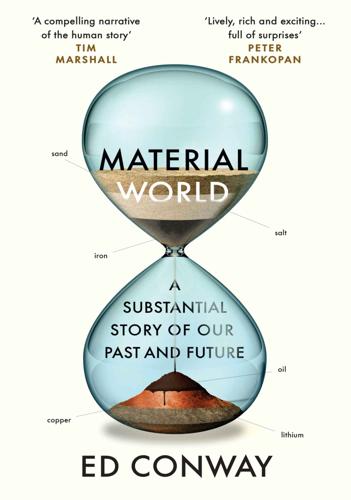
Material World: A Substantial Story of Our Past and Future
by
Ed Conway
Published 15 Jun 2023
Salt from across the Mediterranean – from Algeria, Sardinia, Ibiza and Mallorca, Cyprus and Crete – was shipped into Venice, where it was then sold on to markets throughout Italy and beyond. So rich did salt make its merchants that they could afford even more adventurous voyages to India and the Far East, where they soon came to dominate the spice trade. Venice’s Camera Salis, the salt office, became the heart of its fiscal system, accounting for more than one in seven of every ducat earned by the entire Venetian state.fn2 Perhaps you are beginning to see the pattern here. On the cliffs at Boulby, salt was the product that inspired a community to experiment with mass production.

Aerotropolis
by
John D. Kasarda
and
Greg Lindsay
Published 2 Jan 2009
Like the Big Three, however, it grew fat and sluggish on its profits, gradually ceding market share to the nimbler, more aggressive English East India Company—the Toyota of its day. The Amsterdam exchange made markets in 360 commodities, none of which were tulips. Fueled by the gross margins of the spice trades, bulb auctions devolved into speculative frenzies. At the peak of tulipomania in the 1630s, a single bulb could fetch a row house along Amsterdam’s canals. The tulip bubble set the pattern for all that followed—from the South Seas Bubble in 1720 to the railroad bust of 1847 and on through the Roaring Twenties and subsequent Depression.

Aftershocks: Pandemic Politics and the End of the Old International Order
by
Colin Kahl
and
Thomas Wright
Published 23 Aug 2021
The novel coronavirus emerged against the backdrop of a world increasingly in disarray, with the old international order already teetering on the brink of collapse.7 A HYPERGLOBALIZED WORLD Globalization is a fuzzy concept, but it typically refers to the volume and velocity of cross-border flows of trade, investment, technology, information, and people (workers, migrants, travelers, and tourists). Economically, globalization is not a new phenomenon. In some respects, it can be traced back centuries to the Silk Road, which brought luxury goods from China to customers throughout Eurasia, and later to the spice trade emanating from the Islamic world. It expanded further from the fifteenth to the eighteenth centuries as European states set up supply chains between their imperial homelands and the far-flung colonies they ruthlessly controlled. The first modern wave of globalization, however, is usually linked to the nineteenth century, and in particular the time between 1870 and World War I, when the industrial revolution and British hegemony on the seas significantly expanded global trade.

Power and Progress: Our Thousand-Year Struggle Over Technology and Prosperity
by
Daron Acemoglu
and
Simon Johnson
Published 15 May 2023
The much coveted “Damascus steel” was from India, and its calico and muslin were greatly prized in England. In response, the English woolen goods industry lobbied successfully for import restrictions in order to keep out the high-quality Indian textiles. Despite being established to pursue the spice trade, in its early years the East India Company’s commercial success was based on bringing finished cotton textiles and clothing into Britain. The company also organized production of cotton clothing in India because that is where skilled workers and the raw materials were. In the first hundred or so years of British control over parts of India, exports of finished cotton goods to Europe rose.
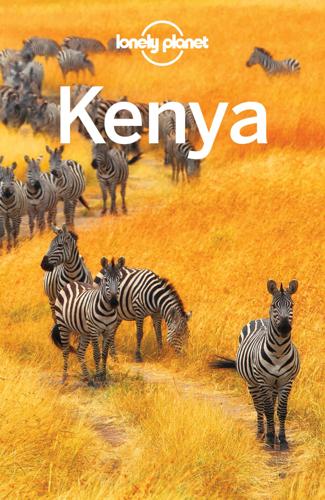
Lonely Planet Kenya
by
Lonely Planet
Manda Island The land time forgot, with sand dunes, mangroves and quiet beaches. Tiwi Beach The alter ego to Diani Beach and its equal in beauty. Diani Beach A crowded but still stunning beach. Dhow Trips Travelling the East African coast in a dhow (ancient Arab sailing vessel) carries echoes of ancient civilisations and trade winds past from the days of the spice trade. Their slow rhythm is perfectly suited to this tropical coast. Mkwiro There’s no other way to reach this quieter-than-quiet village. Matondoni ( GOOGLE MAP ) Watch dhows being built, then sail around the Lamu archipelago for a day. Lamu Find yourself a good captain and sail between Lamu and Manda Island for the day.
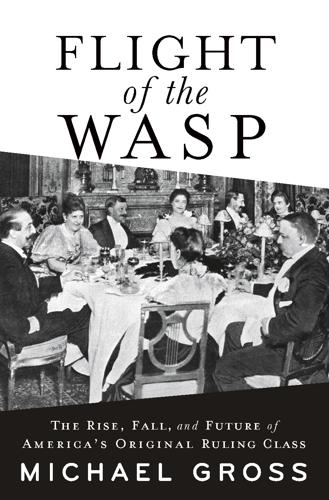
Flight of the WASP
by
Michael Gross
The first to distinguish himself in business, Joseph, started as a sailor in 1777, when he joined the crew of a Salem-based privateer as an apprentice seaman, moving from ship to ship and seeing the world, before becoming a maritime businessman.5 With partners, he bought more ships and went into the Far East spice trade—and also trafficked opium to China. By 1817, he was the wealthiest merchant in America, so important that President James Monroe would journey to Salem, Massachusetts, just to meet him.6 George Peabody didn’t share in that wealth. His father, Thomas, a fifth-generation Peabody raised on a family farm and a farmer himself, had eight children who survived childhood.
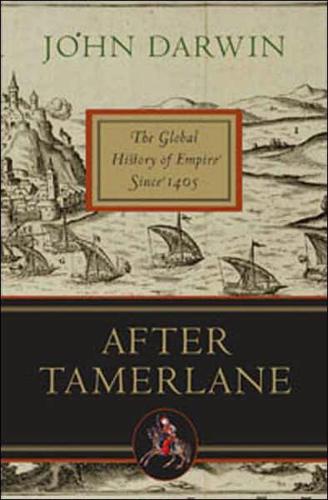
After Tamerlane: The Global History of Empire Since 1405
by
John Darwin
Published 5 Feb 2008
By the 1550s they had some fifty forts from Sofala in Mozambique to Macao in southern China, and ‘Golden Goa’ had become the capital of their Estado da India. The Estado was neither a territorial nor a commercial empire. In part it was an attempt to force a monopoly over the trade in pepper, the most lucrative spice exported to Europe. But the Portuguese lacked the power to do this, and much of the spice trade remained outside their control.7 Instead, the Estado became a system for extorting protection money from the seaborne trade between South East Asia, western India, the Persian Gulf and the Red Sea. Asian merchants had to buy a cartaz or safe conduct at one of the Portuguese ‘factories’ – Goa, Diu or Hormuz – or run the risk of plunder by the Estado’s sea captains.
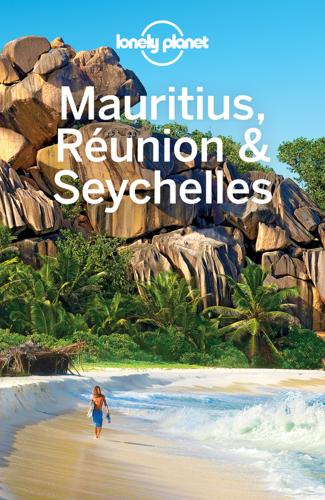
Mauritius, Réunion & Seychelles Travel Guide
by
Lonely Planet
The lobby's marble architecture and flowing infinity pools can only be described as sublime, and the opulent suites, hidden just beyond, continue the timeless elegance. This is one of the most beautiful hotels in Mauritius. The abundance of open-air pavilions and trim thatch is meant to elicit the ancient days of the spice trade – modern amenities are cleverly hidden and butlers are dressed in muted tones as they move across the grounds catering to every whim. Swimming pools, spas, access to Belle Mare Plage's golf courses and a floating restaurant (you'll see) round out the amenities list. oLe Saint GéranHOTEL€€€ ( MAP GOOGLE MAP ; %401 1688; www.oneandonlyresorts.com; Pointe de Flacq; ste incl half board from €350; aiWs) Le Saint Géran is classic Mauritian luxury at its finest.
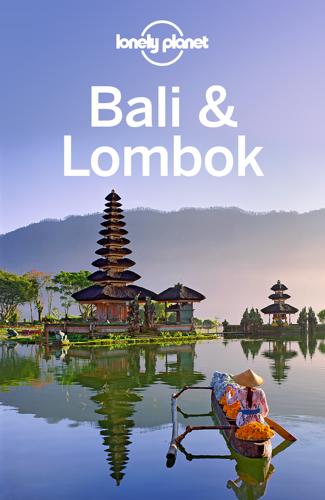
Bali & Lombok Travel Guide
by
Lonely Planet
At that time, Balinese prosperity and artistic activity, at least among the royalty, was at a peak, and the king who befriended de Houtman had 200 wives and a chariot pulled by two white buffalo, not to mention a retinue of 50 dwarfs, whose bodies had been bent to resemble the handle of a kris (traditional dagger). By the early 1600s, the Dutch had established trade treaties with Javanese princes and controlled much of the spice trade, but they were interested in profit, not culture, and barely gave Bali a second glance. In 1710, the 'capital' of the Gelgel kingdom was shifted to nearby Klungkung (now called Semarapura), but local discontent was growing; lesser rulers were breaking away, and the Dutch began to move in, using the old strategy of divide and conquer.

The Bread Lover's Bread Machine Cookbook: A Master Baker's 300 Favorite Recipes for Perfect-Every-Time Bread-From Every Kind of Machine
by
Beth Hensperger
Published 30 Apr 2000
Bake for 35 to 40 minutes, or until golden brown. Cool on a rack. The Baker’s Glossary of Sugars and Other Sweeteners Sugar has been a coveted ingredient for centuries. Sugarcane is native to the South Pacific island of New Guinea, from there it spread to India, and then to the Middle East with the mariner spice trade. The ever ingenious Arabian apothecaries were the first to refine sugar in 700 A.D. It was then shipped to Venice, and the wealthy and the royal had an alternative sweetener to honey. It became an important ingredient in chocolate and coffee drinks in the coffeehouse explosion of the 1600s and has been popular ever since.
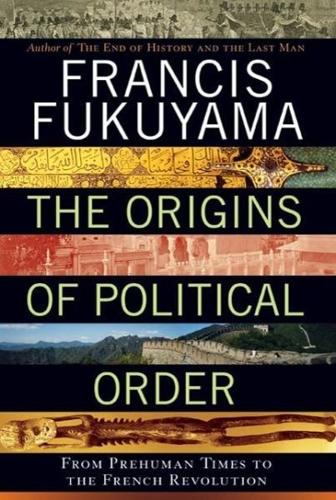
The Origins of Political Order: From Prehuman Times to the French Revolution
by
Francis Fukuyama
Published 11 Apr 2011
The sultan was simply the first among equals; several had been assassinated or removed by Mamluk cliques, and all of the later sultans had to watch their backs for conspiracies. In addition to political instability, the regime faced a fiscal crisis in the late fifteenth century. As a result of disruption of the spice trade by Portuguese naval primacy in the Indian Ocean, the sultan’s revenues began to decline toward the end of the fourteenth century and he turned to increasingly higher rates of taxation. This then compelled economic agents—farmers, traders, and craftsmen—to hone their skills in hiding assets and evading taxes.
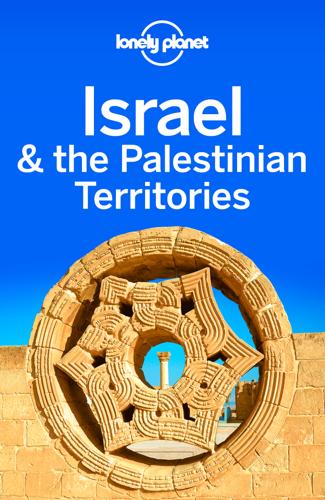
Israel & the Palestinian Territories Travel Guide
by
Lonely Planet
They spoke a form of Aramaic, the lingua franca of the region some 2000 years ago, and were innovative engineers – despite the hostile desert environment, they developed sophisticated irrigation methods and their kings lavishly wasted water in front of guests to show off. At one point, the incense and spice trade route stretched from Yemen and Oman to the Mediterranean, passing through Saudi Arabia, Petra and Judea. As a result, the Negev cities of Avdat, Mamshit, Shivta and Haluza became prosperous, and the desert around them flourished. The atmospheric ruins of these settlements were declared Unesco World Heritage sites in 2005 under the collective designation of the Incense Route – Desert Cities in the Negev.

This Sceptred Isle
by
Christopher Lee
Published 19 Jan 2012
As the great cubes of Portland stone began to be shipped from the Dorset quarries for Wren’s buildings, so there was an even more urgent sort of construction taking place: ship building. While London had struggled with the plague and then with the fire, Charles II and his ministers had sent England to war. As London buried its dead, the admirals and sea generals fought the Dutch. They fought them in the Far East over possessions and the lucrative spice trades. They fought them off West Africa as trade was used to grab possessions. At home, they fought them off Lowestoft with a victory down to English artillerymen rather than good sea tactics. In June 1666 when the Dutch and British fleets engaged off North Foreland, the sound of battle reached London.
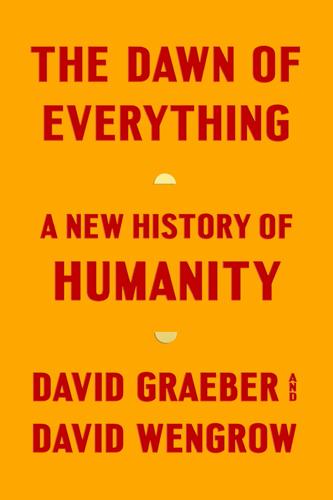
The Dawn of Everything: A New History of Humanity
by
David Graeber
and
David Wengrow
Published 18 Oct 2021
Coffee itself was first cultivated either in Ethiopia or Yemen; the American equivalent was called ‘the Black Drink’ and traces back to at least Hopewell times, when it was used in intense doses for ritual purposes (Hudson 1979; Crown et al. 2012). On Creek daily gatherings: Hahn 2004; Fairbanks 1979. 58. Brebeuf in JR 10: 219. 59. Certainly, the emerging soft drug regime in Europe – which was in many ways also the foundation of the emerging world economy of the time (founded, first on the spice trade, then on the drug, arms and slave trades), was quite different, since it focused so much on new regimes of work. While in the Middle Ages almost everyone had consumed mild intoxicants like wine or beer on a daily basis, the new regime saw a division between mild drugs meant to facilitate work – coffee and tea, especially used as vehicles for sugar, along with tobacco – and hard liquor for the weekends (see various contributions in Goodman, Lovejoy and Sherratt eds 1995). 60.
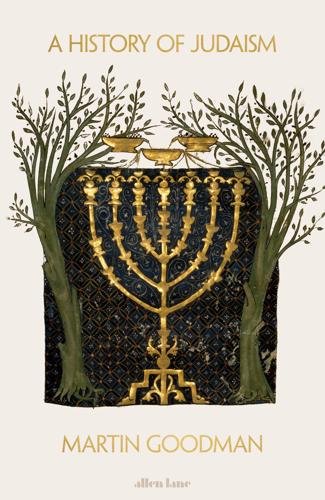
A History of Judaism
by
Martin Goodman
Published 25 Oct 2017
Baghdad had been founded in the eighth century as a distinctively Islamic city alongside ancient Babylon, but by its heyday in the tenth and eleventh centuries it had expanded far beyond its original circular fortifications into a rich urban culture which integrated Christians and Zoroastrians as well as Jews, with a series of palaces, courtyards, ponds and gardens watered by the canals linking the Tigris and Euphrates, six great mosques, a reported 1,500 bath houses and city markets so opulent that they inspired the stories in One Thousand and One Nights. The Jews who lived there must have felt they were at the centre of the civilized world. In later centuries, other Islamic cities with large Jewish populations were also to reach similar levels of prosperity and sophistication, not least Cairo, where the lucrative spice trade between the Indian Ocean and the Mediterranean added to the income from the crops of the fertile Nile valley. The locus of Jewish authority shifted to match. By the time of the Jewish thinker Maimonides in the twelfth century, Cairo eclipsed Baghdad as a centre of Jewish intellectual life. Cairo’s greatest period was in the thirteenth and fourteenth centuries under the Mamluk sultanate, when sultans and emirs competed in the erection of mosques, colleges and monasteries, with an ever-growing population, intensive commerce, gardens and pavilions.
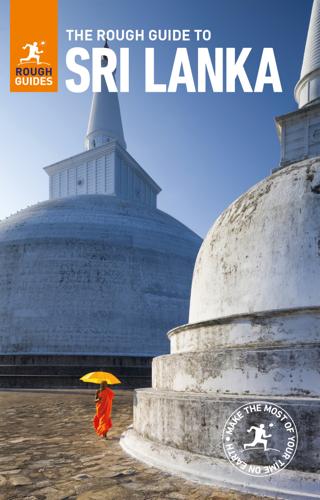
The Rough Guide to Sri Lanka
by
Rough Guides
Published 21 Sep 2018
It’s one of the west coast’s largest settlements, but the long stretch of beach north of town remains reasonably unspoiled, dotted with a string of upmarket hotels. Sitting next to the broad estuary of the Kalu Ganga, or “Black River”, from which it takes its name, Kalutara was formerly an important spice-trading centre, controlled at various times by the Portuguese, Dutch and British. Nowadays, it’s more famous as the source of the island’s finest mangosteens (in season June–Sept). Gangatilaka Vihara Kalutara announces its presence via the immense white dagoba of the Gangatilaka Vihara, immediately south of the long bridge across the Kalu Ganga.
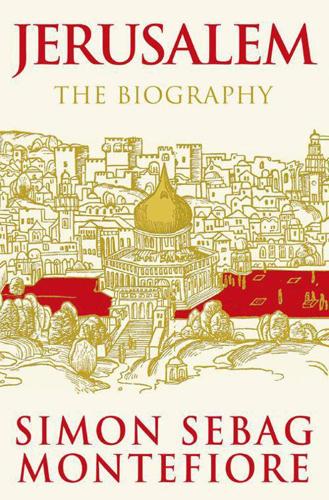
Jerusalem: The Biography
by
Simon Sebag-Montefiore
Published 27 Jan 2011
Their talented and depraved family would dominate Jerusalem for over a century and essentially create the Temple Mount and Western Wall as they are today. Antipater helped Hyrcanus flee to Petra, the 'rose red city half as old as time', the Nabataean Arab capital. King Aretas (Harith in Arabic), fabulously rich from the Indian spice trade and related to Antipater's Arab wife, helped them defeat King Aristobulos, who fled back to Jerusalem. The Arab king gave chase, besieging Aristobulos in the fortified Temple Mount. But all this sound and fury signified nothing, because to the north Pompey was setting up headquarters in Damascus.
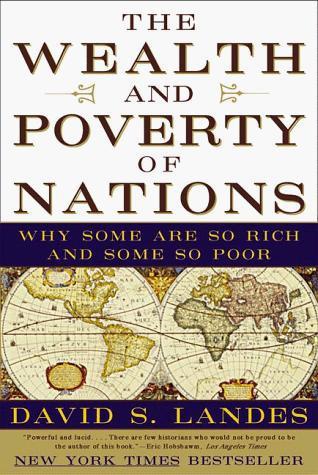
The Wealth and Poverty of Nations: Why Some Are So Rich and Some So Poor
by
David S. Landes
Published 14 Sep 1999
When the news came of the first successful Dutch voyages to the East Indies [Cornells Houtman, 1595], Venice, as well as Portugal, could see the imminent, “utter overthrow” of the older trade.5 By 1625, the Venetian customs classified spices as “western commodities”: they now came from the Atlantic rather than the Near East.) To make up for the shrinking spice trade, the Portuguese got into intra-Asian exchange. This had flourished well before the Europeans came: Gujrati, Javanese, and Chinese merchants trading pepper and spices for Indian and Chinese textiles and Chinese porcelain; Arab merchants walking and shipping slaves from Africa throughout the Muslim world; ships from everywhere moving teak, sandalwood, and other fine woods; ivory and rhinoceros horn, valued as an aphrodisiac; also rare and not-so-rare animals, including monkeys, tigers, and above all horses and elephants, for use in war and ceremony; and everyone bringing precious metals to balance accounts (silver from the New World to India and China, gold from East Africa and Japan).
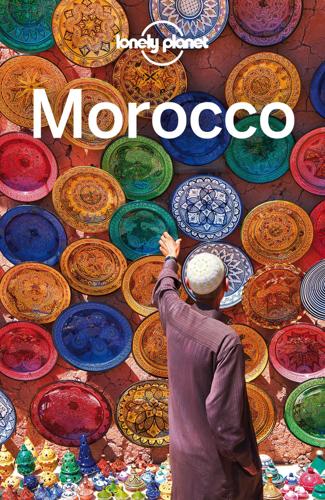
Lonely Planet Morocco (Travel Guide)
by
Lonely Planet
,
Paul Clammer
and
Paula Hardy
Published 1 Jul 2014
Despite encroaching modernity, with motorways joining mosques and kasbahs as features of the landscape, Moroccan people remain closely connected to the environment. Nomadic southern ‘Blue Men’ brave the desert’s burning expanses in robes and turbans, mobile phones in hand. Traditional life continues – with tweaks – in the techniques of Berber carpet makers, in date cooperatives, in medina spice trading, and in the lifestyles in mountain hamlets and ports like Essaouira. Moroccan Activities Meeting the Moroccan people involves nothing more than sitting in a cafe and waiting for your mint tea to brew. The trick is to leave enough time to watch the world go by with the locals when there’s so much else to fit in: hiking up North Africa’s highest peak, learning to roll couscous, camel trekking, shopping in the souqs, getting lost in the medina, and sweating in the hammam.

Egypt Travel Guide
by
Lonely Planet
It also served as a thriving centre of trade and export between the Nile Valley and the Red Sea and beyond. Even during its period of decline, the city remained a major settlement and was sufficiently important for the Ottomans to fortify it during the 16th century. Later the British beat the French for control of Al-Quseir and for some time it was the main import channel for the spice trade from India to Britain. However, the opening of the Suez Canal in 1869 put an end to all this and the town’s decline accelerated, with only a brief burst of prosperity as a phosphate-processing centre in the early decades of the 20th century. Al-Quseir Sights 1 Faran Mosque B2 2 Granary B2 3 Old Police Station B3 4 Ottoman Fortress A2 5 Shrine of Abdel Ghaffaar al-Yemeni A2 Sleeping 6Al-Quseir HotelB2 Eating 7 Restaurant Marianne A3 Sights Ottoman Fortress Historic Building Offline map Google map (admission E£15; 9am-5pm) Much of the original exterior wall of this small fortress remains intact, although it was modified several times by the French, as well as the British, who permanently altered the fortress by firing some 6000 cannonballs upon it during a heated battle in the 19th century.
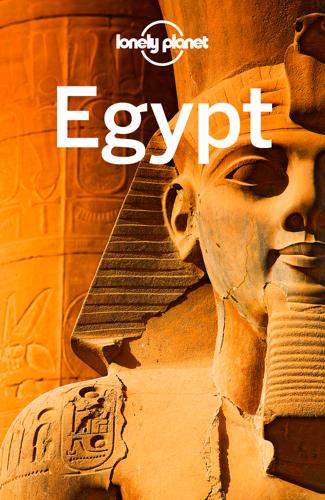
Egypt Travel Guide
by
Lonely Planet
It also served as a thriving centre of trade and export between the Nile Valley and the Red Sea and beyond. Even during its period of decline, the city remained a major settlement and was sufficiently important for the Ottomans to fortify it during the 16th century. Later the British beat the French for control of Al-Quseir and for some time it was the main import channel for the spice trade from India to Britain. The opening of the Suez Canal in 1869 put an end to all this, however, and the town’s decline accelerated, with only a brief burst of prosperity as a phosphate-processing centre in the early decades of the 20th century. Al-Quseir 1Top Sights 1Old TownB2 1Sights 2Faran MosqueB2 3GranaryB2 4Old Police StationB3 5Ottoman FortressA2 6Shrine of Abdel Ghaffaar al-YemeniA2 4Sleeping 7Al-Quseir HotelB2 5Eating 8Restaurant MarianneA3 1Sights Al-Quseir is a lesser-known dive destination; most operators are affiliated with hotels.
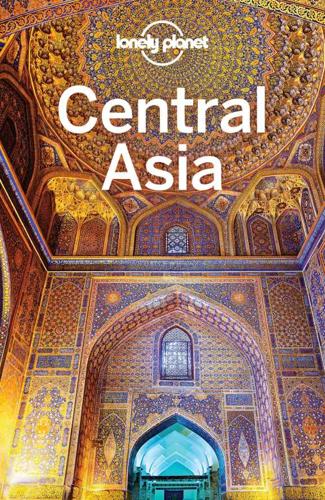
Lonely Planet Central Asia (Travel Guide)
by
Lonely Planet
,
Stephen Lioy
,
Anna Kaminski
,
Bradley Mayhew
and
Jenny Walker
Published 1 Jun 2018
oSilk Road SpicesTEAHOUSE ( MAP GOOGLE MAP ; %+998 93 383 4034, 65-224 22 68; www.silkroadspices.co; Halim Ibodov 5; set tea & sweets per person 20,000S; h9am-8pm) This boutique teahouse offers a delightful diversion from all that sightseeing. It has three spicy varieties of tea, as well as cinnamon or cardamom coffee, served with four types of local sweets such as halva and nabat (crystal sugar) in a cosy, traditional atmosphere. The owner's family has been working in the spice trade for 600 years. Tea & Coffee KhonaCAFE ( MAP GOOGLE MAP ; Toki-Sarrafon; h9am-11pm) The switched-on management behind the Minzifa Restaurant opened this charming cafe in the Toki-Sarrafon bazaar. The location is dreamy, housed in a former mosque, whose traditional architecture includes some fine original wooden beams carved with Islamic calligraphy.
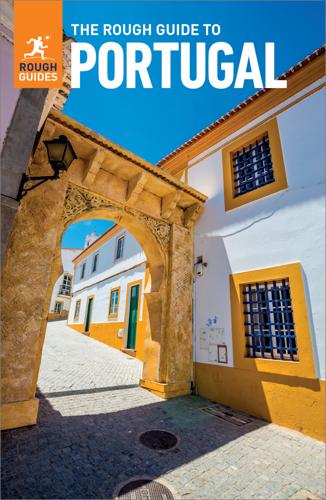
The Rough Guide to Portugal (Travel Guide eBook)
by
Rough Guides
Published 1 Mar 2023
Commissioned by the king, this is a far more exuberant structure with an elaborately carved south portal opening onto a nave where the vaulting ribs seem to sprout out of the thin, trunk-like columns like leaves from a palm tree. Belém was the point from which many of the Portuguese navigators set forth, and the new building was largely subsidized by the new, lucrative spice trade. The Jéronimos monastery is the most unified expression of the new style, but Manuel I also commissioned lavish extensions to existing buildings, such as the Convento de Cristo at Tomar, which is arguably the most brilliant and original expression of Manueline decoration. The armillary sphere – a navigational instrument – became the personal emblem of King Manuel, and frequently appears in Manueline decoration.
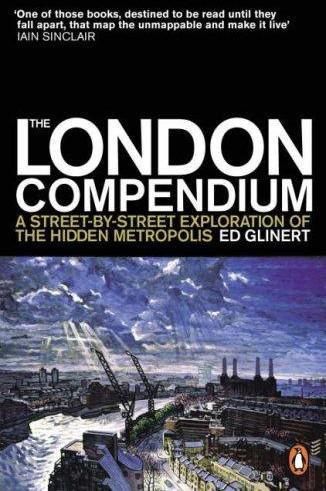
The London Compendium
by
Ed Glinert
Published 30 Jun 2004
Every 17 October the Lion Sermon is read, commemorating the deliverance of Sir John Gayer, Lord Mayor of London in 1646, from a lion in the Arabian desert. south side: Fenchurch Street to Gracechurch Street East India House, junction with Lime Street The East India Company, which became the City’s most powerful company, was established here in 1600 to challenge the Dutch–Portuguese monopoly of the spice trade in the Orient, and gained its first foothold in the East some ten years later when it seized control of the nutmeg-producing island of Puloroon, a feat that so impressed James I that, on hearing the news, he styled himself ‘King of England, Scotland, Ireland, France… and Puloroon’. After tussling with the Dutch, Portuguese and French for control of trade routes in the area over the next 100 years, the company began to establish itself as a major force, opening up Hong Kong and Singapore to the West, introducing tea to Britain, spices to the West Indies, opium to China, porcelain to Russia and coffee to Arabia and establishing trading posts in Madras and Calcutta.
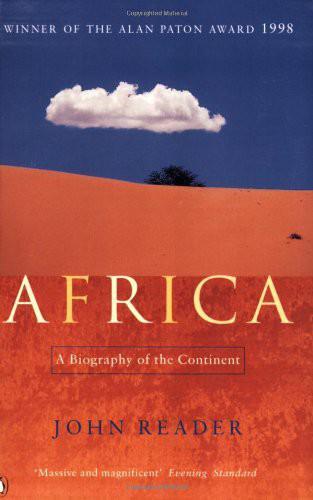
Africa: A Biography of the Continent
by
John Reader
Published 5 Nov 1998
The intelligence clearly would have been helpful to Portugal's seaborne expeditions. The two agents travelled safely through Alexandria, Cairo and Suez to Aden, where they parted. Paiva crossed the Red Sea en route back to Portugal while Covilhã sailed to India, where he collected details of the spice trade before taking a ship to Sofala on the East African coast. Believing that Paiva had by then returned to Portugal, Covilhã too began to make his way home. In Cairo he was contacted by two Jewish agents of King John who told him that Paiva had failed to reach Portugal and was believed to be dead. Covilhã sent one of the agents back to Portugal with his report on India and East Africa, and returned to Aden with the other.
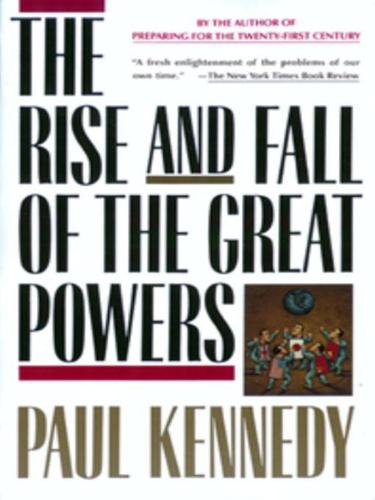
The Rise and Fall of the Great Powers: Economic Change and Military Conflict From 1500 to 2000
by
Paul Kennedy
Published 15 Jan 1989
Following the new tactic that “they were by no means to board, but to fight with the artillery,” the Portuguese crews were virtually invincible at sea.29 On land it was quite a different matter, as the fierce battles (and occasional defeats) at Aden, Jiddah, Goa, and elsewhere demonstrated; yet so determined and brutal were these western invaders that by the mid-sixteenth century they had carved out for themselves a chain of forts from the Gulf of Guinea to the South China Sea. Although never able to monopolize the spice trade from the Indies—much of which continued to flow via the traditional channels to Venice—the Portuguese certainly cornered considerable portions of that commerce and profited greatly from their early lead in the race for empire.30 The evidence of profit was even greater, of course, in the vast land empire which the conquistadores swiftly established in the western hemisphere.
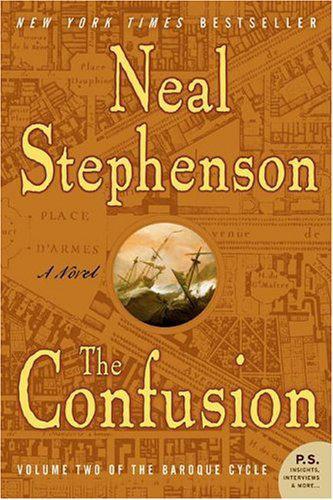
The confusion
by
Neal Stephenson
Published 13 Apr 2004
It is what every Jew, Puritan, Dutchman, Huguenot, Armenian, and Banyan aspires to—it is what built the Navies and palaces of Europe, the Court of the Great Mogul in Shahjahanabad, and many other prodigies besides. And yet in the world of trade, it is common knowledge that no circuit—not the slave trade of the Caribbean, not the spice trade of the Indies—exceeds the Manila-to-Acapulco run in sheer profit. The wealthiest Banyans in Surat and bankers in Genoa lay their perfumed heads on silken pillows at night, and dream of sending a few bales of cargo across the Pacific on the Manila Galleon. Even with all the dangers, and the swingeing duty that must be shelled out to the Viceroy, the profits never fall below four hundred percent.
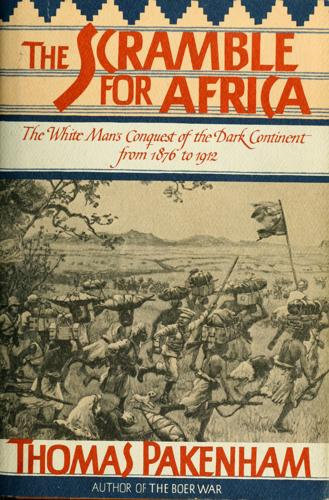
The scramble for Africa, 1876-1912
by
Thomas Pakenham
Published 19 Nov 1991
To tap this West African gold was one of the principal aims of the Portuguese navigators of the fifteenth century. No one knew where, beyond the Sahara, in what kingdoms of forest or swamp, the trickle of gold originated. But the Portuguese saw they could divert this trade from Italy to Portugal if they could find a direct seaway to and from West Africa. By the same token, they could grab the Indian spice trade and the Chinese silk trade if their seaway to Africa could be extended to the Indies. By the 1480s the first Portuguese ships were loading gold in the Senegal river and at El Mina in the Gulf of Guinea, gold apparently exported westwards and southwards from the unknown goldfields. Each year brought the Portuguese caravels further south, to the rainforests of the equator and the dry scrublands beyond.
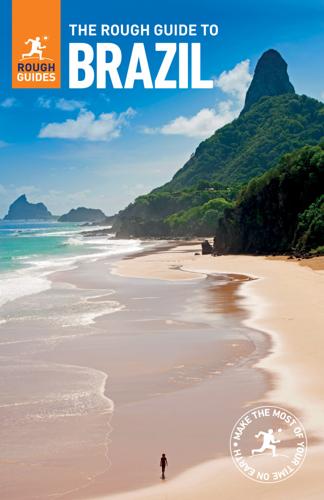
The Rough Guide to Brazil
by
Rough Guides
Published 22 Sep 2018
Reserving the name of the continent for himself, he spent several months sailing along the coast, calendar in hand, baptizing places after the names of saints’ days: entering Guanabara Bay on New Year’s Day 1502, he called it Rio de Janeiro. The land was called Terra do Brasil, after a tropical redwood that was its first export: the scarlet dye it yielded was called brasa, “a glowing coal”. Portugal, preoccupied with the lucrative Far East spice trade, neglected this new addition to its empire for a few decades; apart from some lumber camps, they made no attempt at settlement. Other European countries were not slow to move in, with French (see above) and English privateers in the lead. Finally, in 1532, King João III was provoked into action.
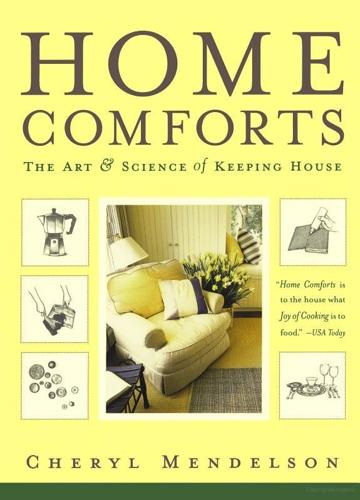
Home Comforts: The Art and Science of Keeping House
by
Cheryl Mendelson
Published 4 Nov 1999
Food Marketing Institute (“Dinnertime USA,” and “The Food Keeper,” developed in cooperation with the Cornell University Institute of Food Science, Cornell Cooperative Extension). National Cattlemen’s Beef Association (Louise A. Berner, “Heterocyclic Amines in Foods and Their Implications to Health: A Special Report of Current Status”). Soap and Detergent Association (“Understanding Automatic Dishwashing” and “Automatic Dishwashing Procedures”). American Spice Trade Association (“Spice Questions Consumers Often Ask”). Tea Council of the U.S.A. I have also relied on many exceptionally well-informed books, notably: M. R. Adams and M. O. Moss, Food Microbiology (Royal Society of Chemistry, 1995; Ronald M. Atlas, Microorganisms in Our World (Mosby, 1994); Janet Baily, Keeping Food Fresh (Doubleday, 1985); Paul D.

Southeast Asia on a Shoestring Travel Guide
by
Lonely Planet
Published 30 May 2012
European Expansion Melaka fell to the Portuguese in 1511 and European eyes were soon settling on the archipelago’s riches, prompting two centuries of unrest as the Portuguese, Spanish, Dutch and British wrestled for control. By 1700 the Dutch held most of the trump cards, with the Dutch East India Company (VOC) controlling the region’s lucrative spice trade and becoming the world’s first multinational company. Following the VOC’s bankruptcy, however, the British governed Java under Sir Stamford Raffles between 1811 and 1816, only to relinquish control again to the Dutch after the end of the Napoleonic wars, who then held control of Indonesia until its independence 129 years later.

Italy
by
Damien Simonis
Published 31 Jul 2010
Grab a stool and a glass of Prosecco with your tangy folpetti (baby octopus) salad and plump prawn crudi, or enjoy it dockside on the Grand Canal. Osteria La Zucca (Map; 041 524 15 70; www.lazucca.it; Calle del Tentor, Santa Croce 1762; small plates €5-10; 12.30-2.30pm & 7-10.30pm Mon-Sat) Vegetablecentric seasonal small plates bring spice-trade influences to local produce: zucchini with ginger zing, curried carrots with yoghurt, and rice pudding with San Erasmo strawberries. Roast lamb is respectable here too, but the veggies have star quality. Ae Oche (Map; 041 524 11 61; www.aeoche.com; Calle del Tintor 1552a; pizzas €7-13; noon-2.30pm & 7-10.30pm Mon-Fri, noon-2.30pm & 7-11.30pm Sat & Sun) Architecture students and budget-minded foodies converge here for wood-fired pizzas and ale at excellent prices.
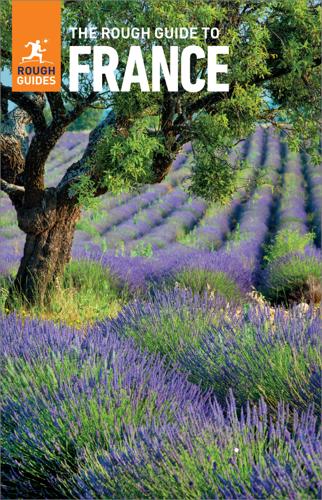
The Rough Guide to France (Travel Guide eBook)
by
Rough Guides
Published 1 Aug 2019
In 1950 he instituted the internationally renowned chamber music festival (prades-festival-casals.com), held annually from late July to mid-August, the usual venue being the abbey of St-Michel-de-Cuixà (see below). The thriving Tuesday morning market is not to be missed, with its produce strongly influenced by Catalan and North African culture; you’ll find paella, churros and fresh Moroccan spices, traded to the sounds of accordion buskers and congregations of elderly men chatting in French-Catalan dialect. Abbaye St-Michel-de-Cuxà May–Sept daily 9.30–11.50am & 2–6pm; Oct–April Mon–Sat 9.30–11.50am & 2–5pm • €6 • 04 68 96 15 35, abbaye-cuxa.com Three kilometres south of Prades stands one of the loveliest abbeys in France, the eleventh-century St-Michel-de-Cuxà.